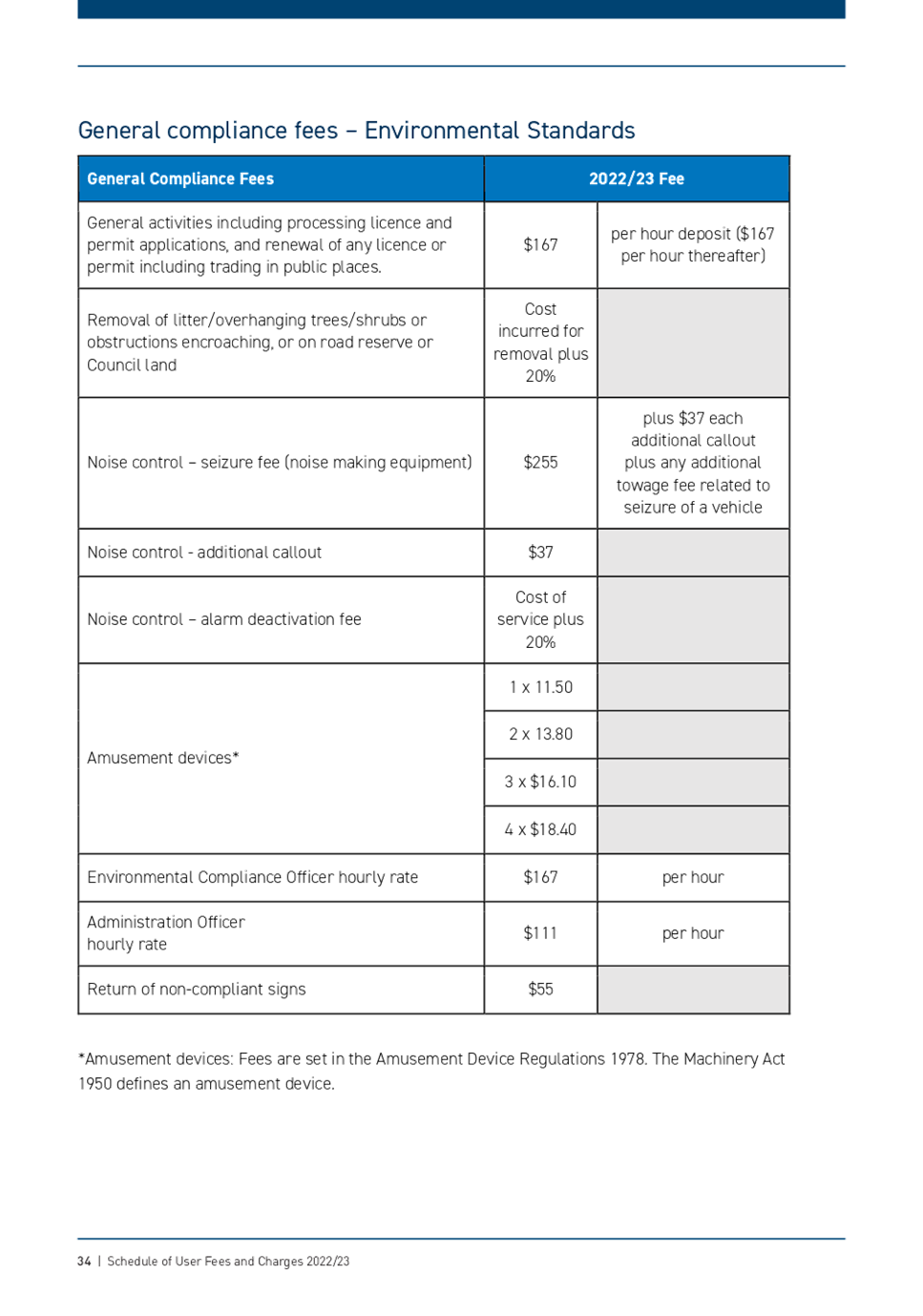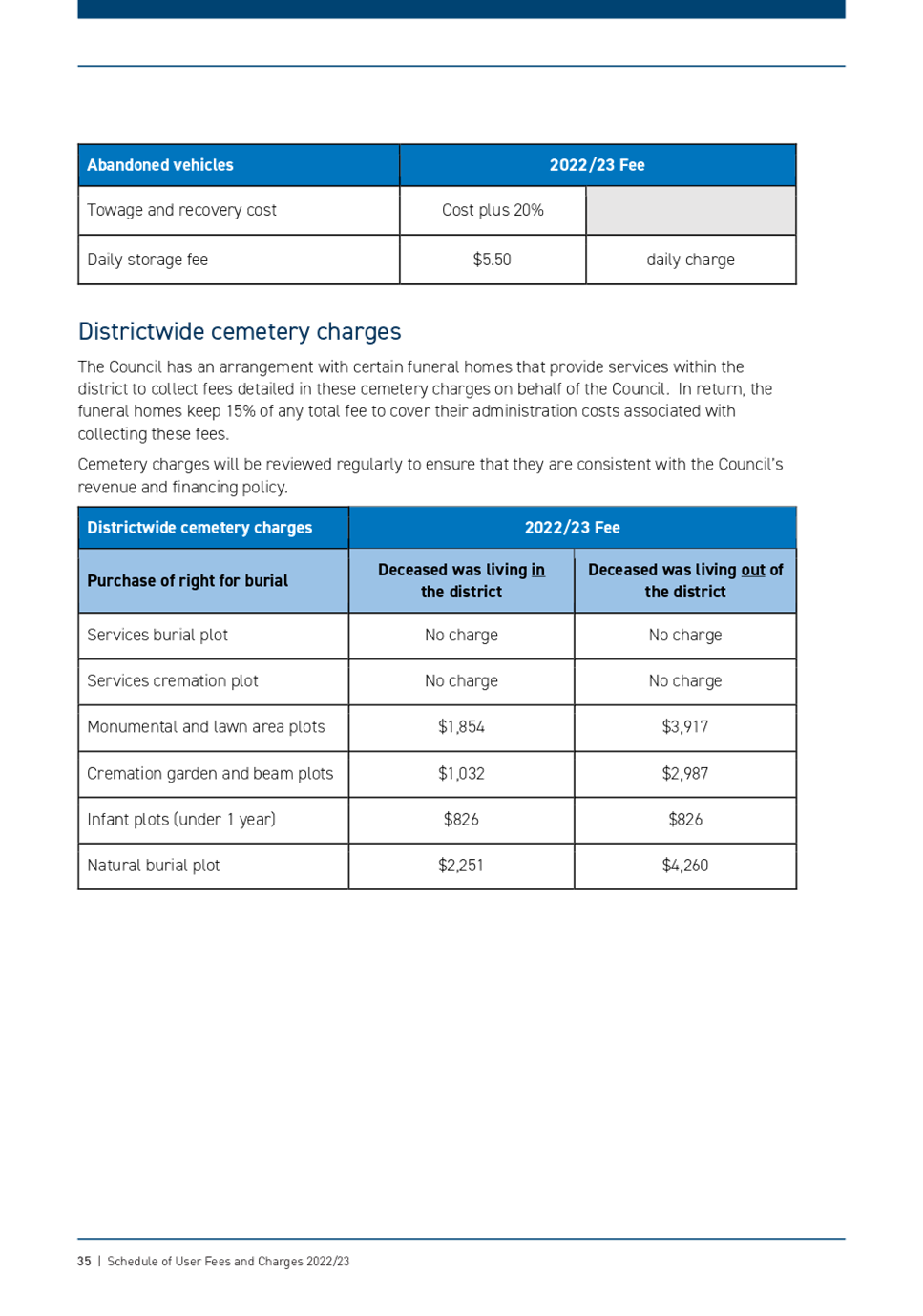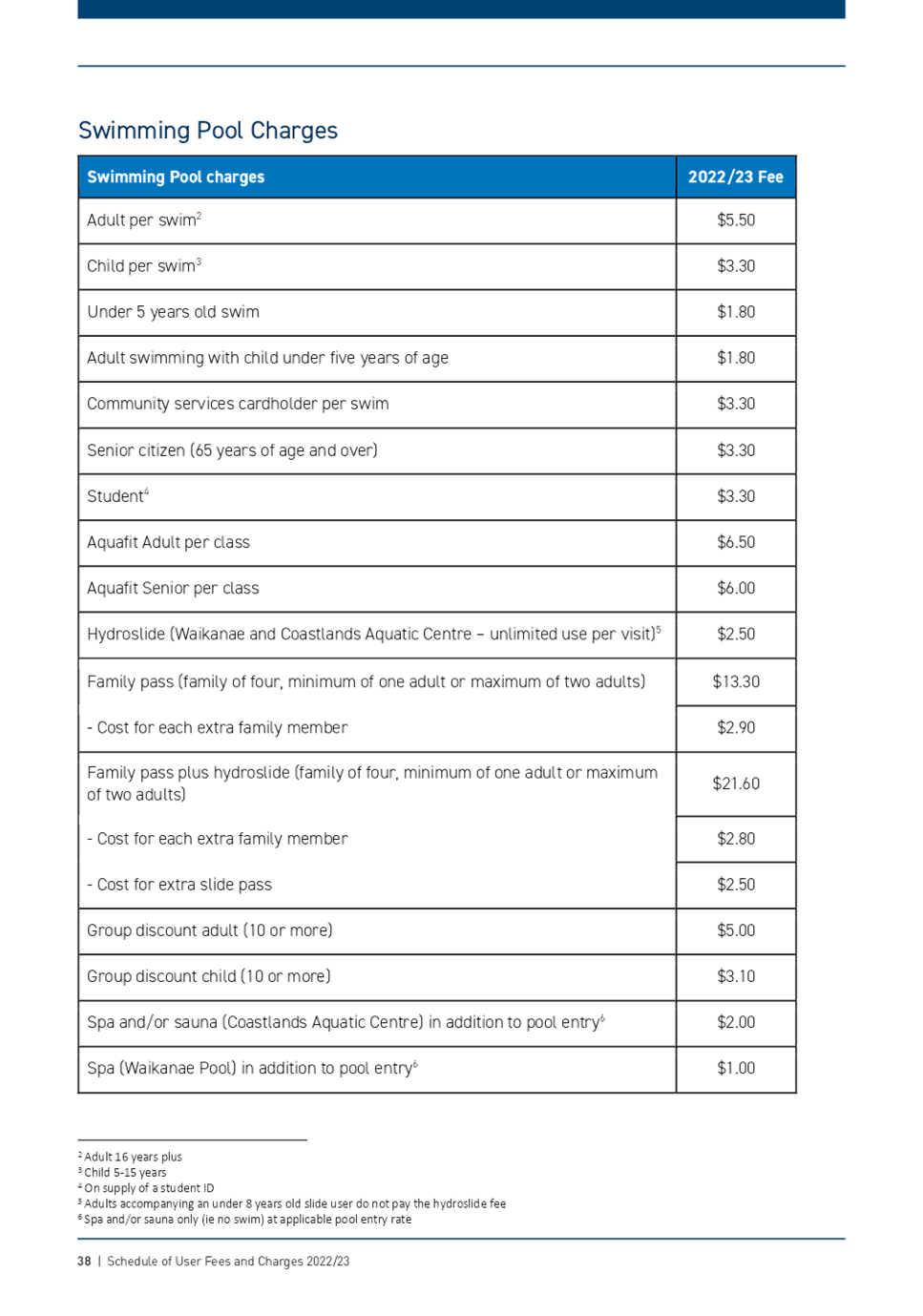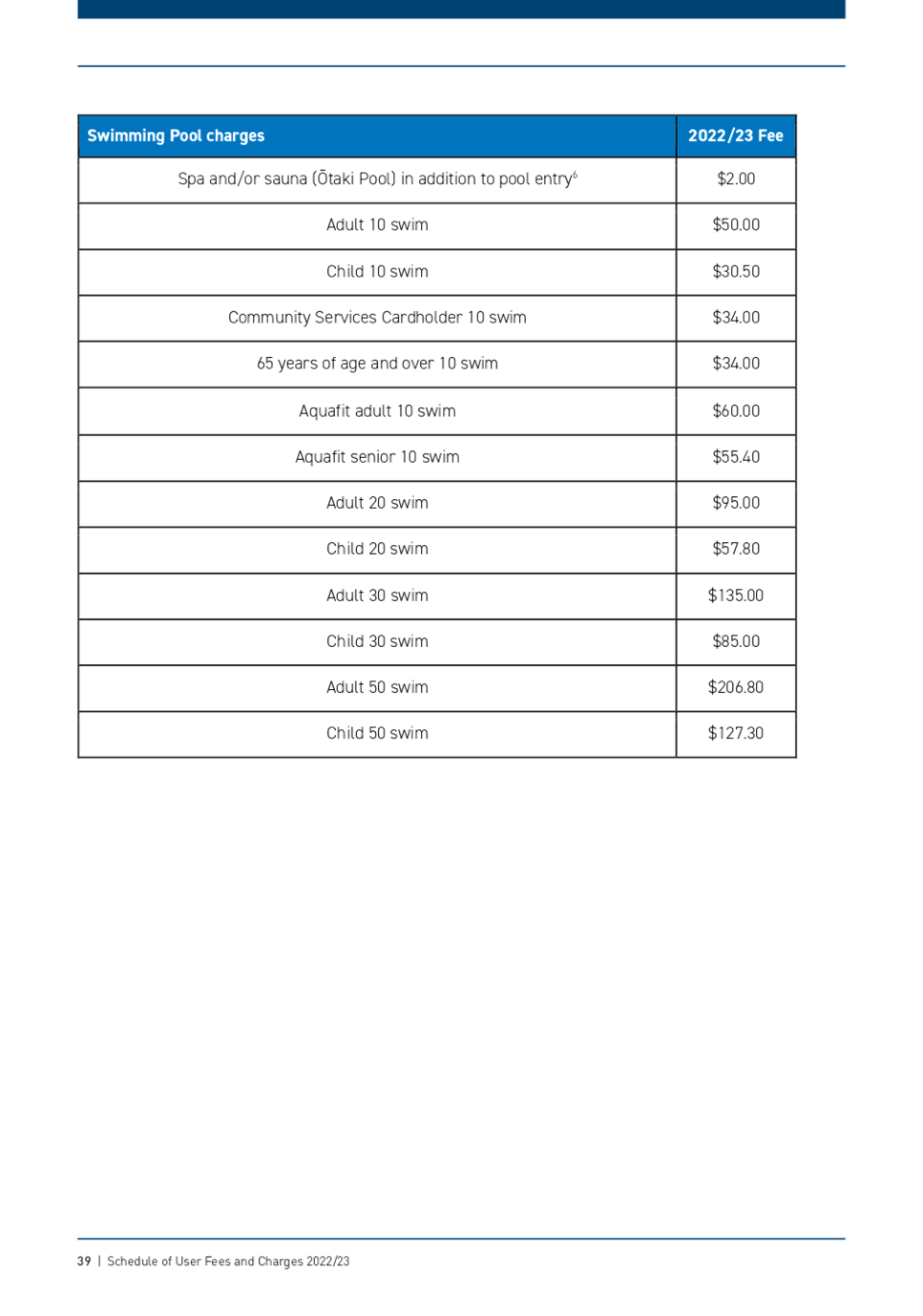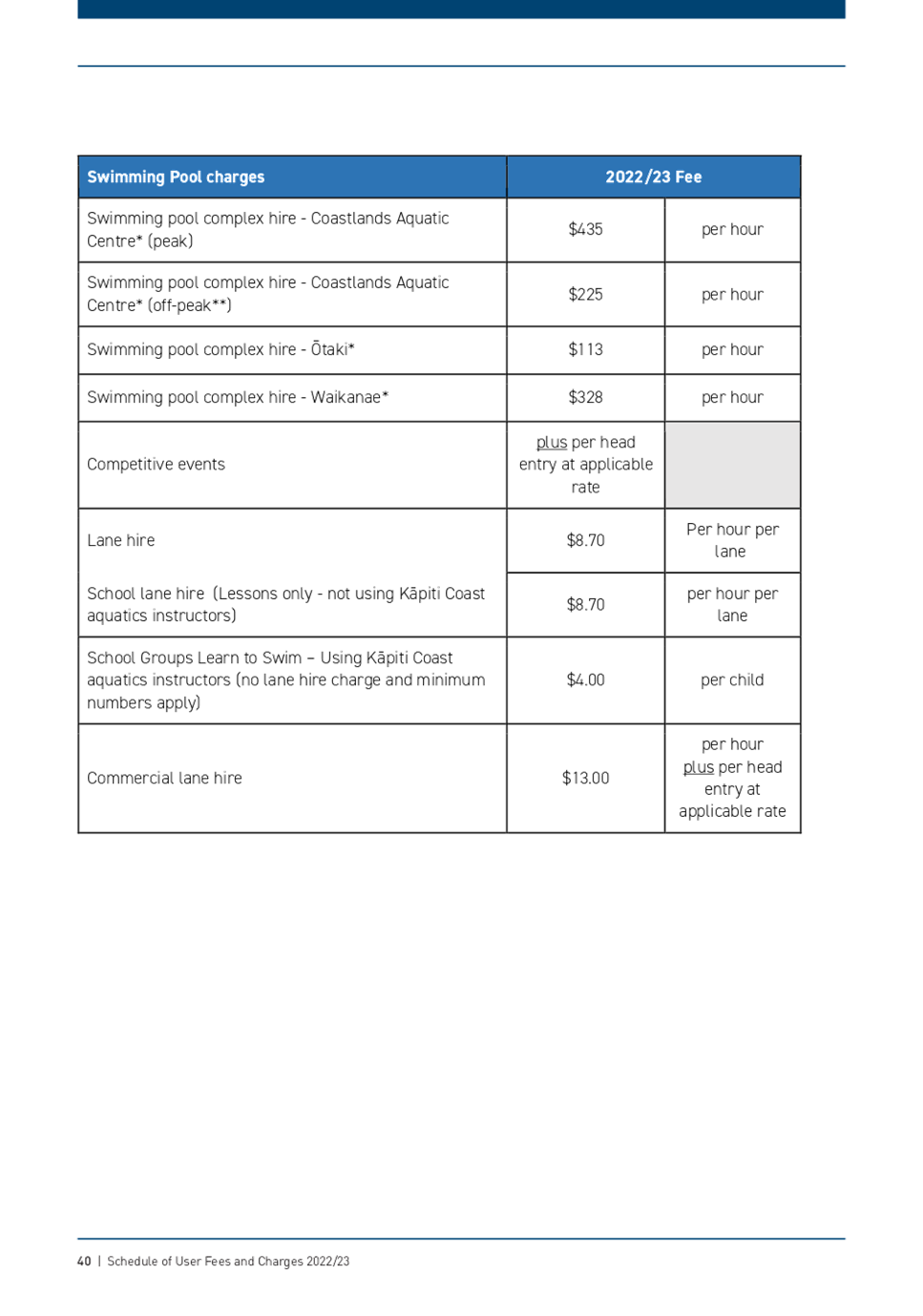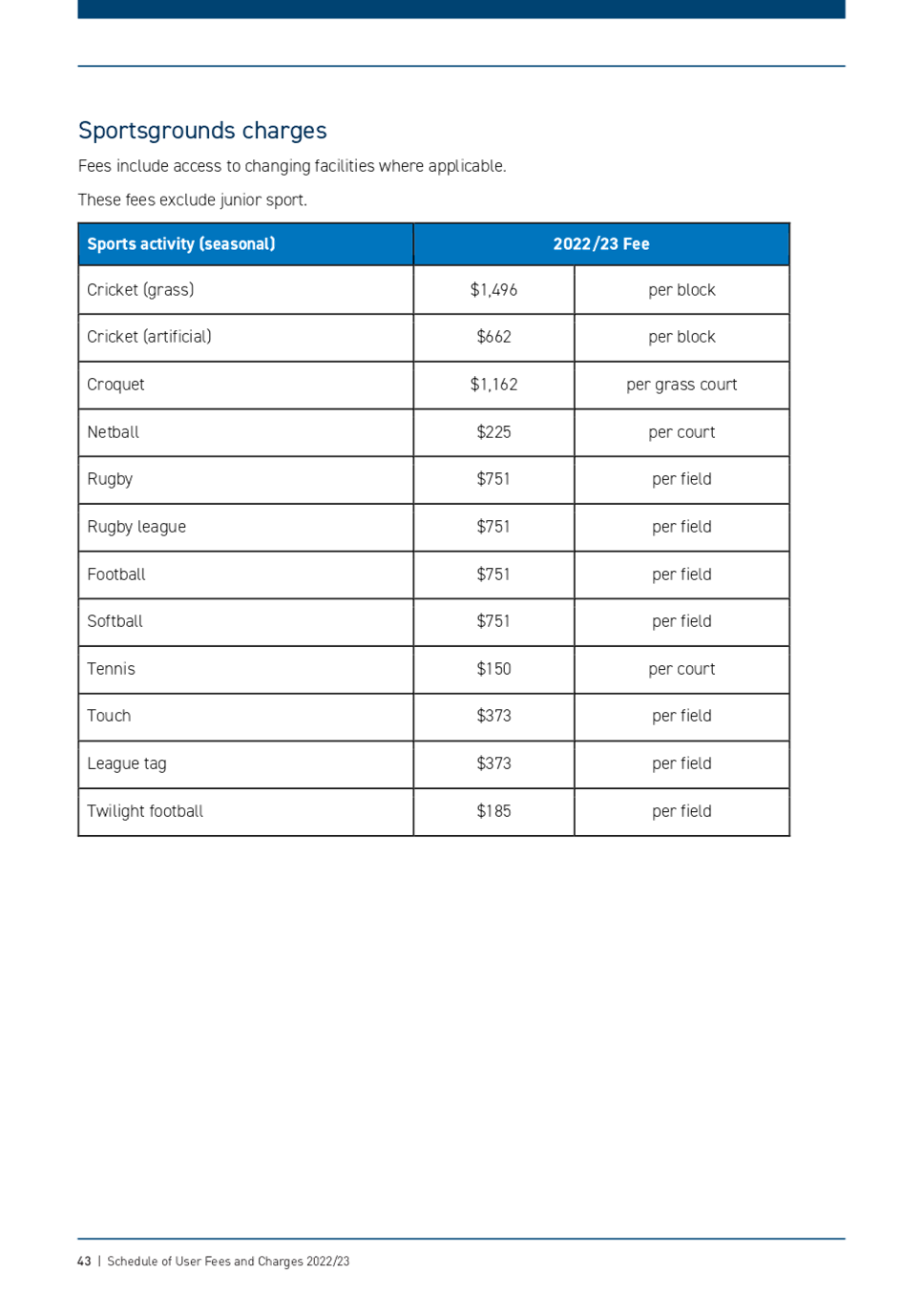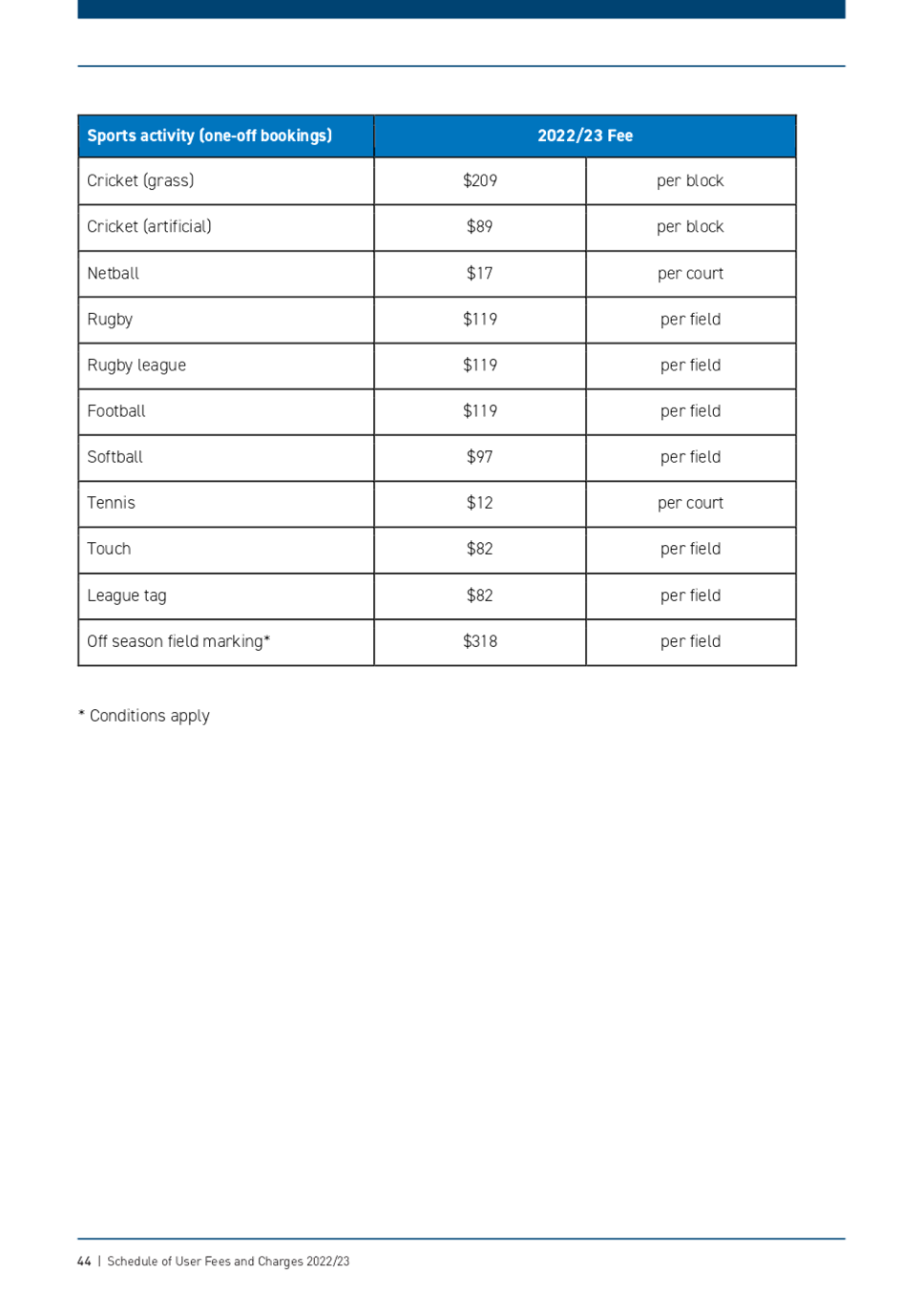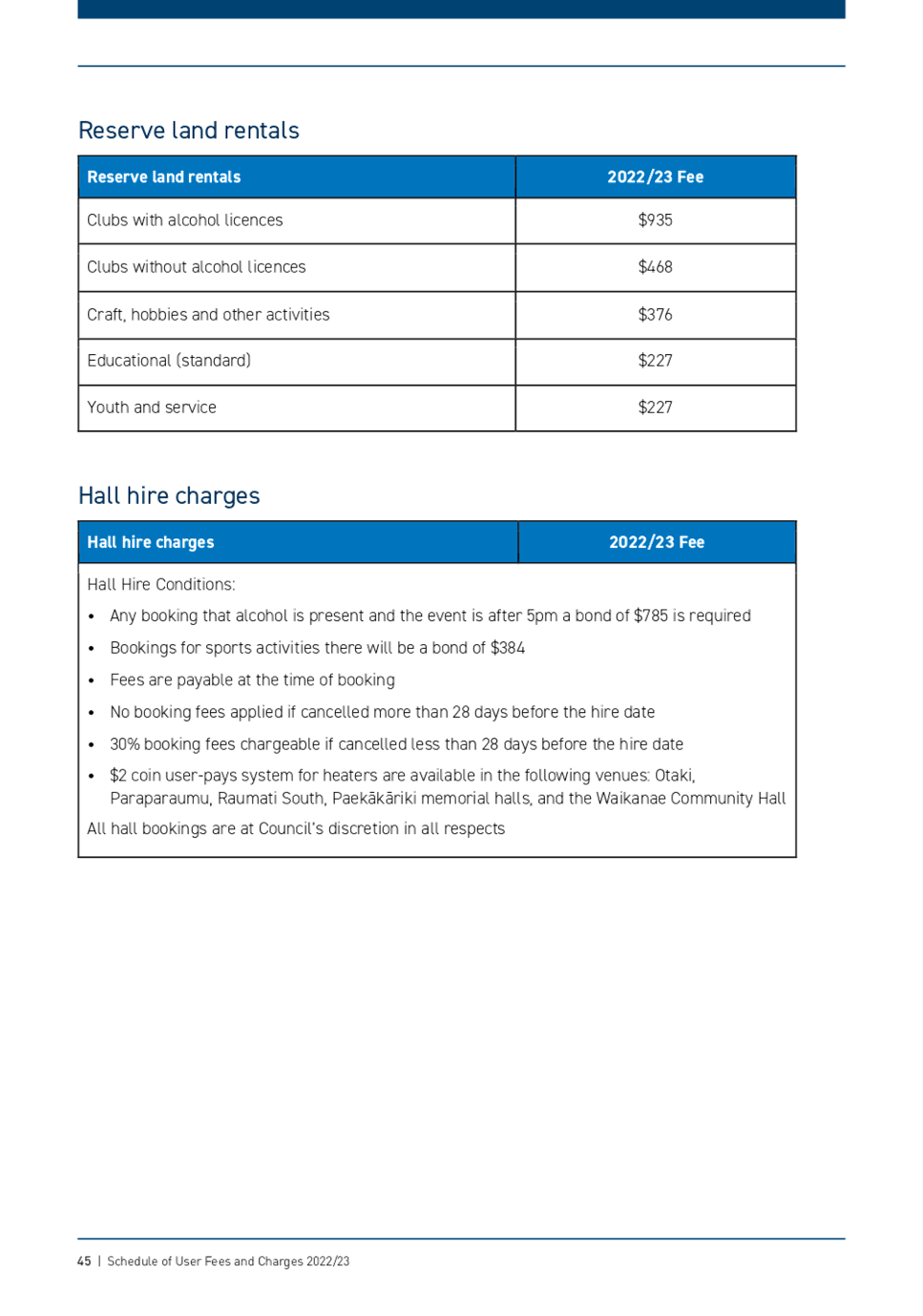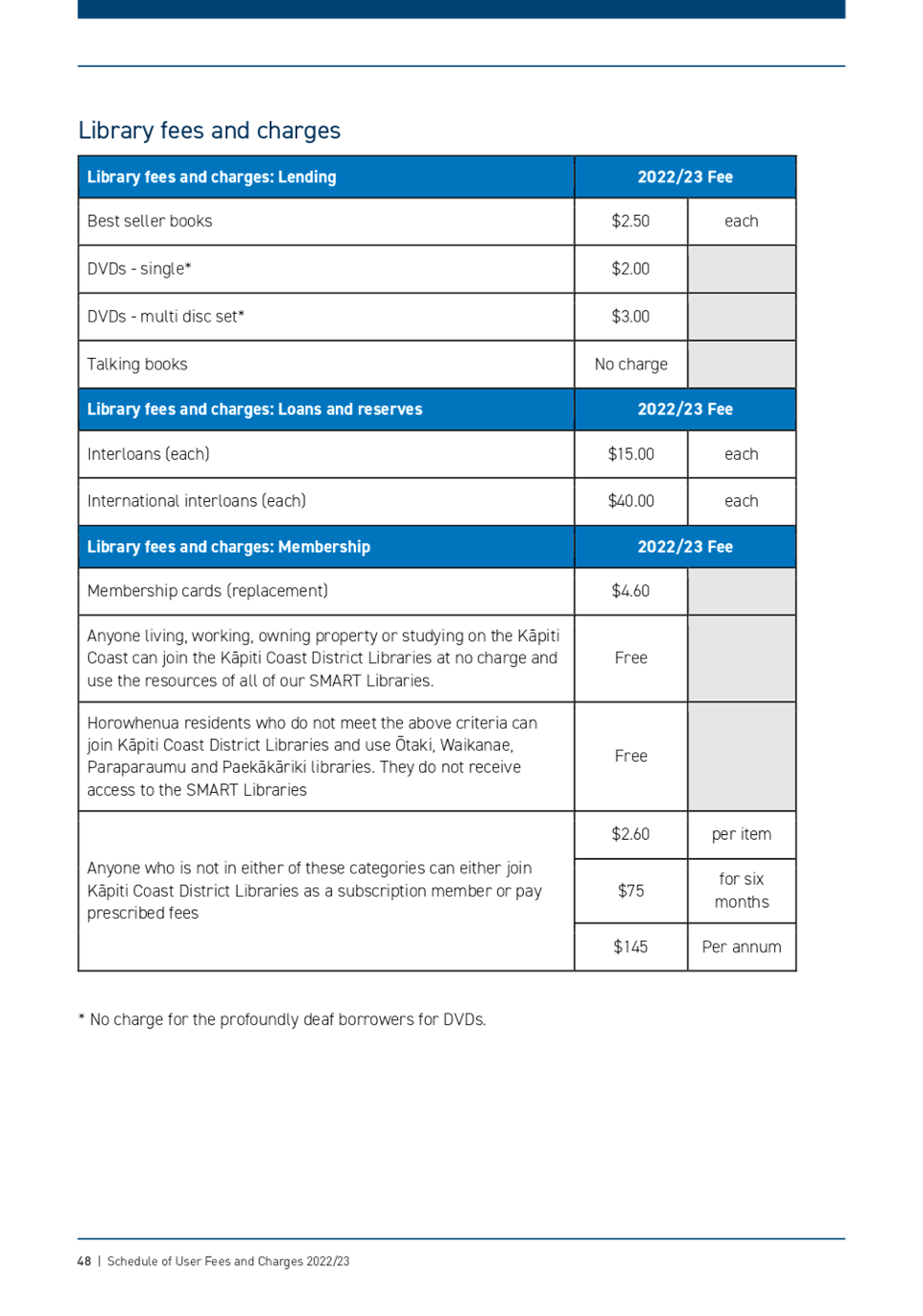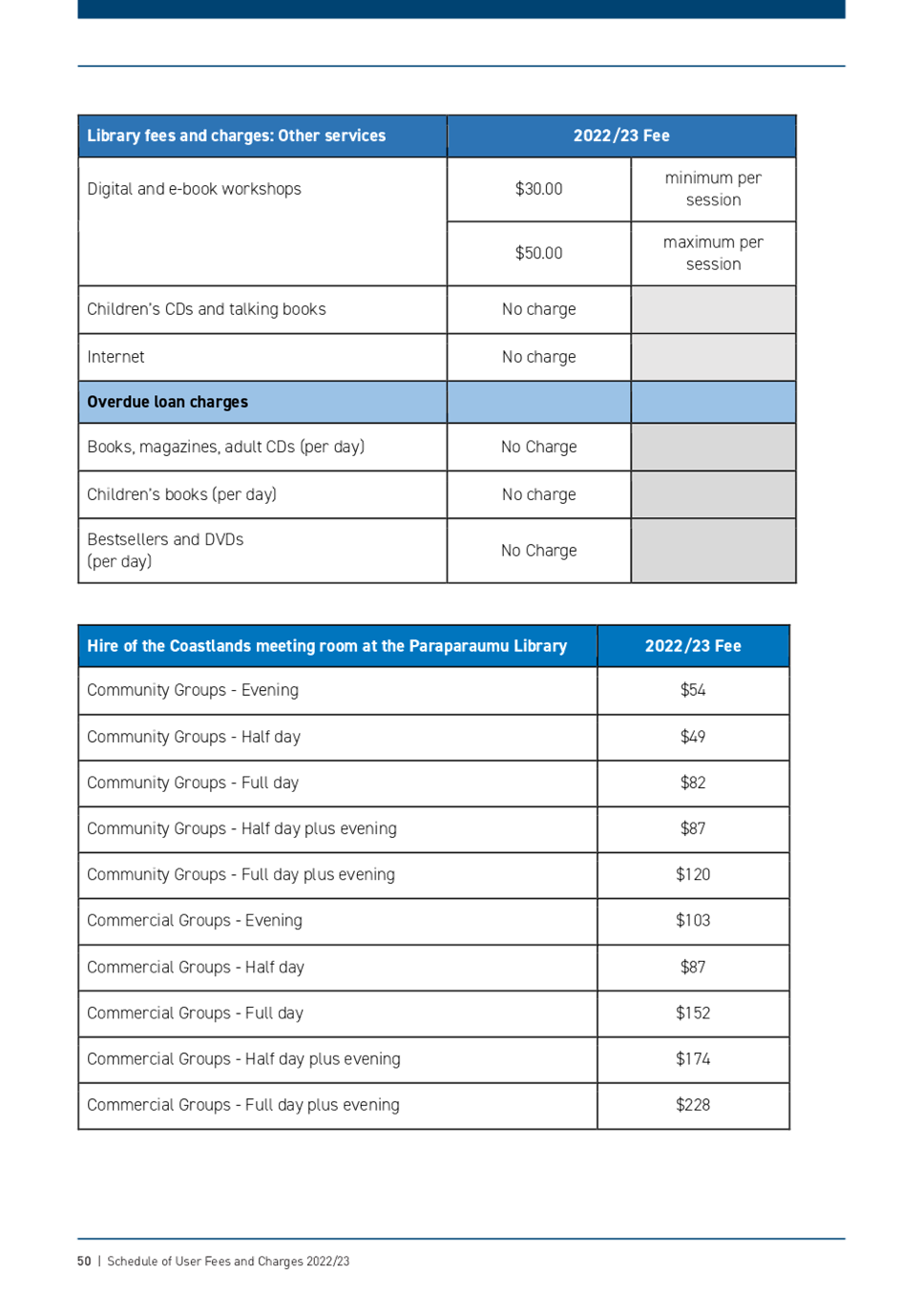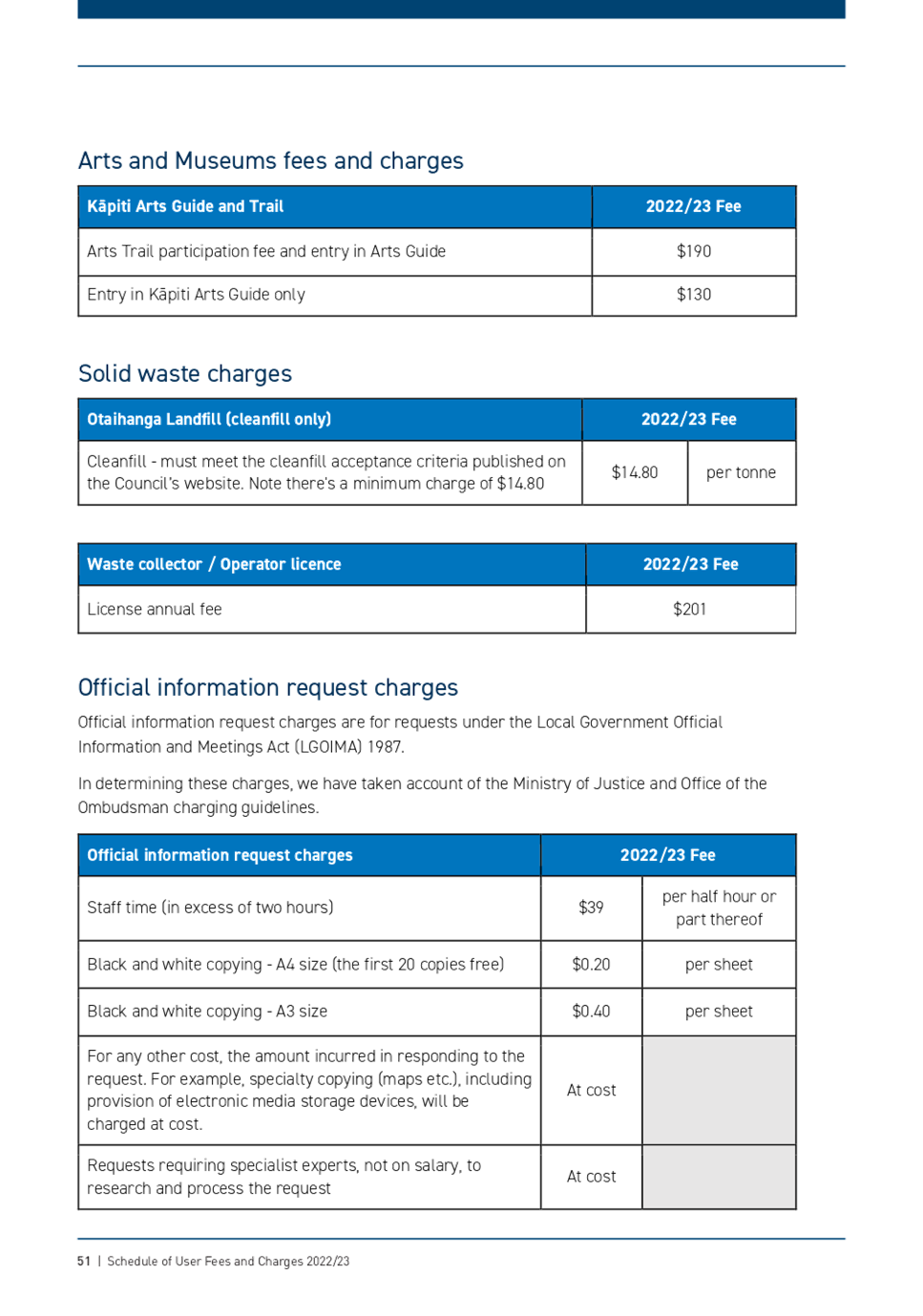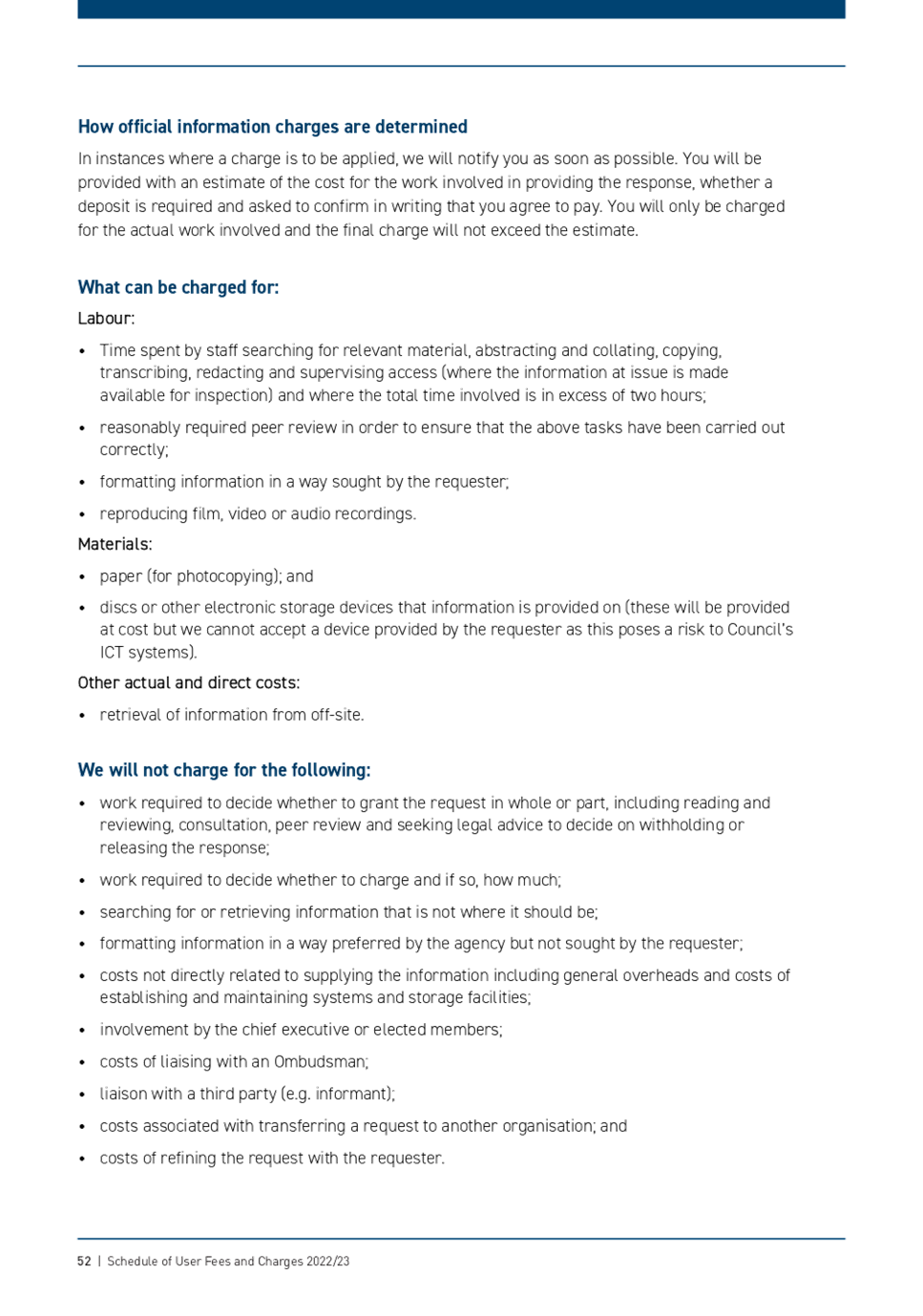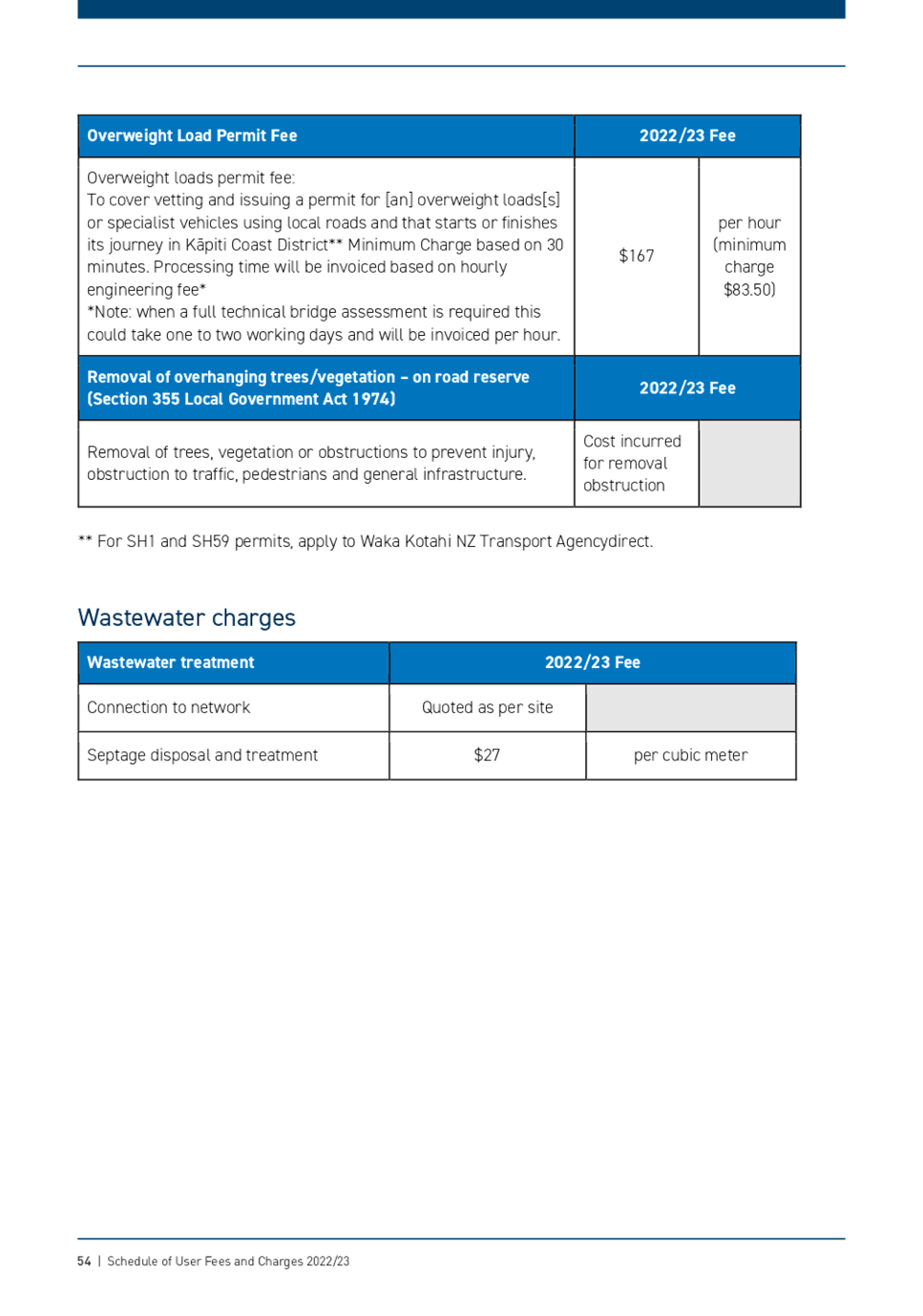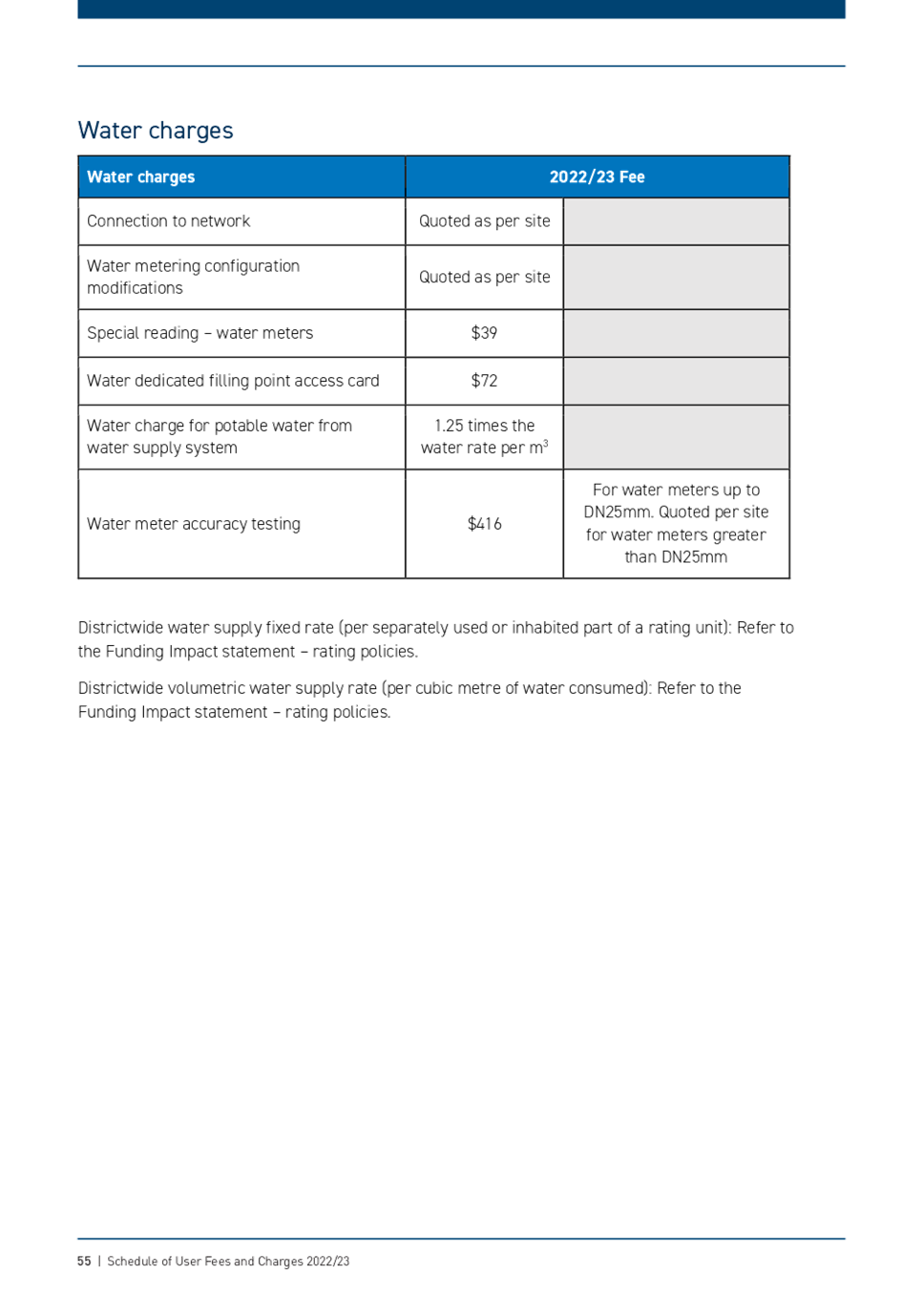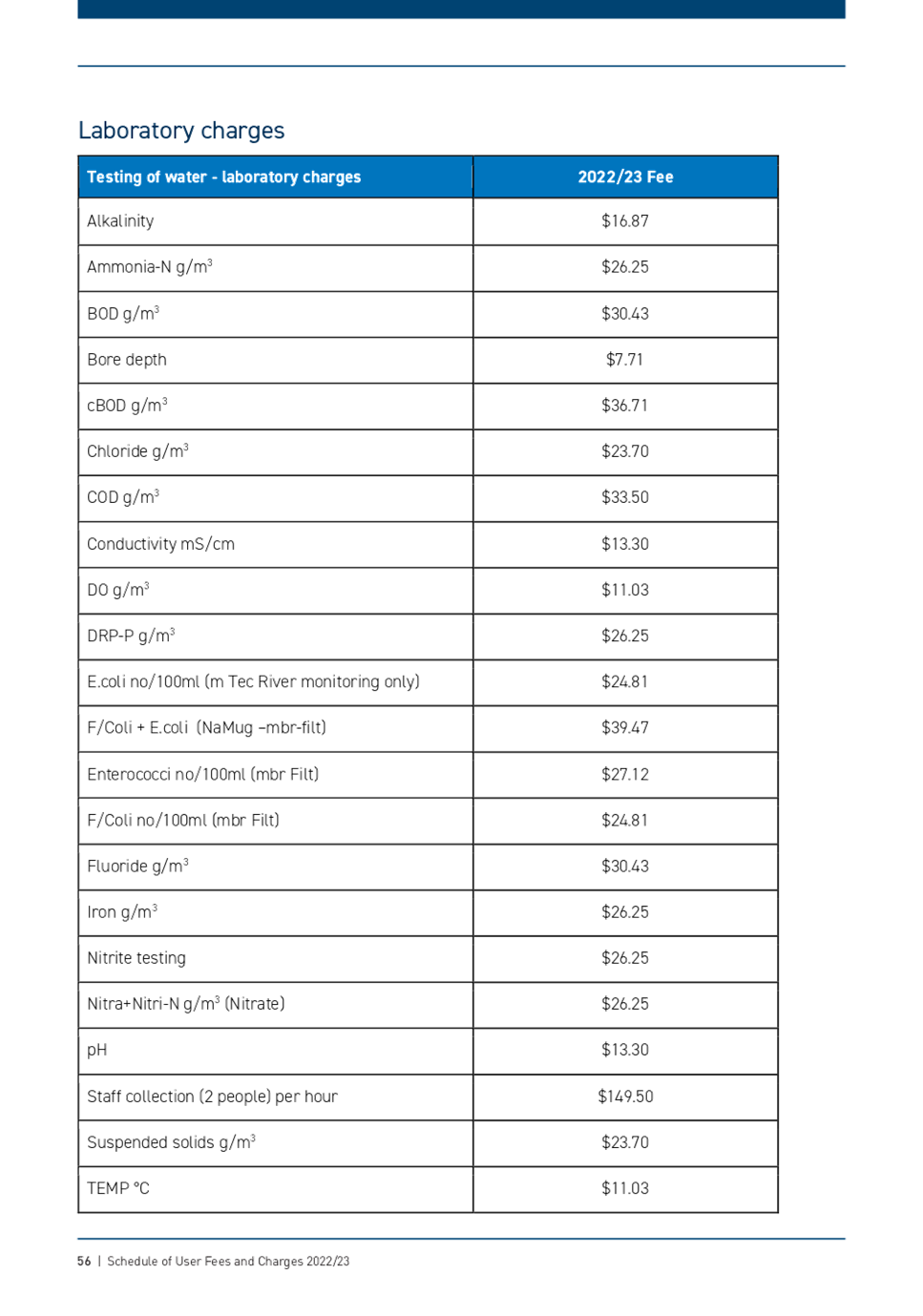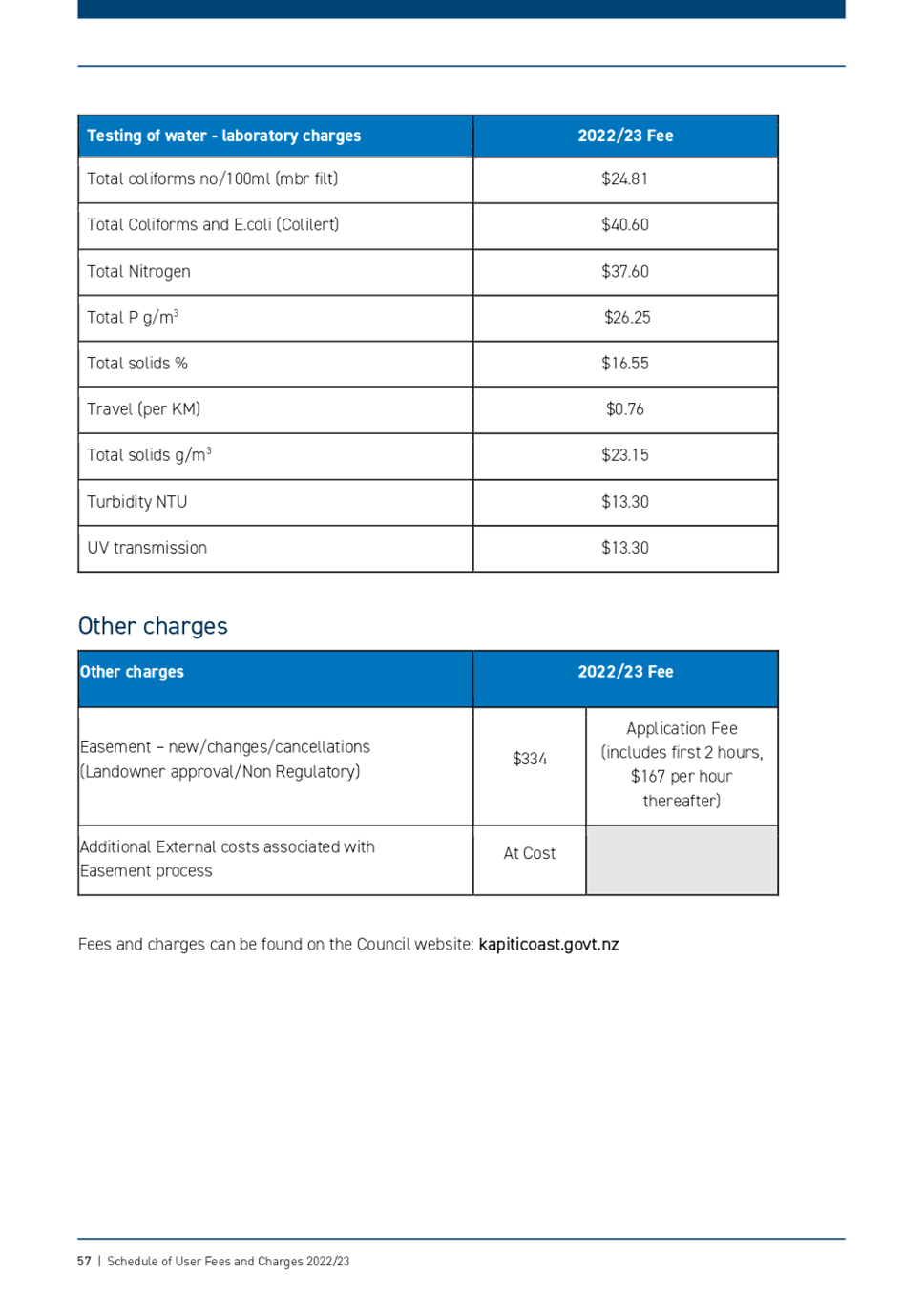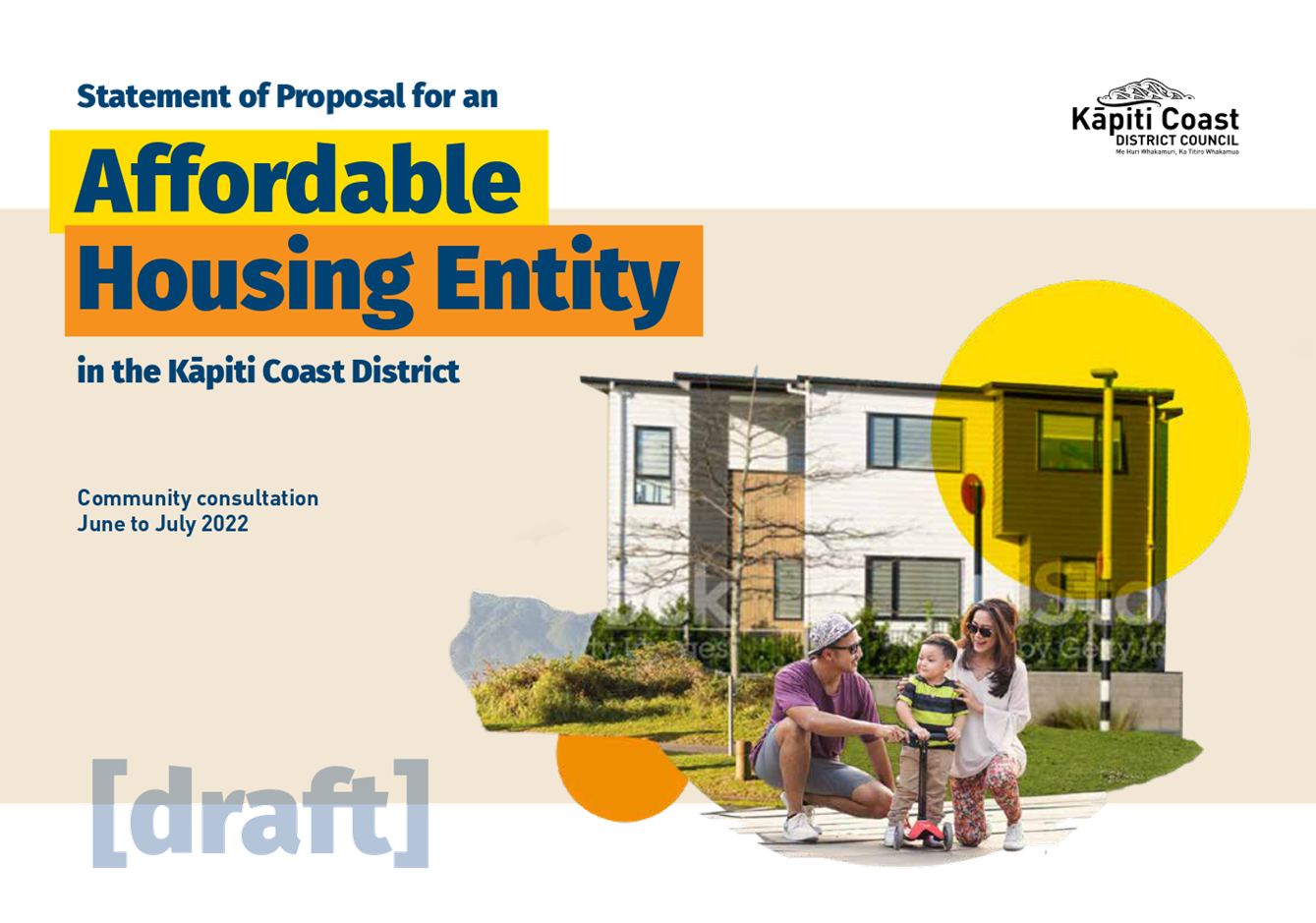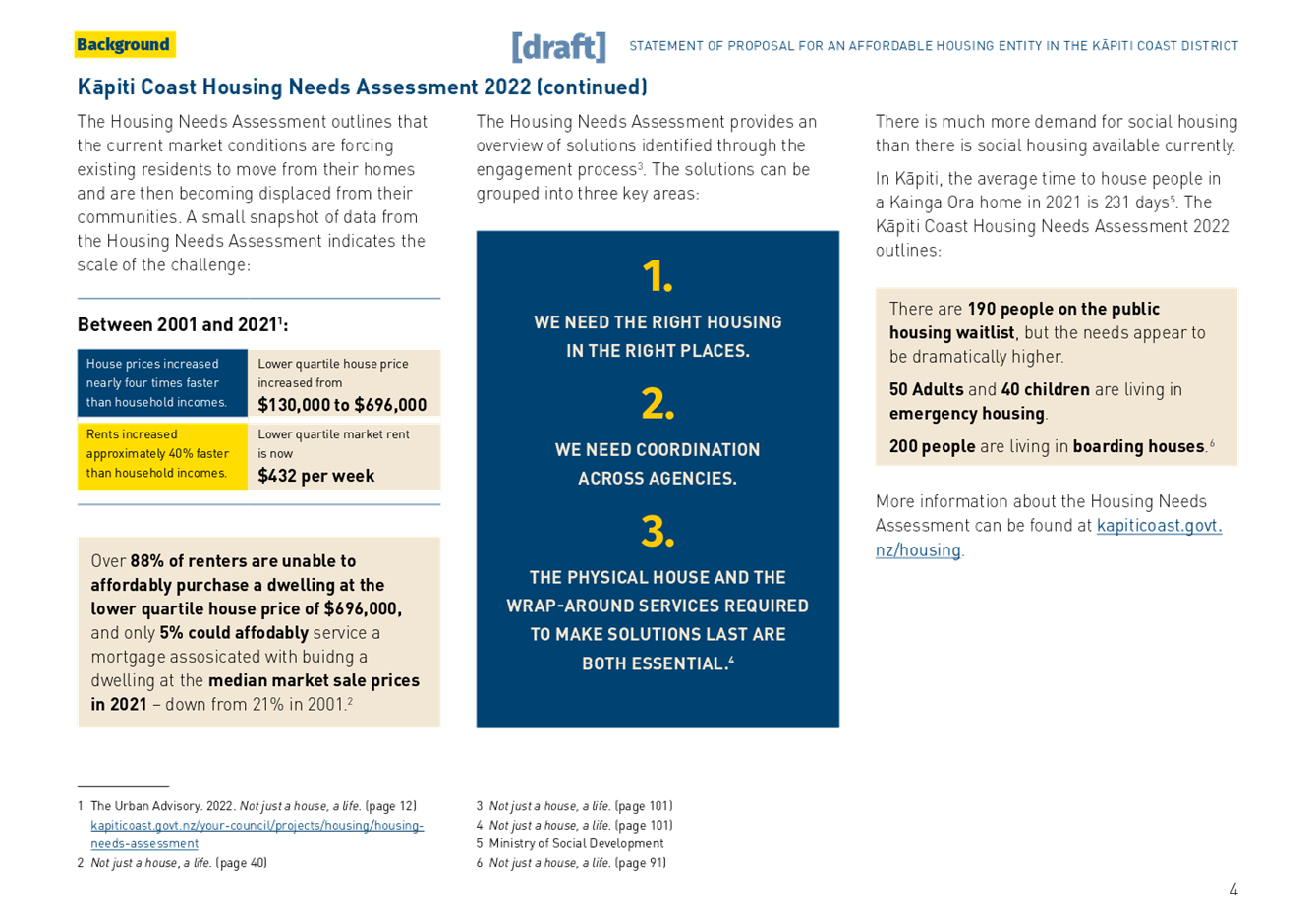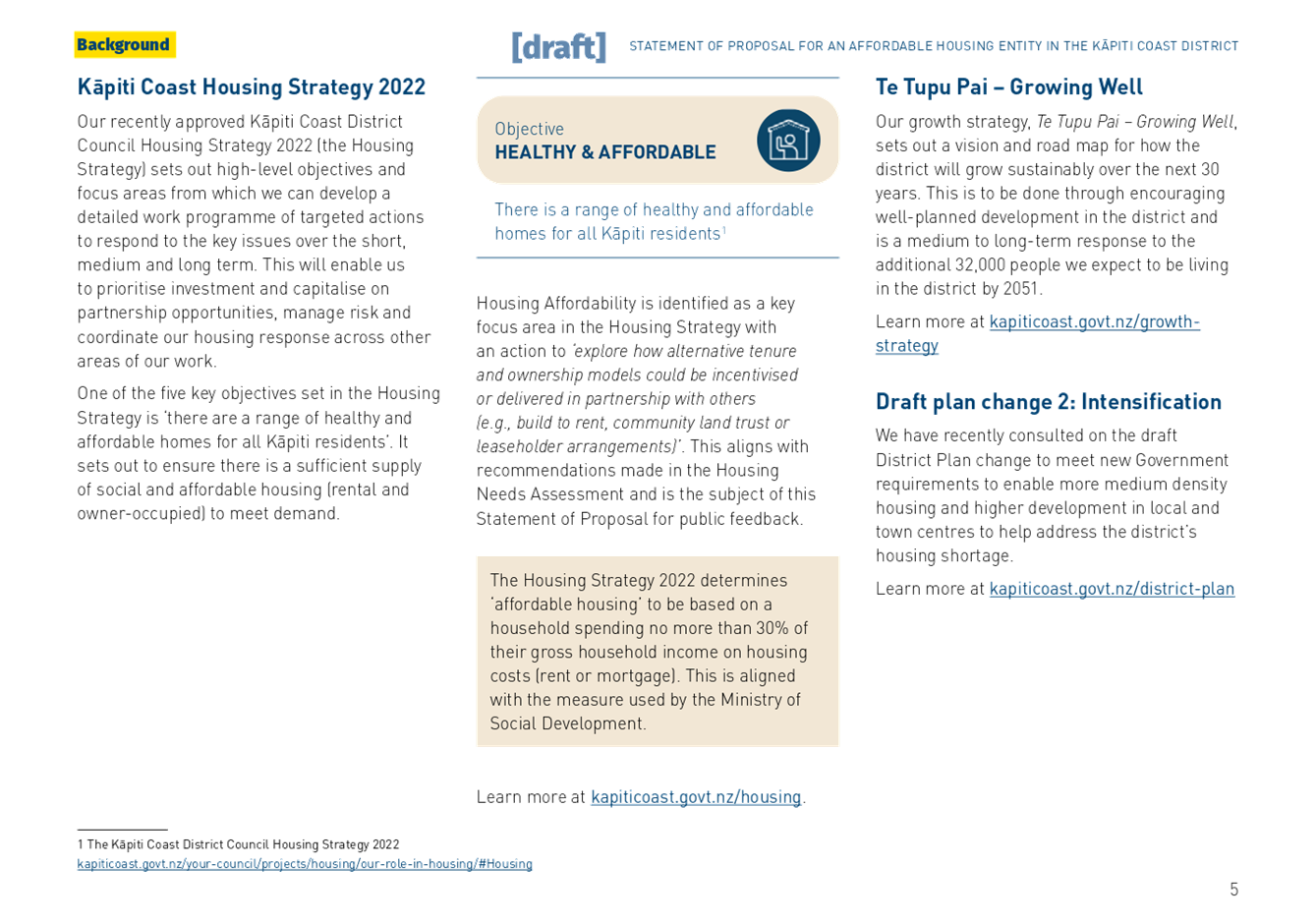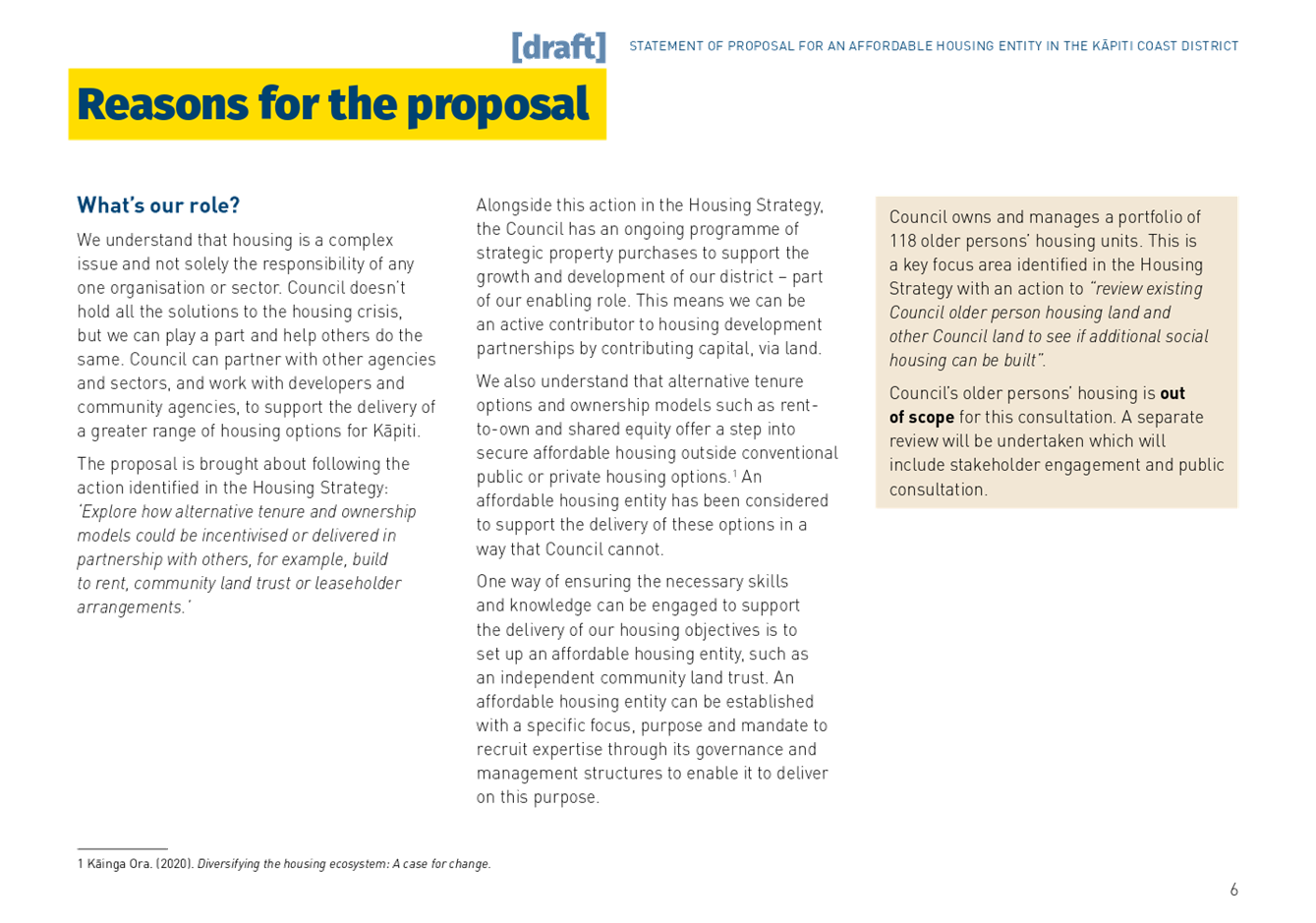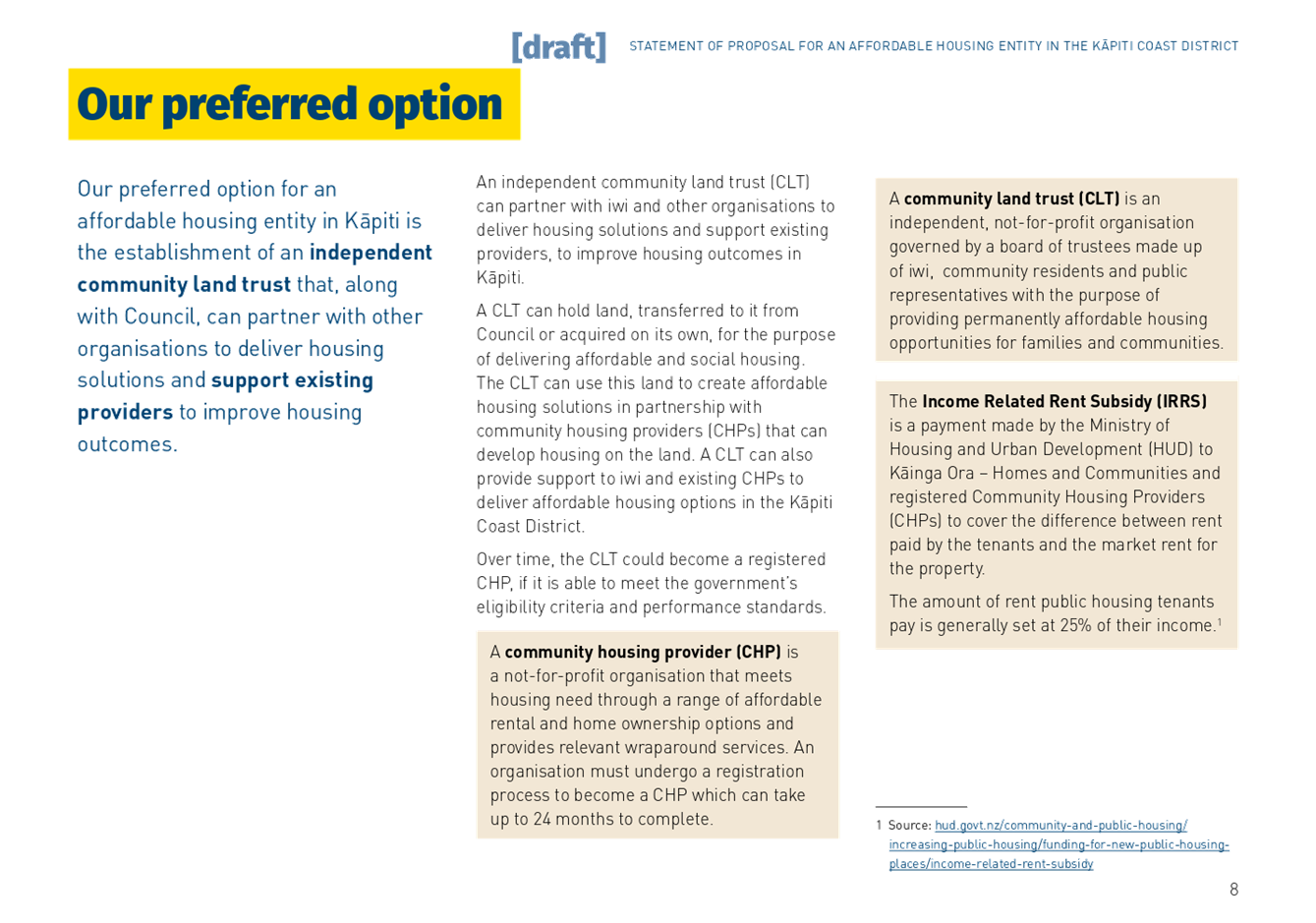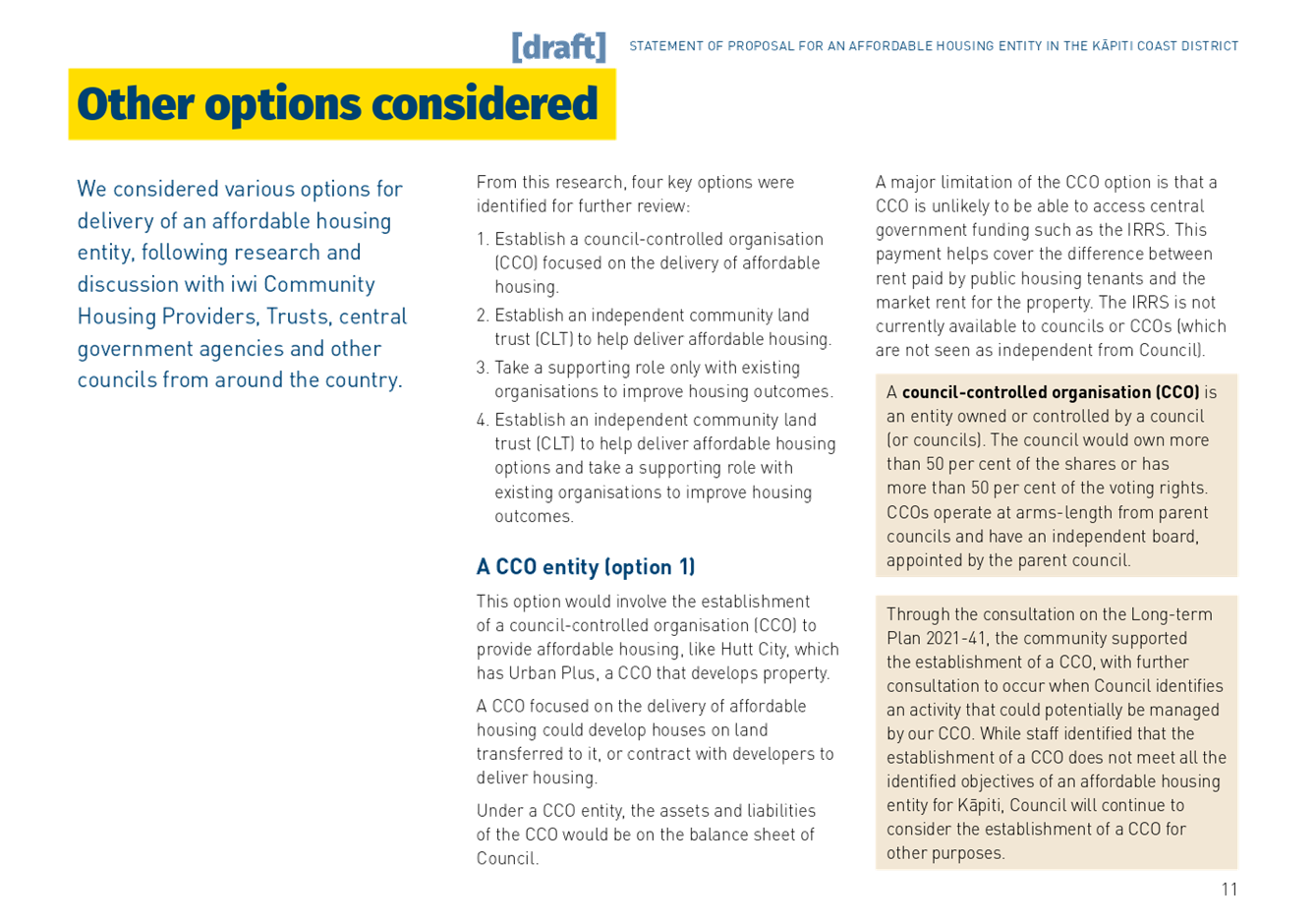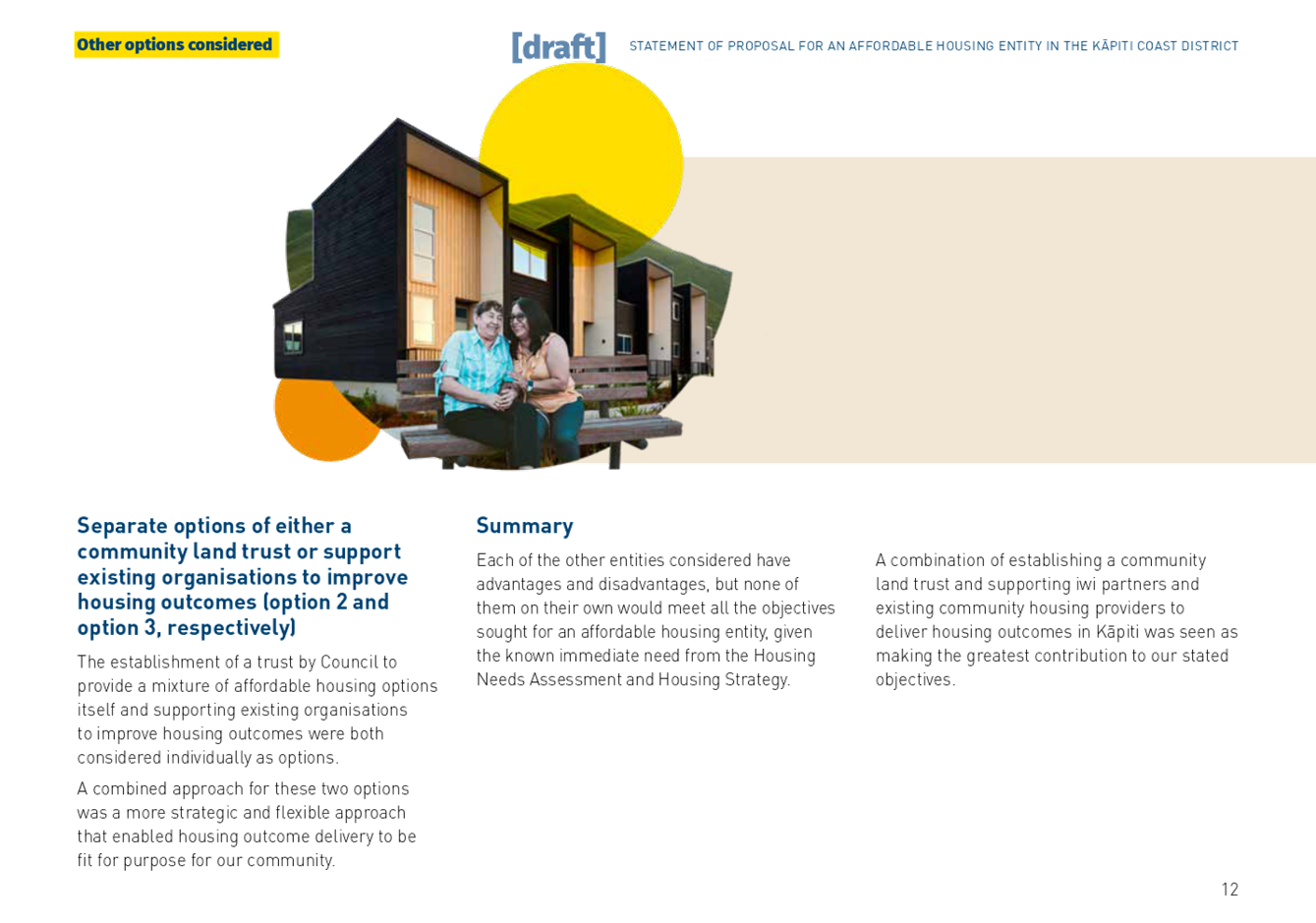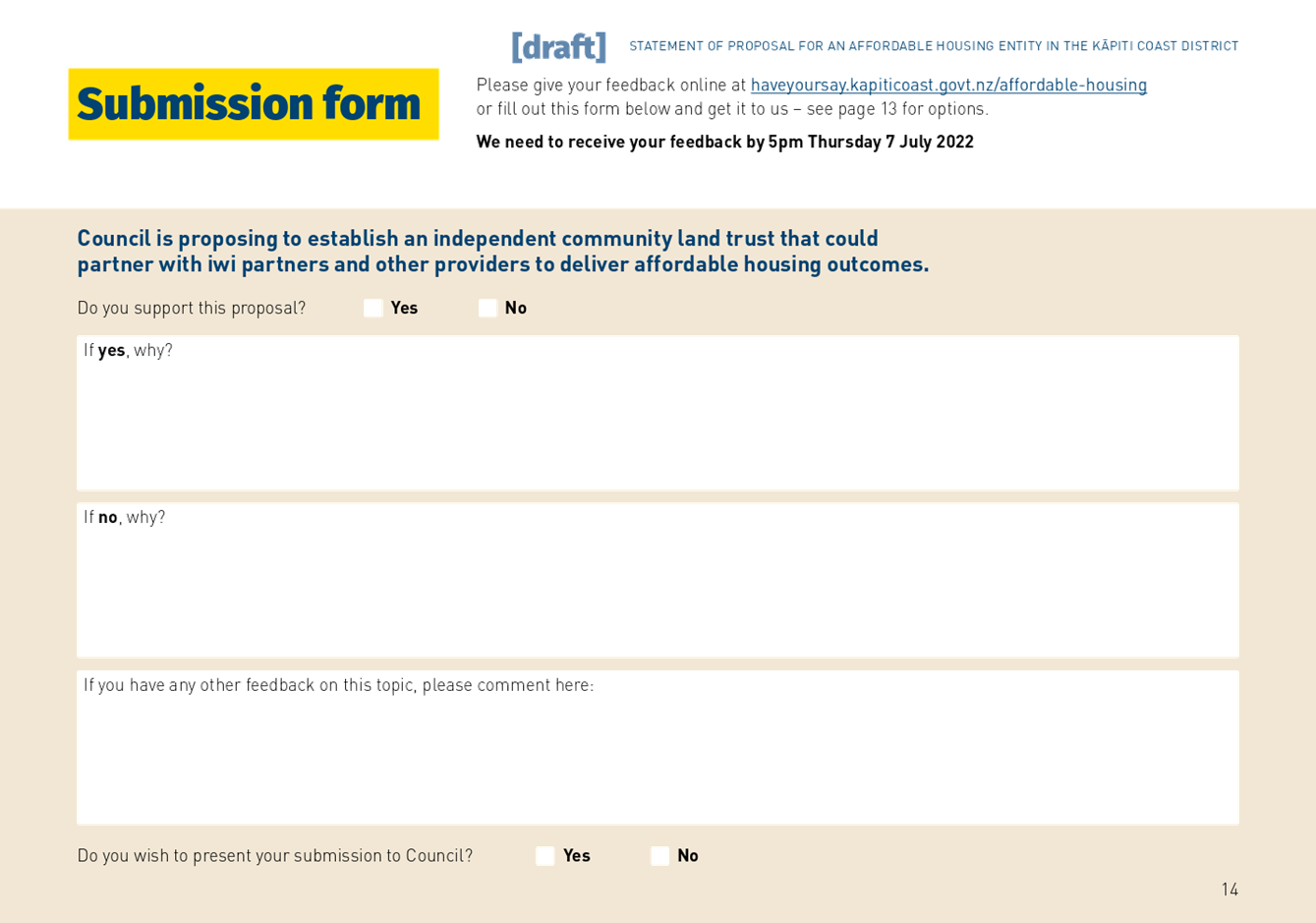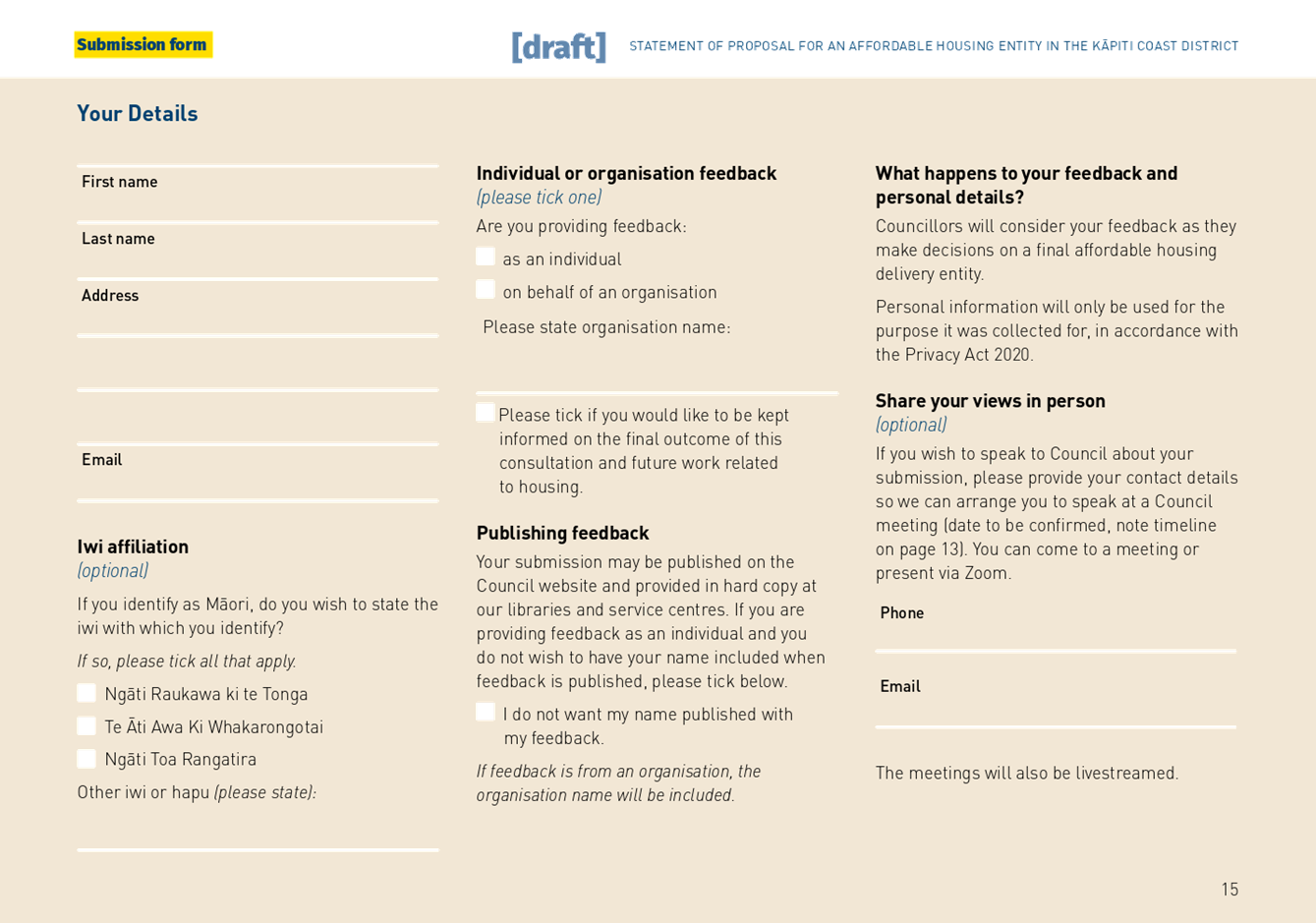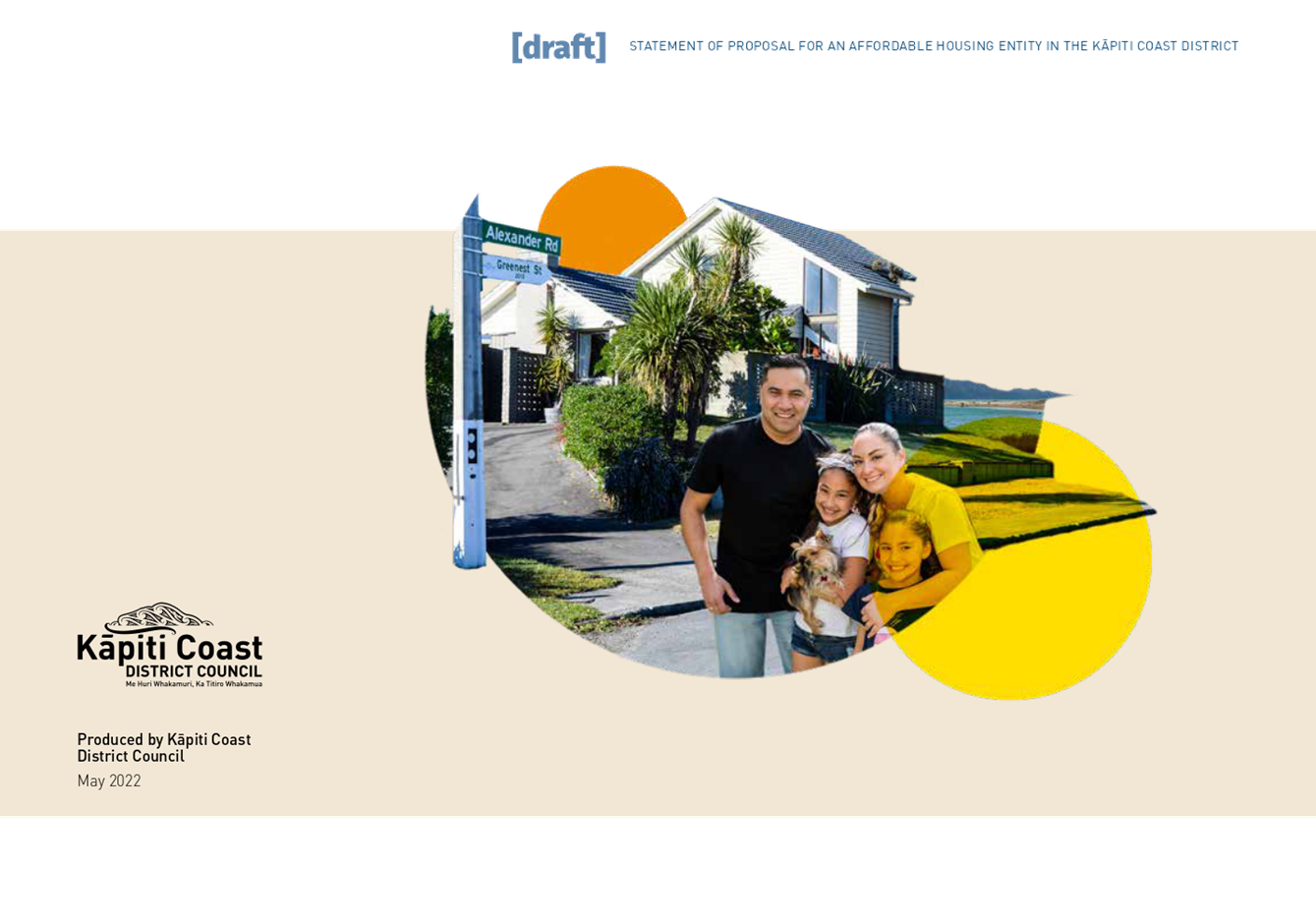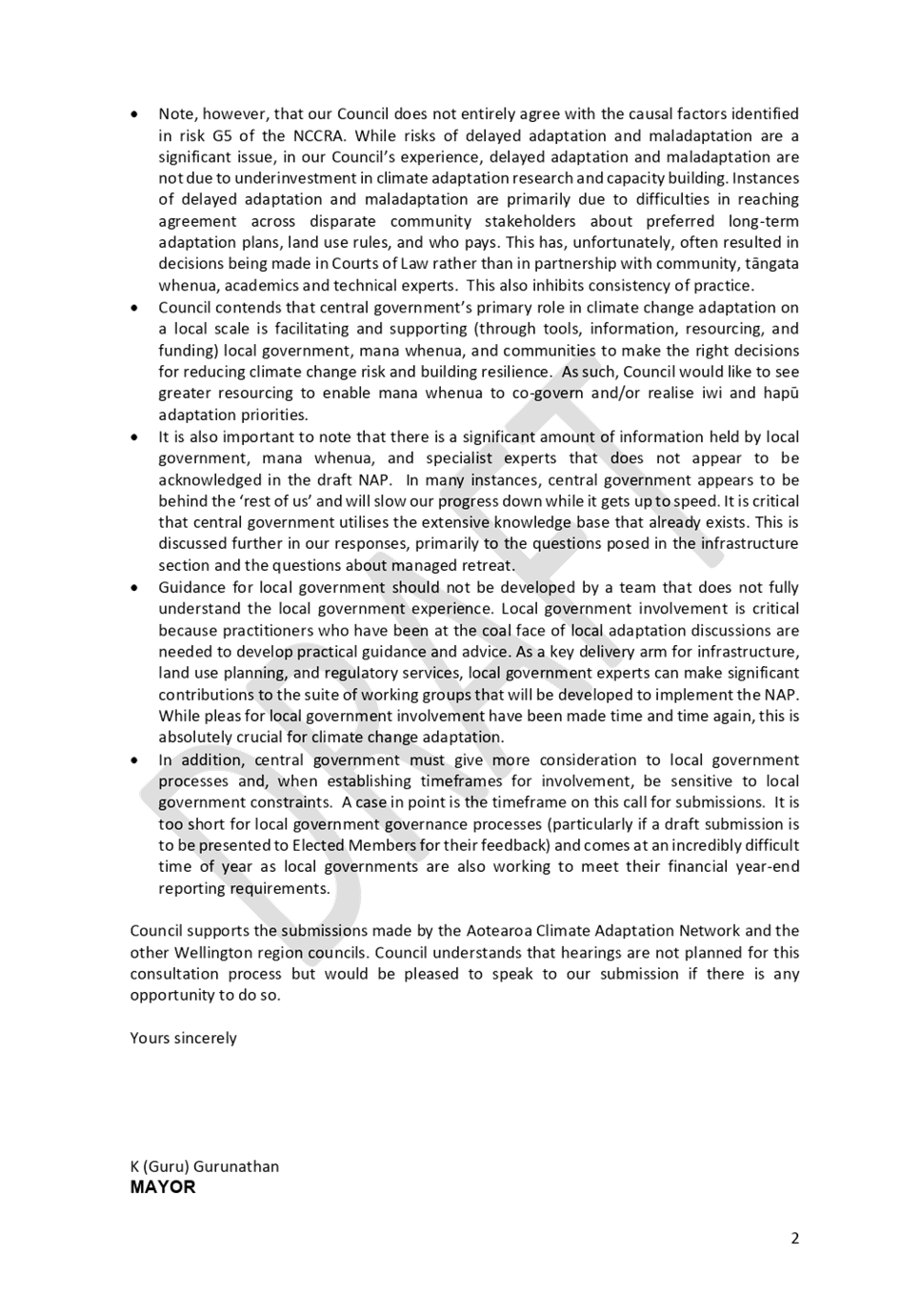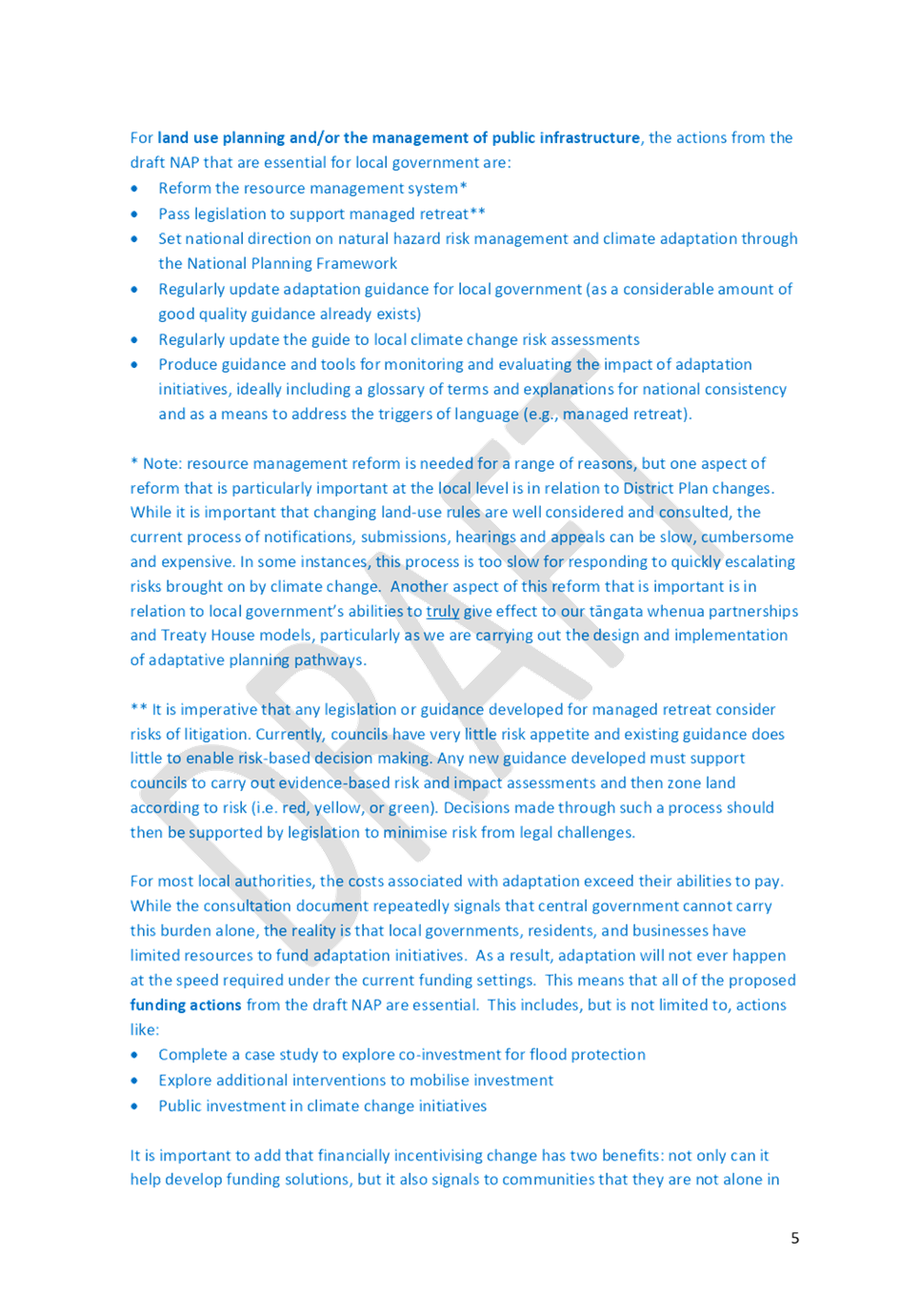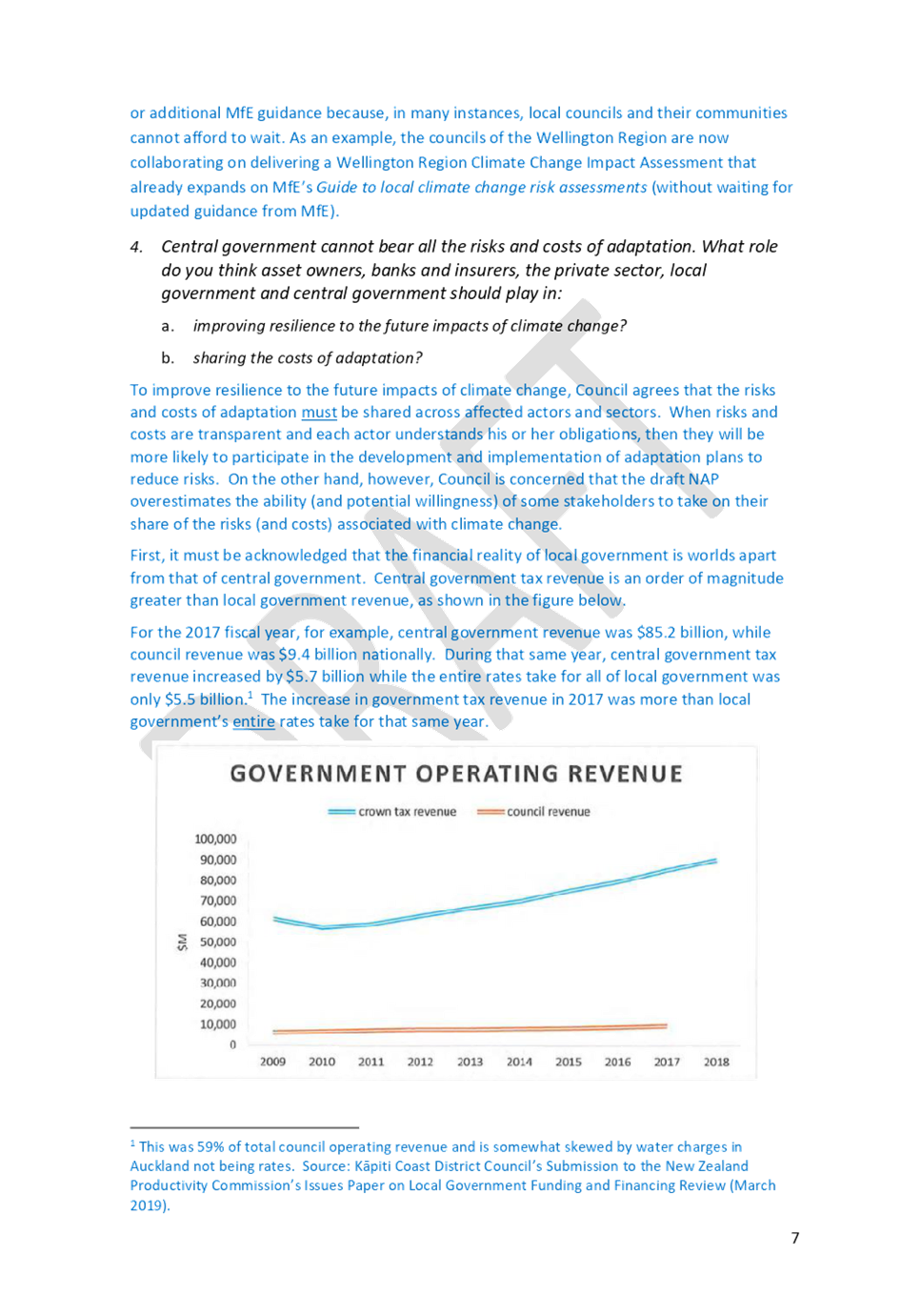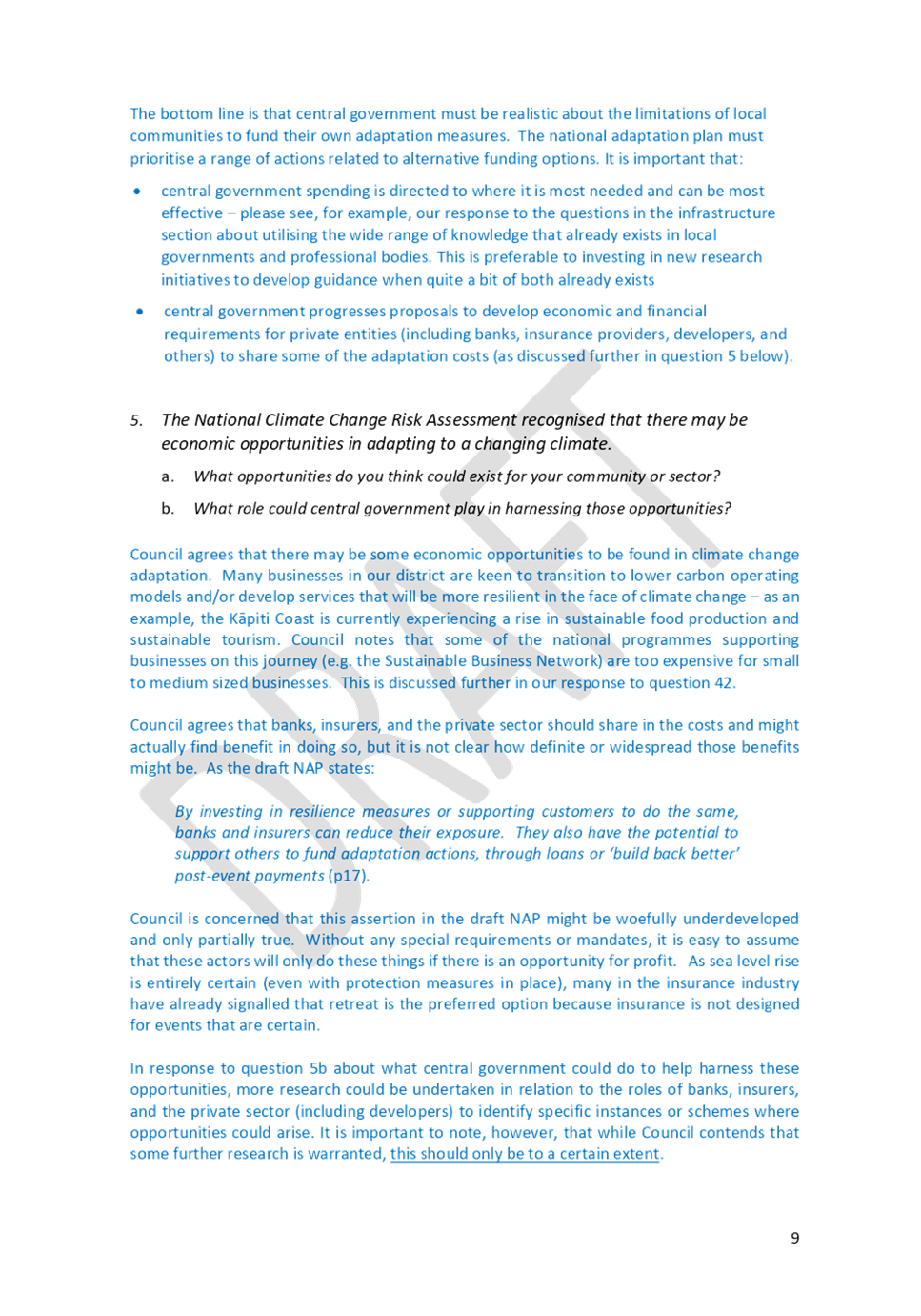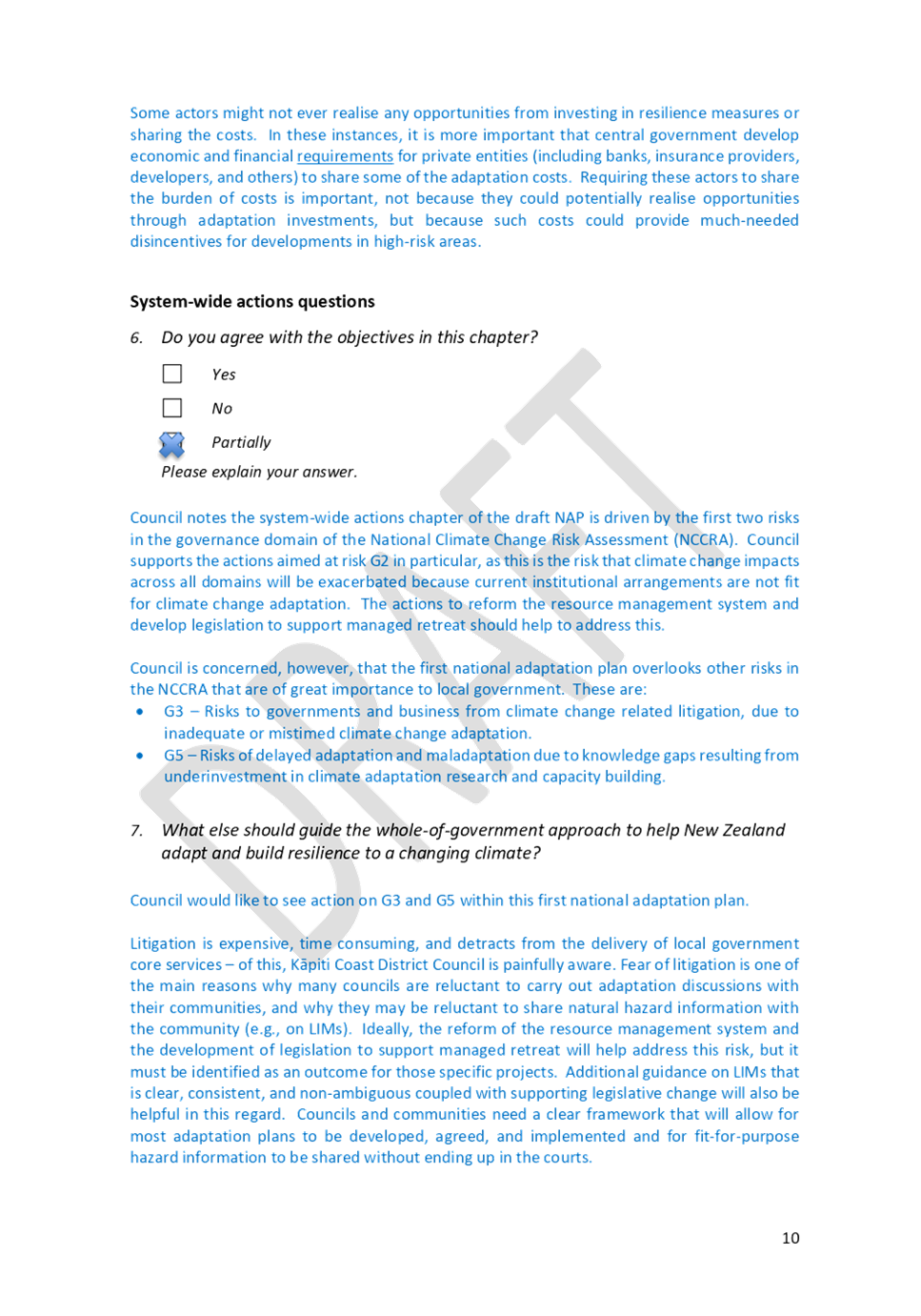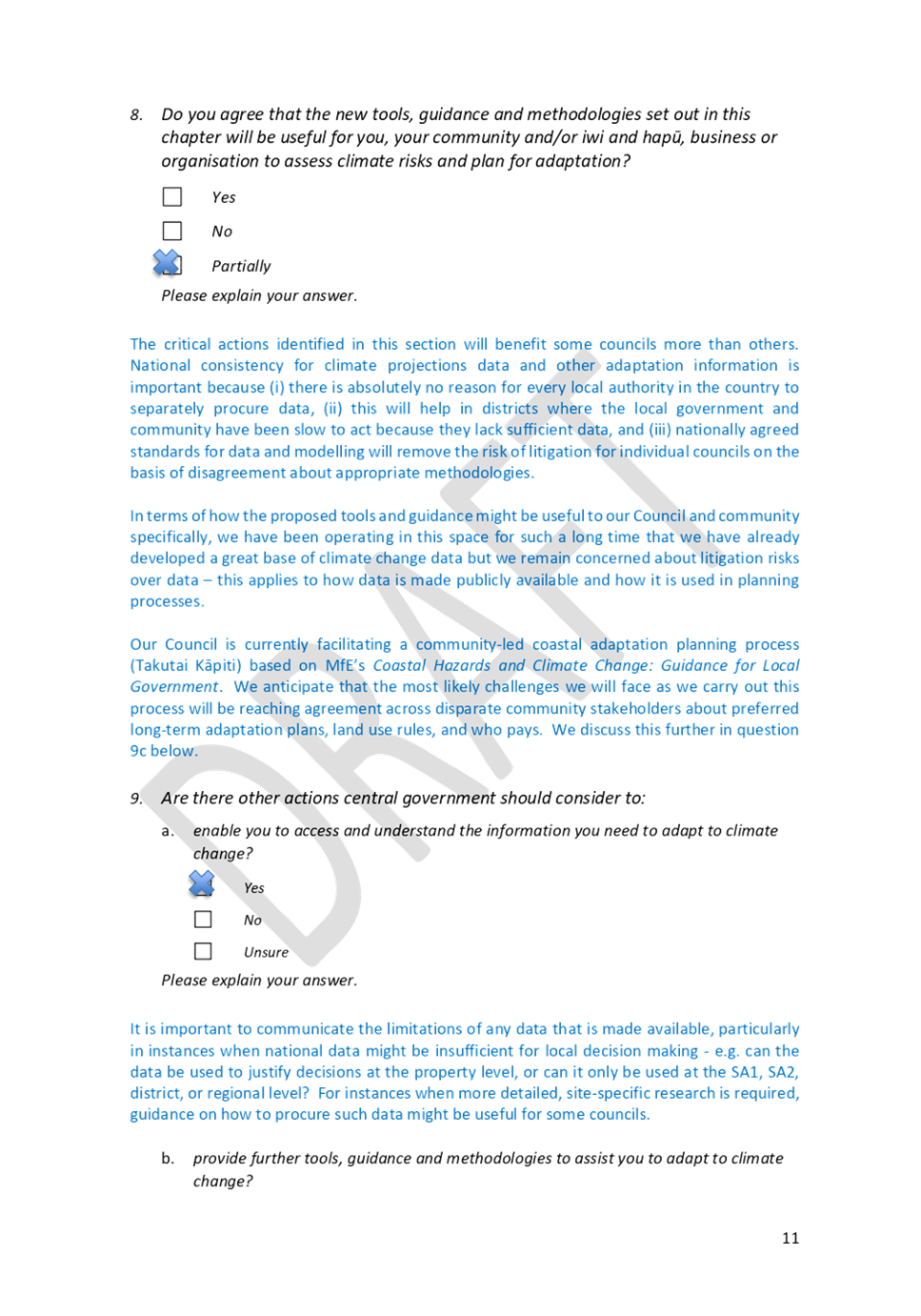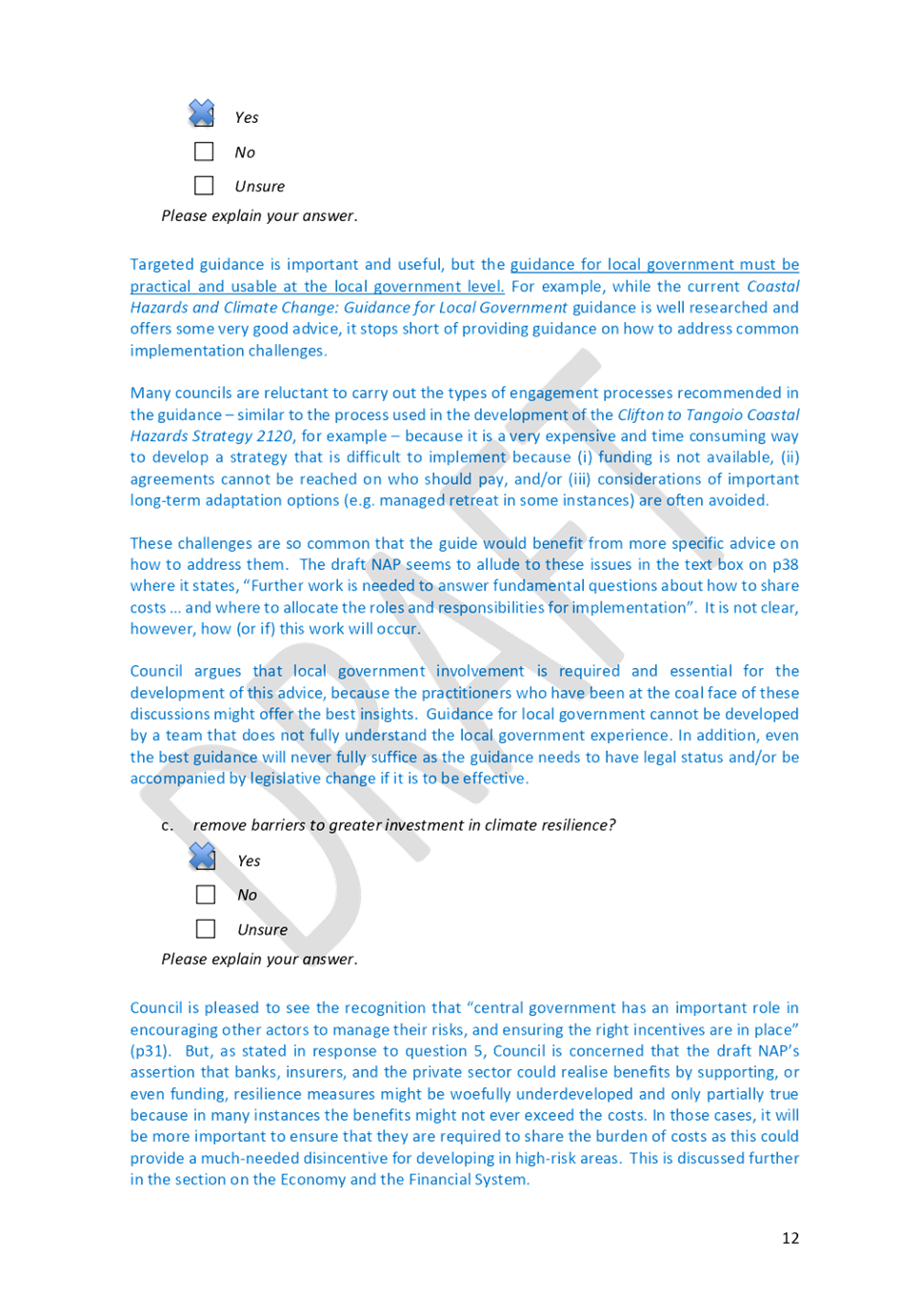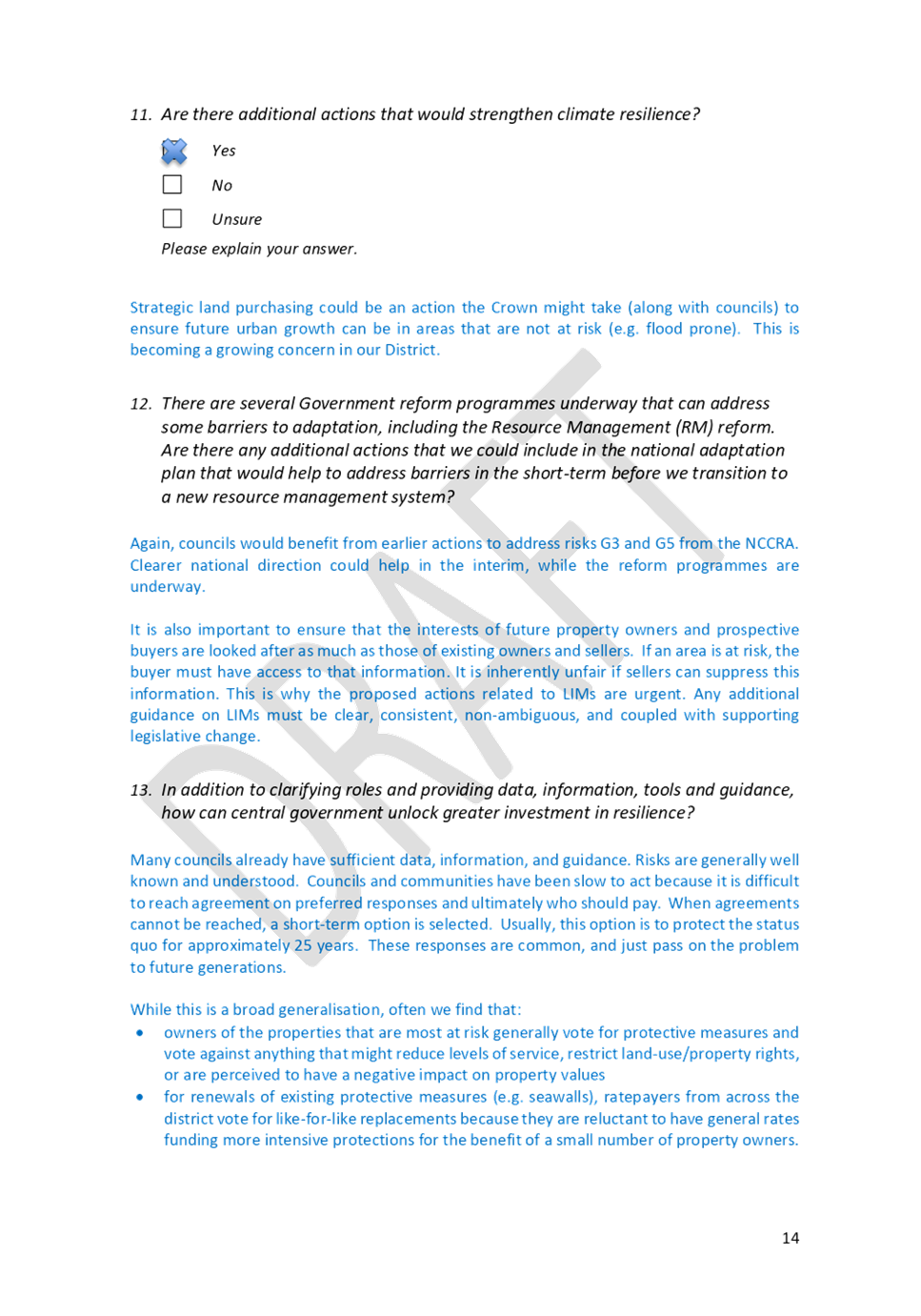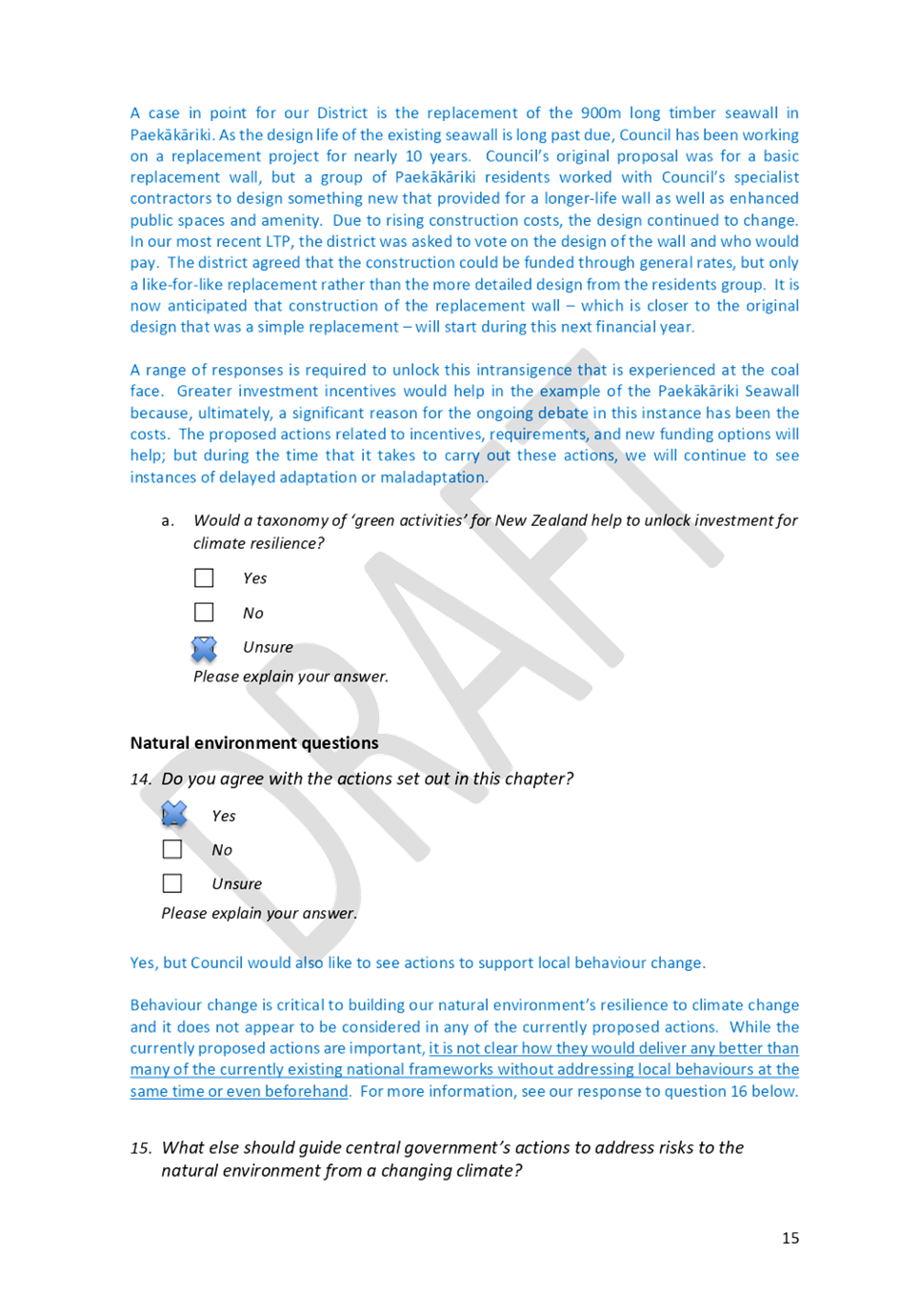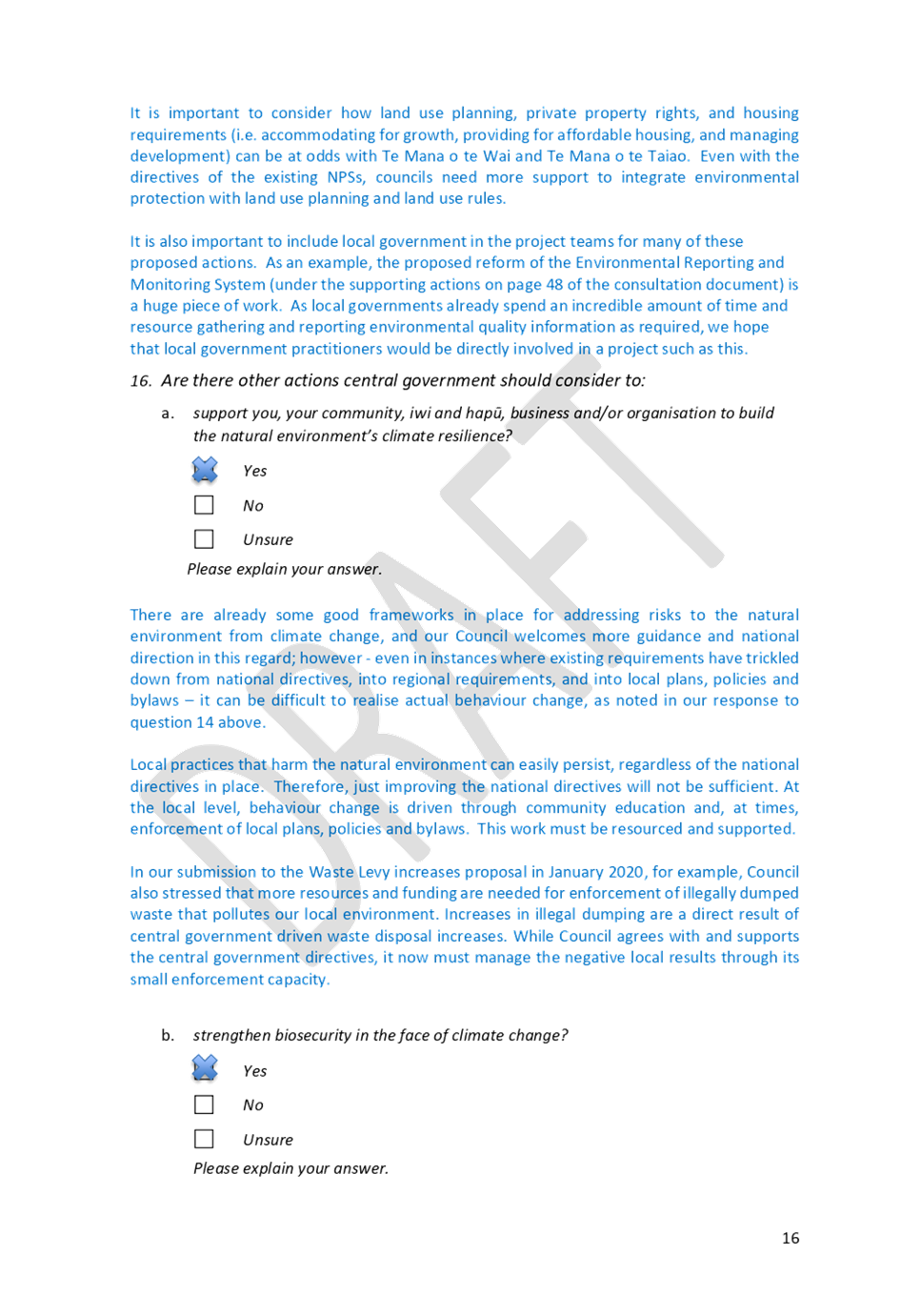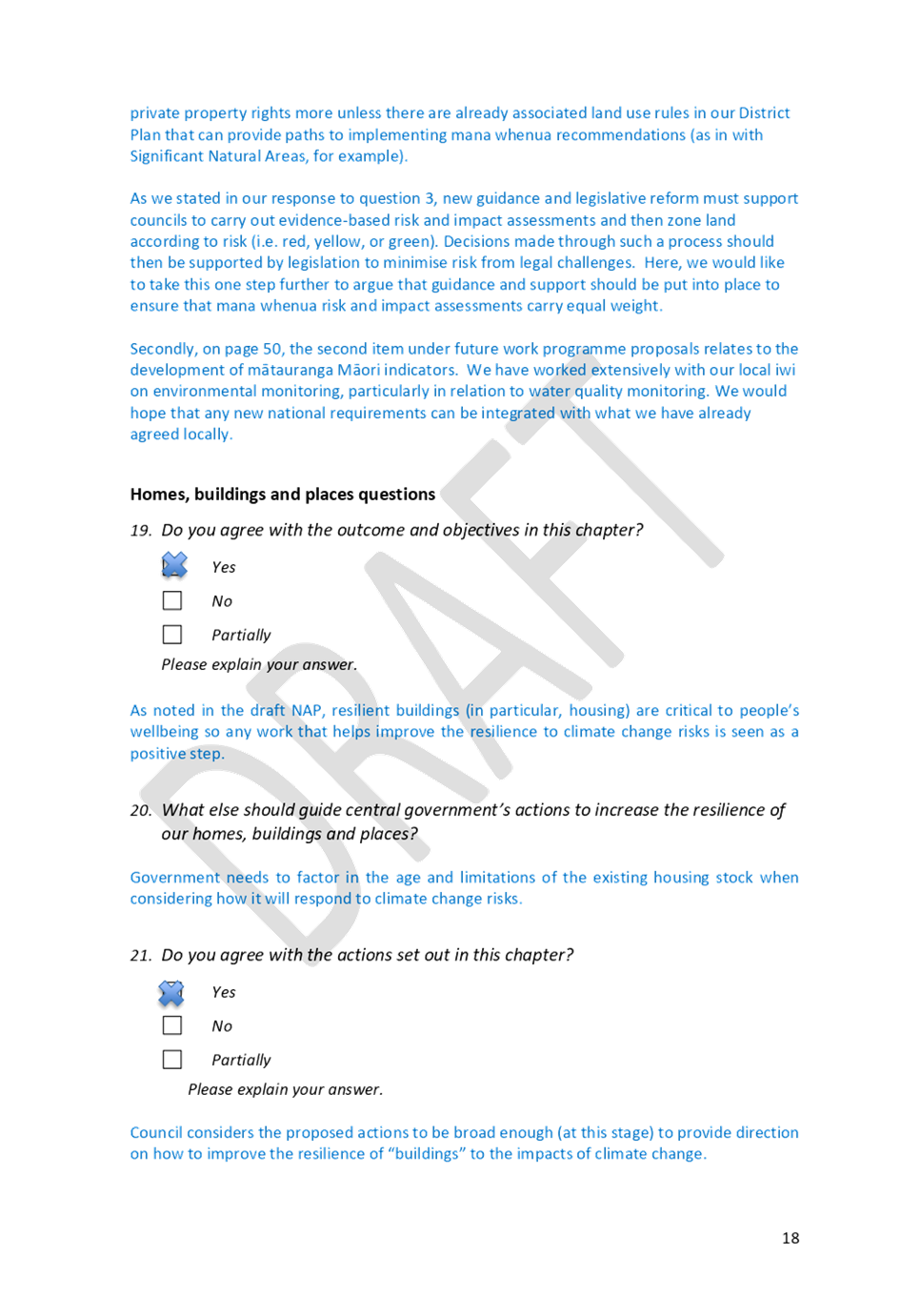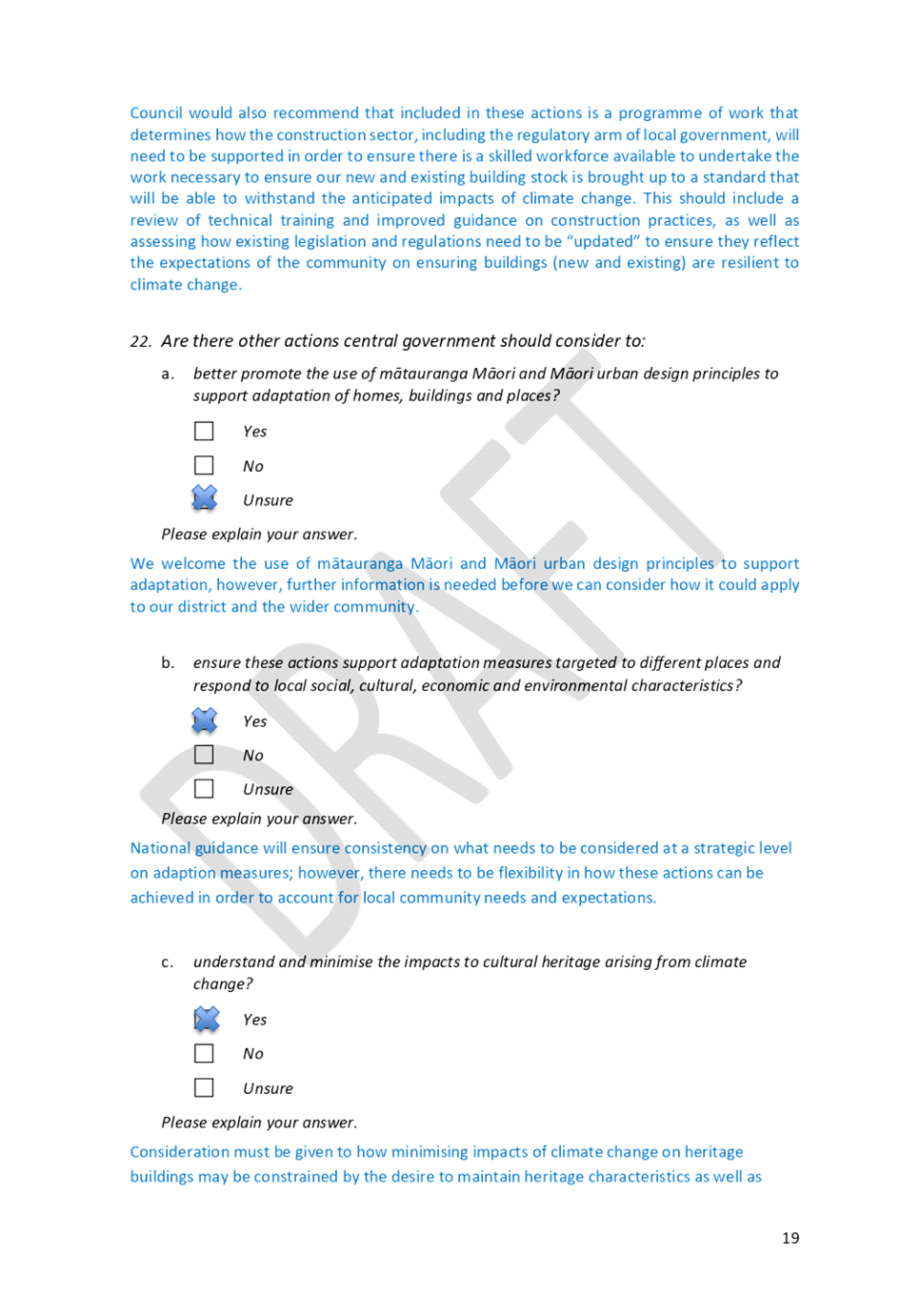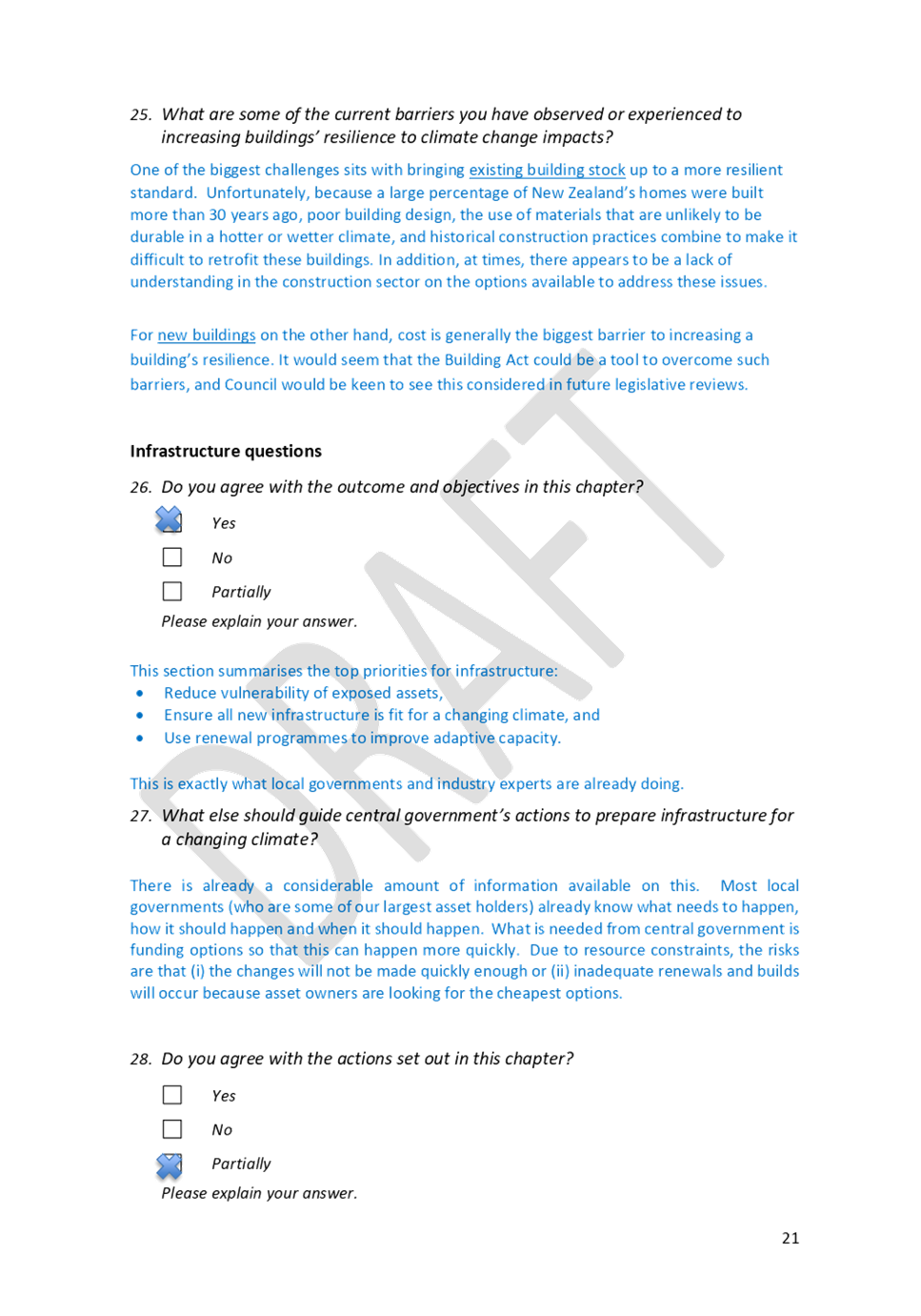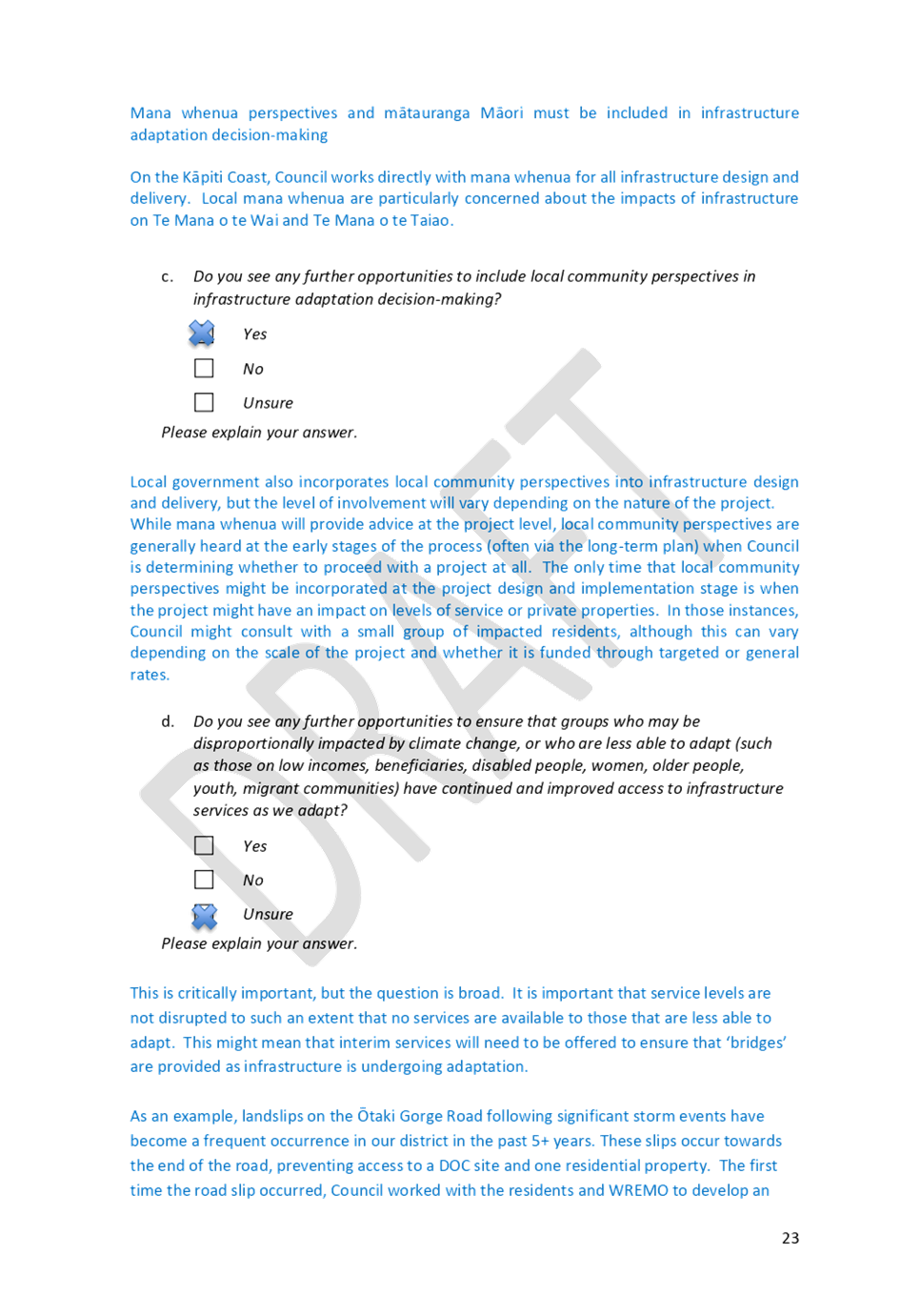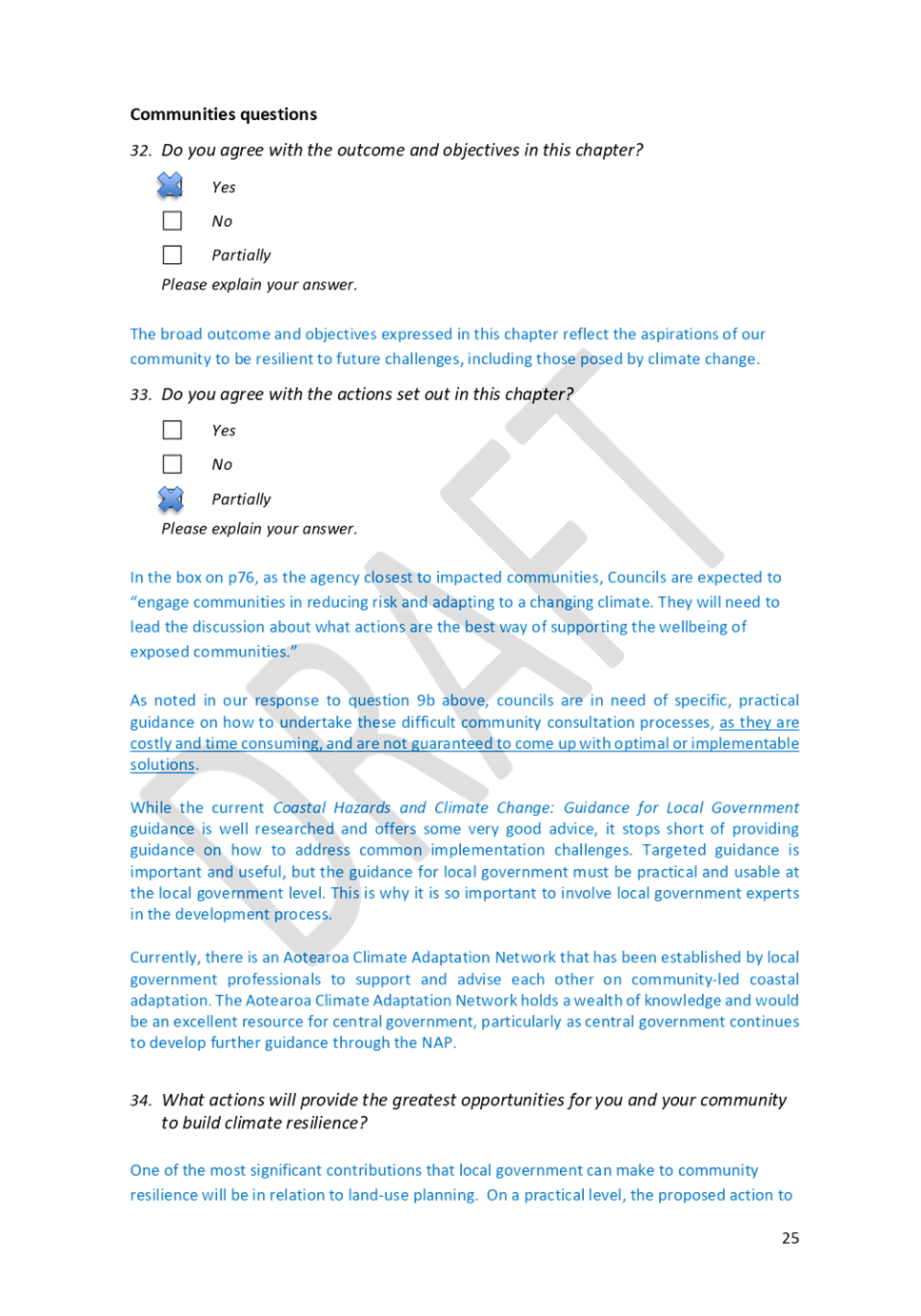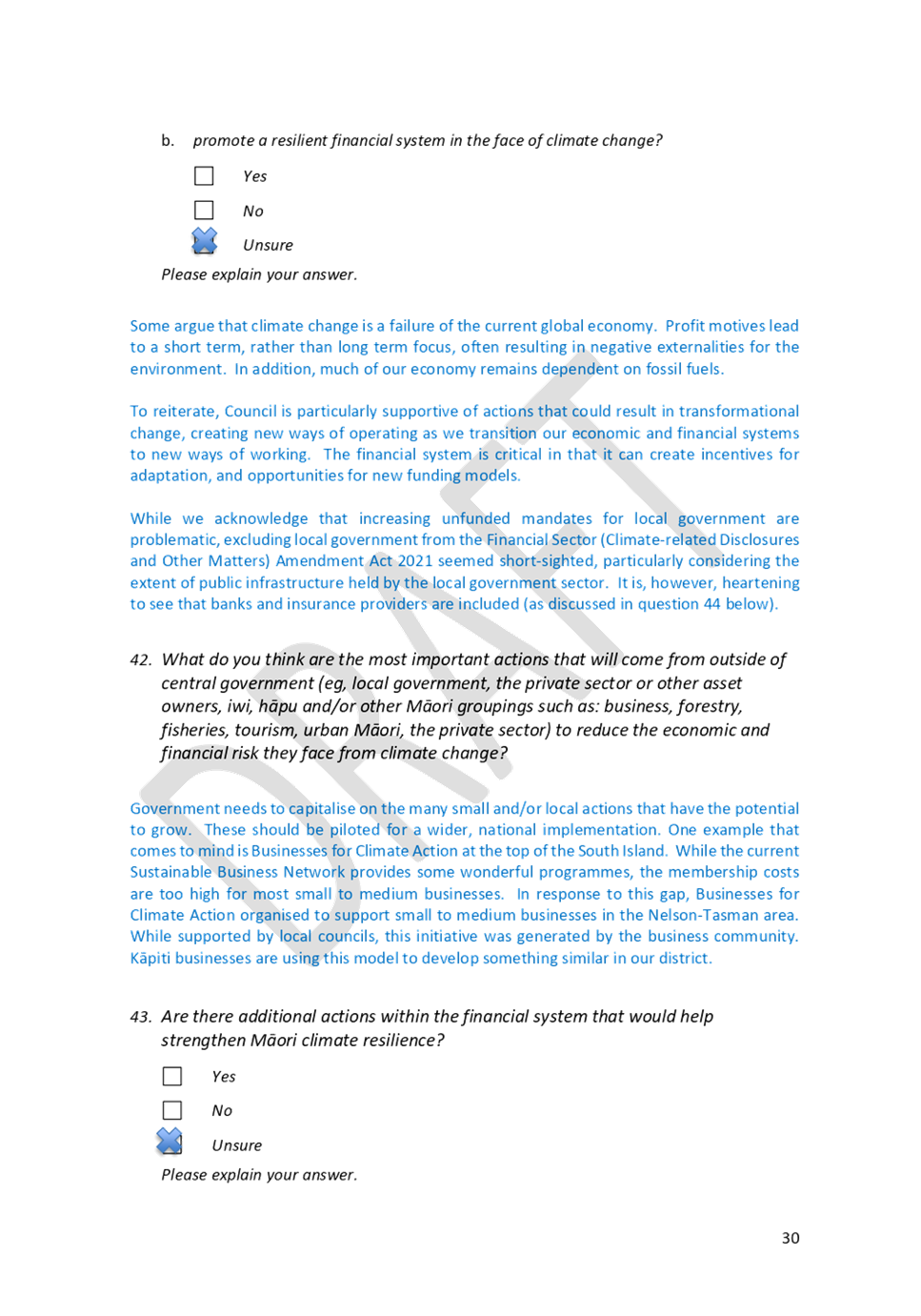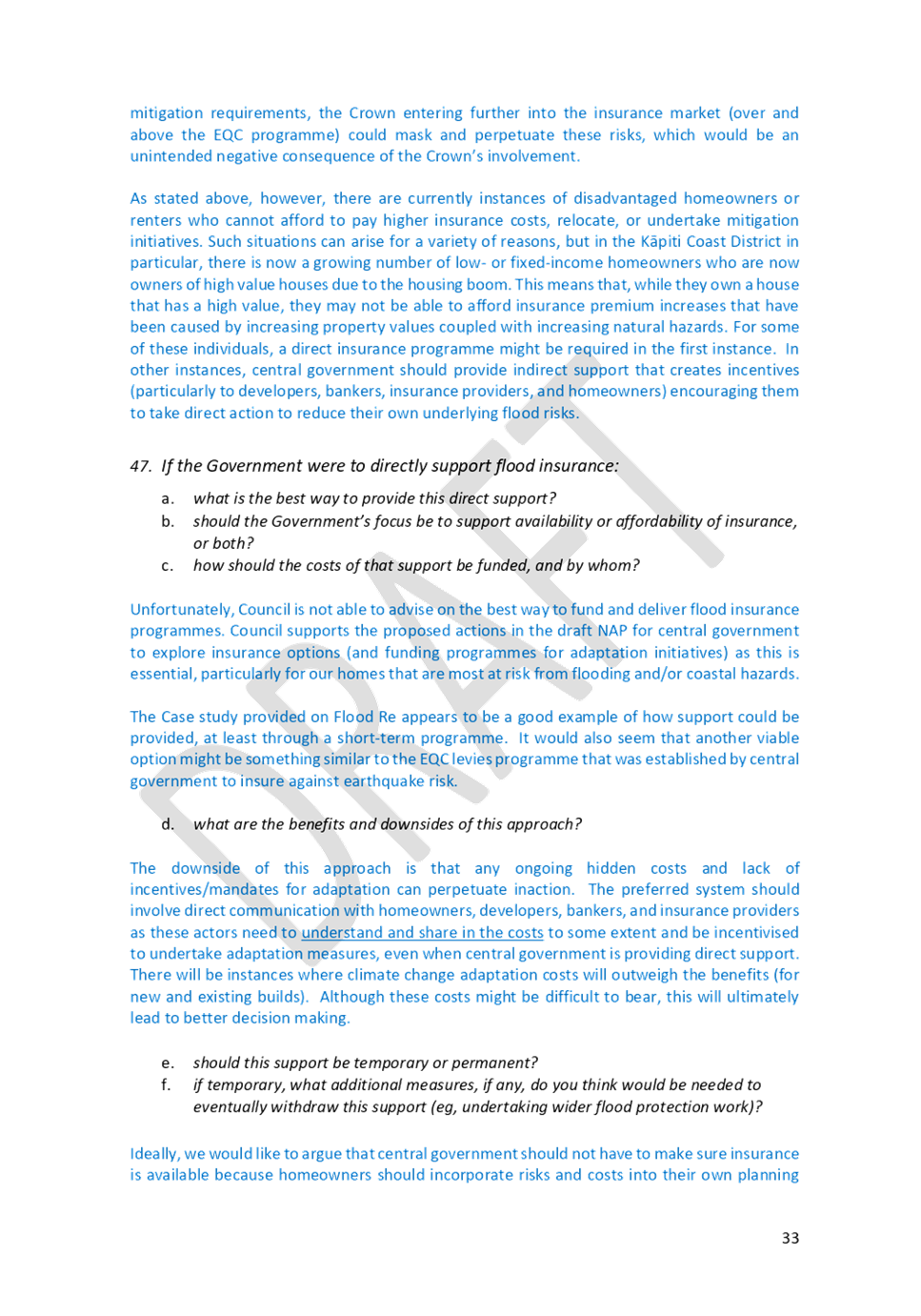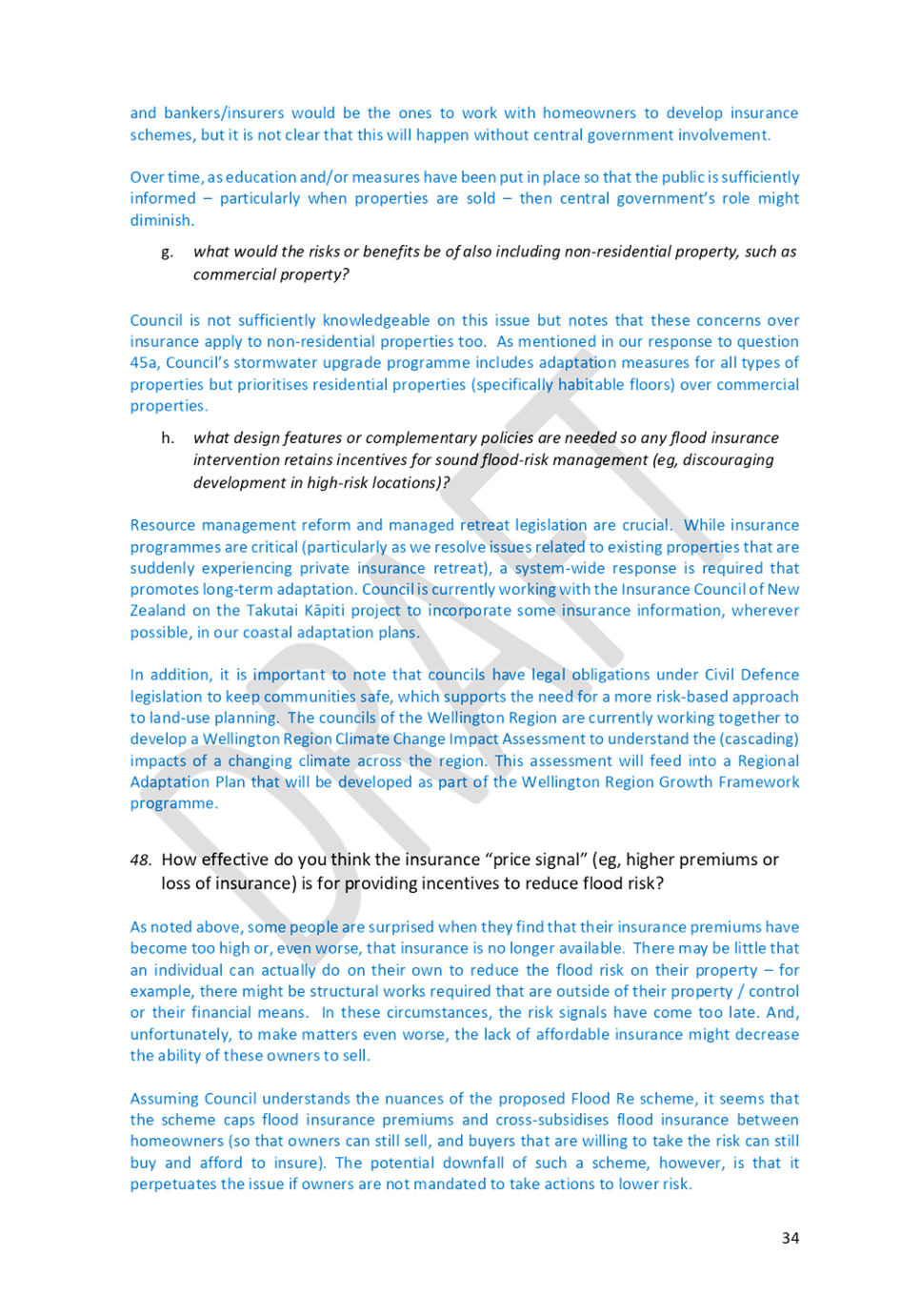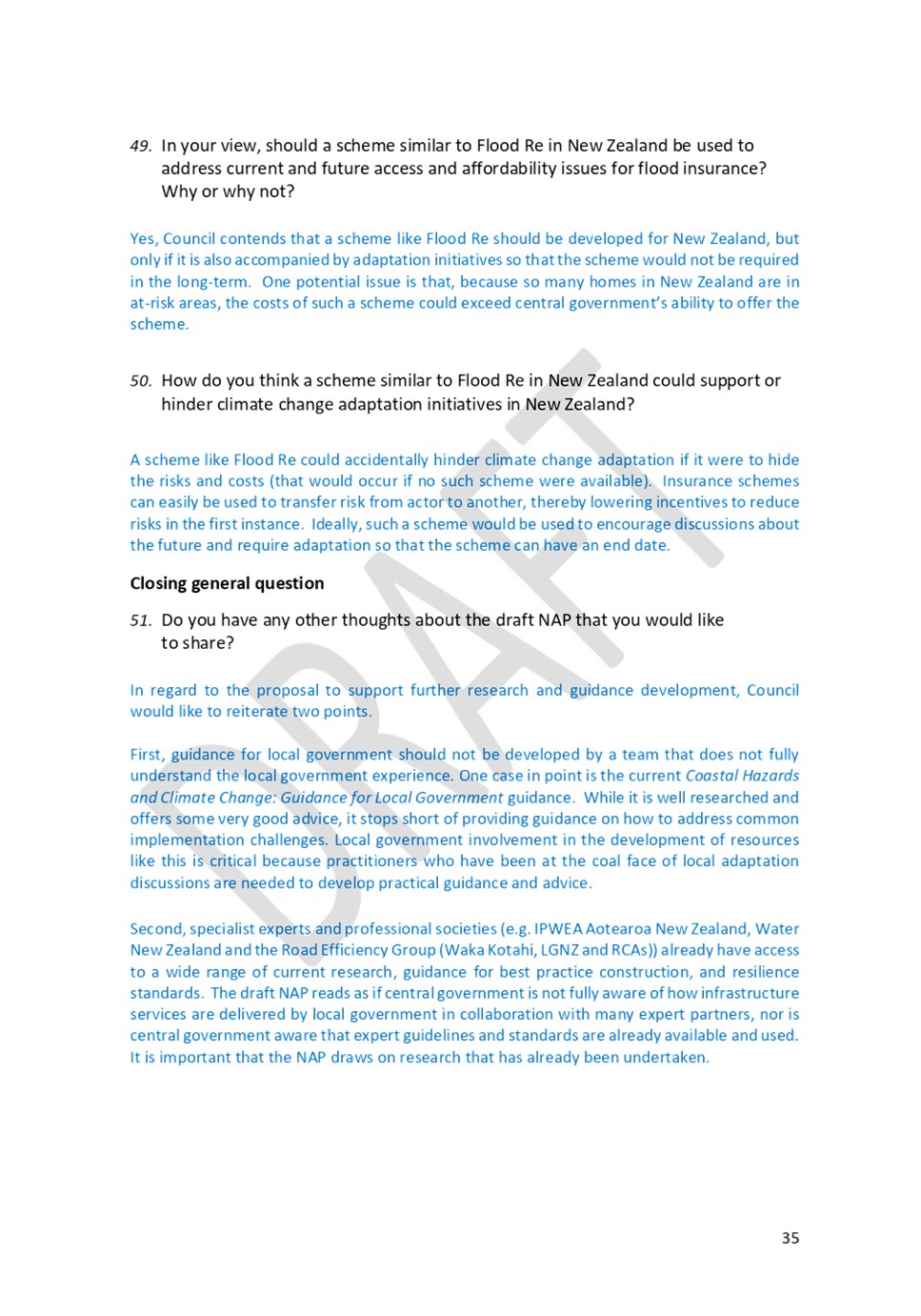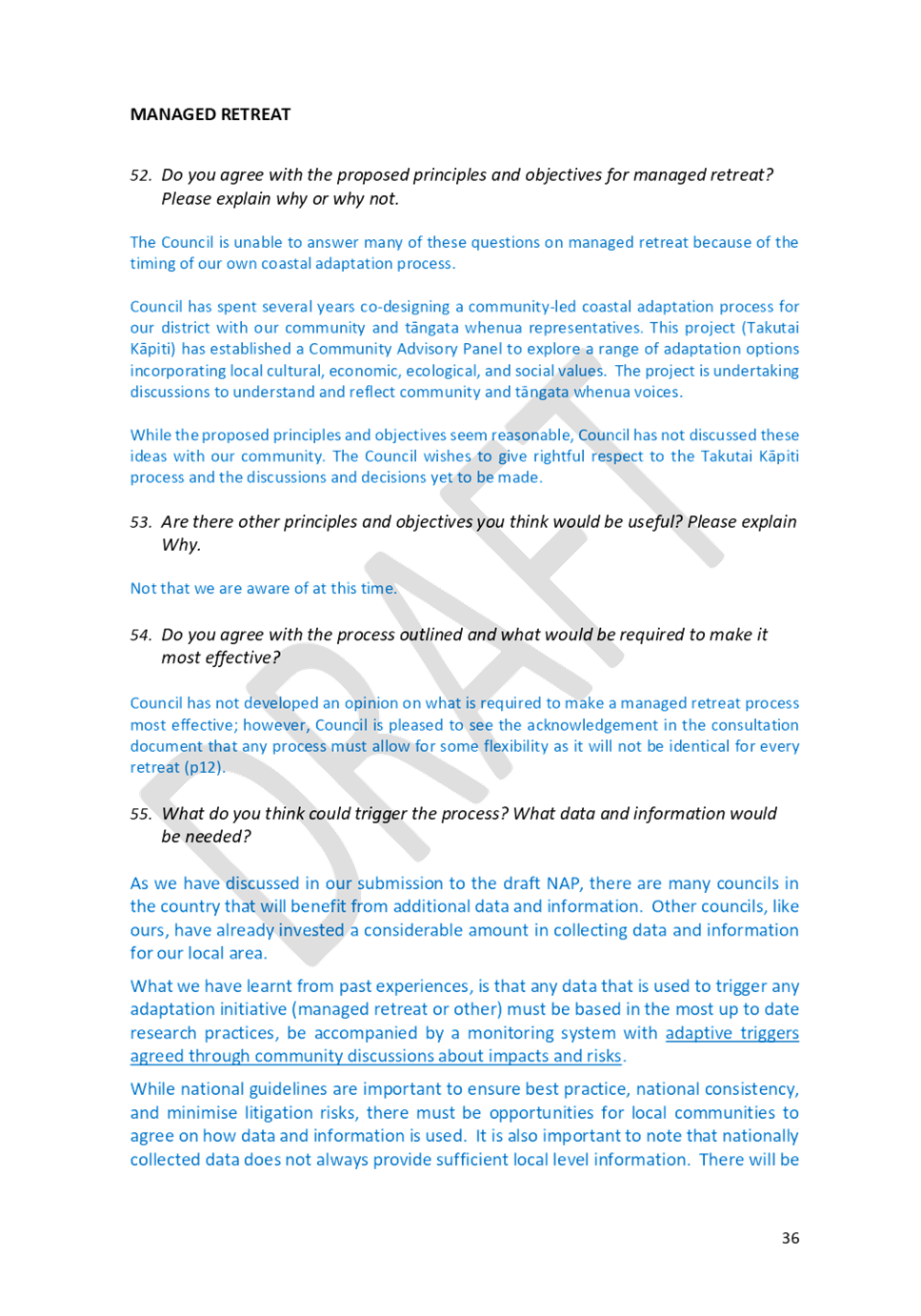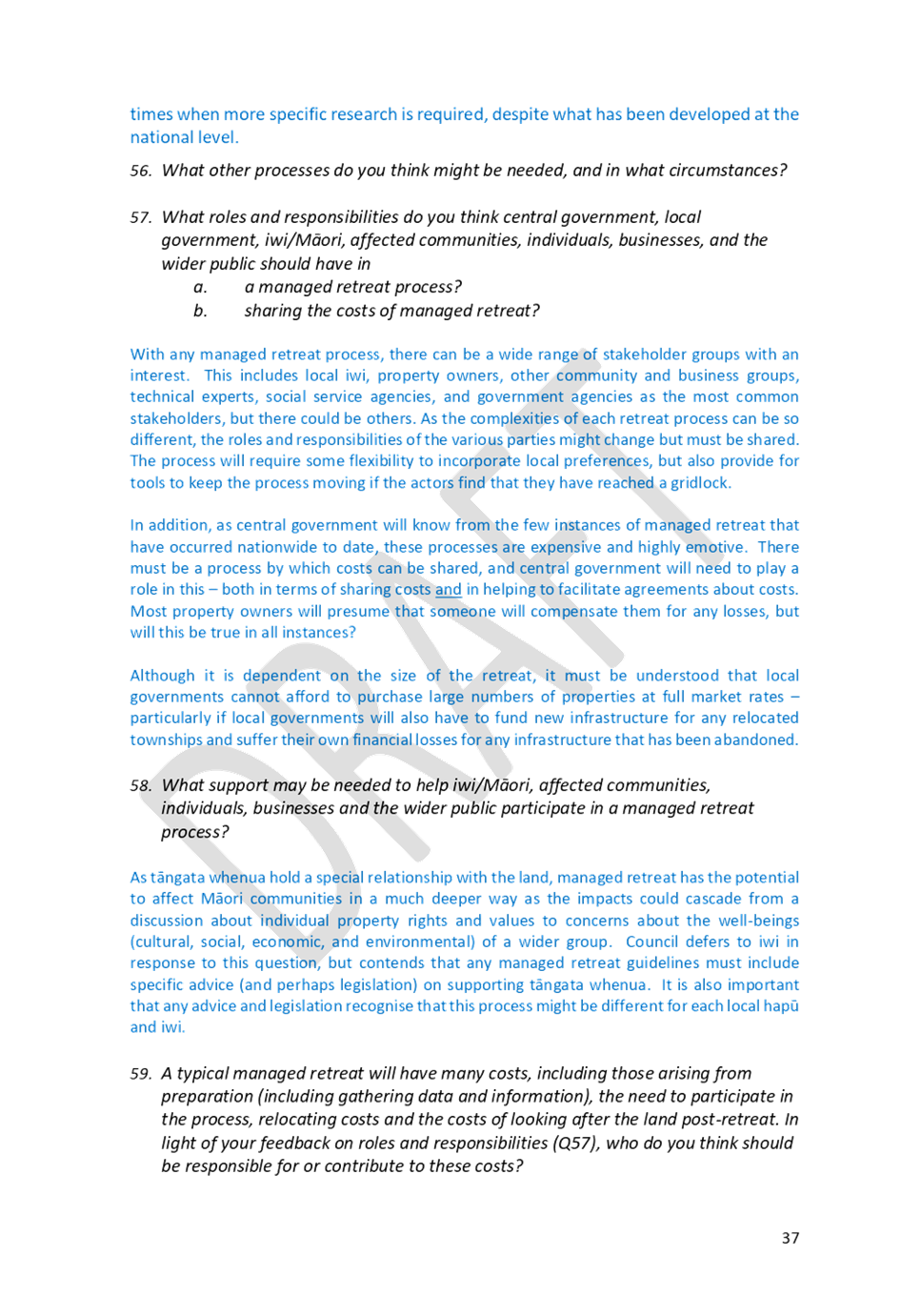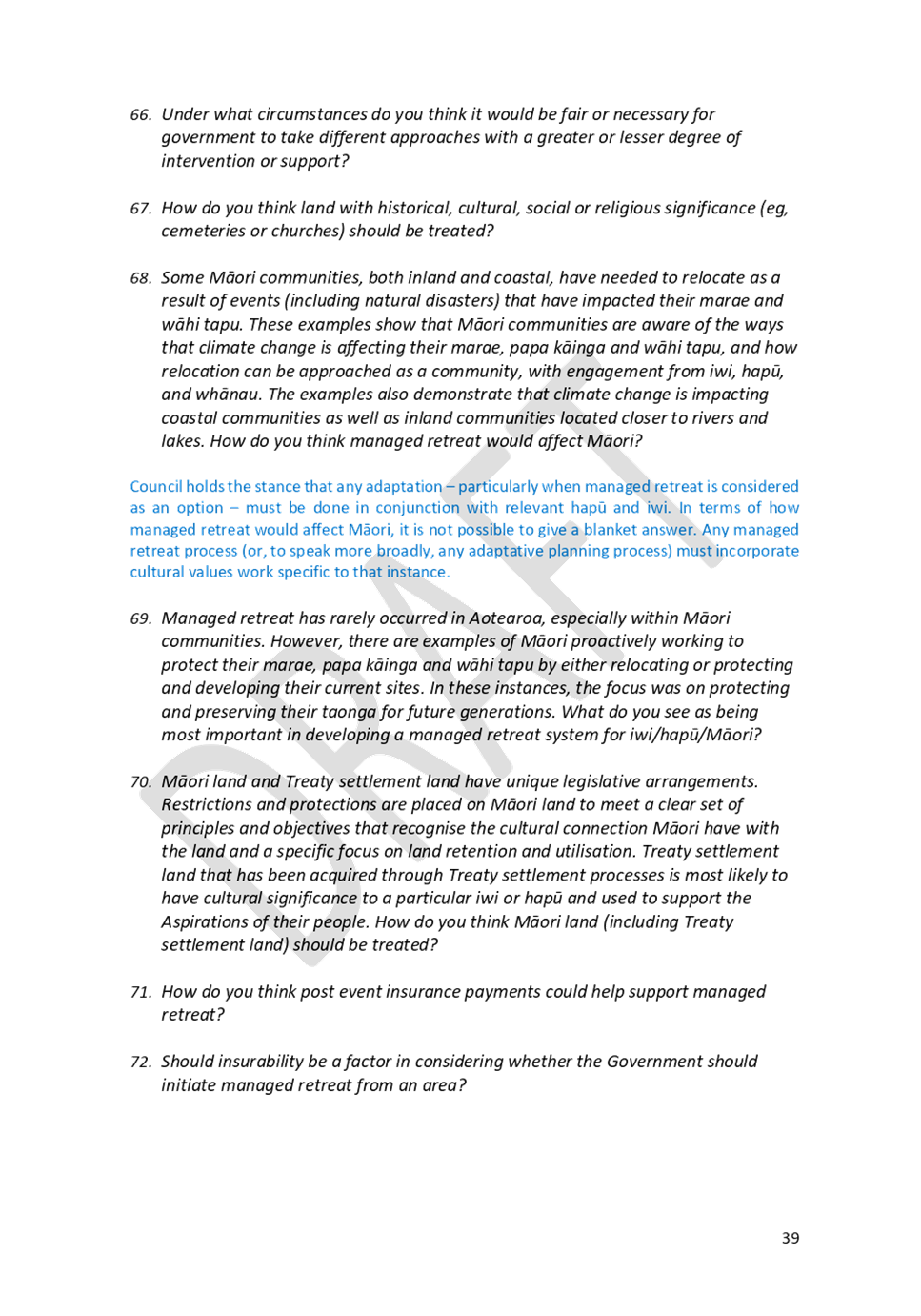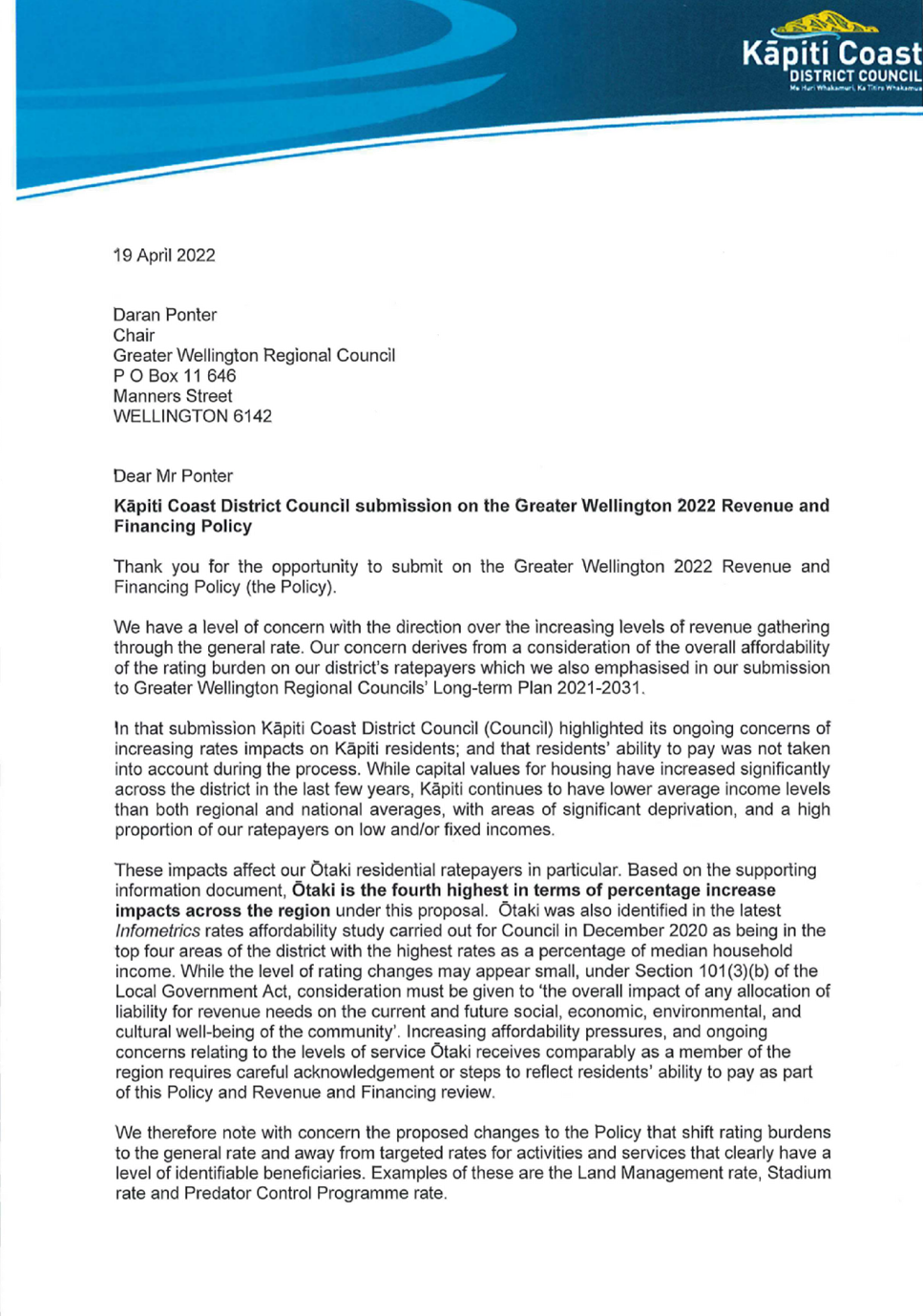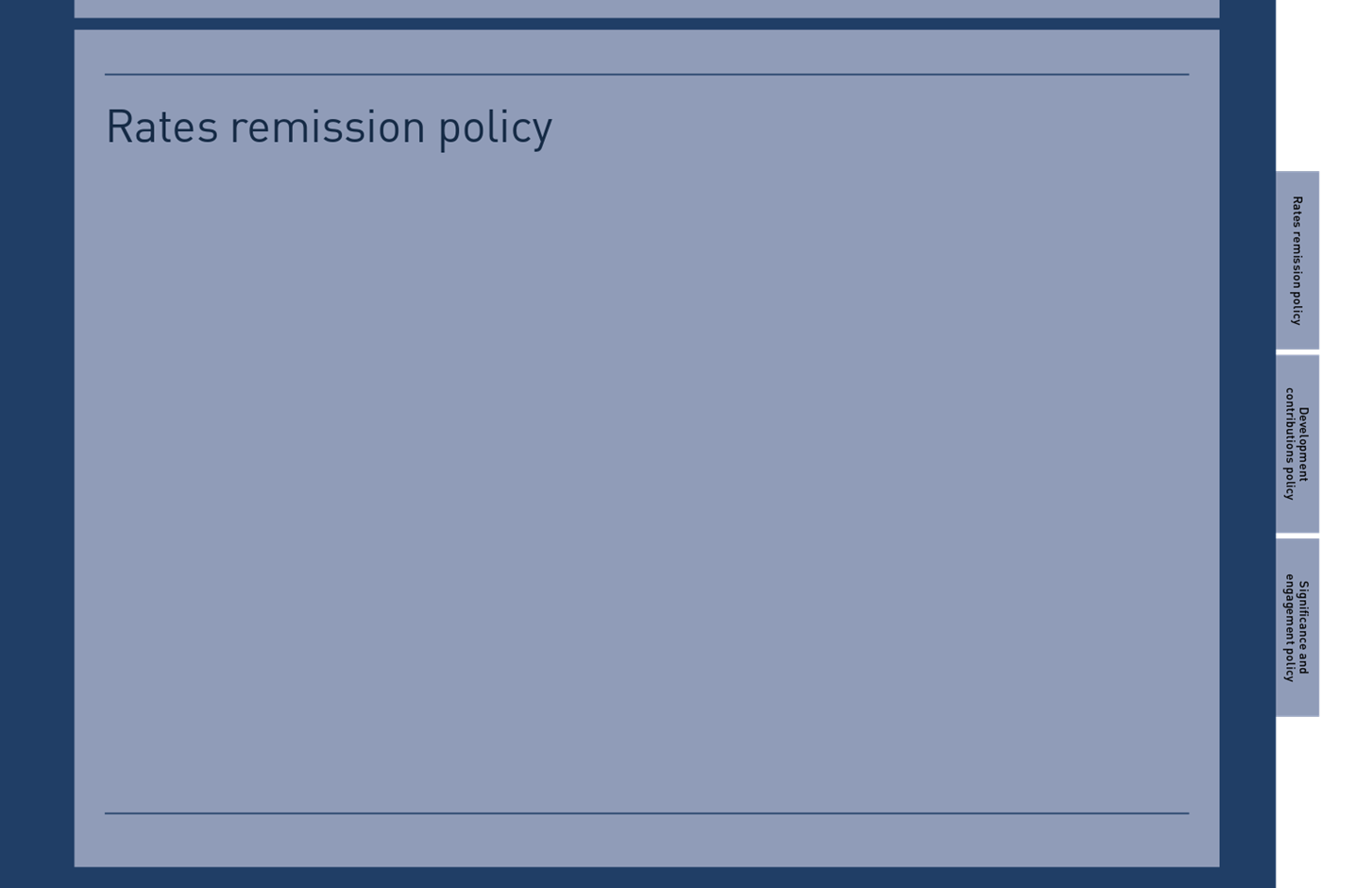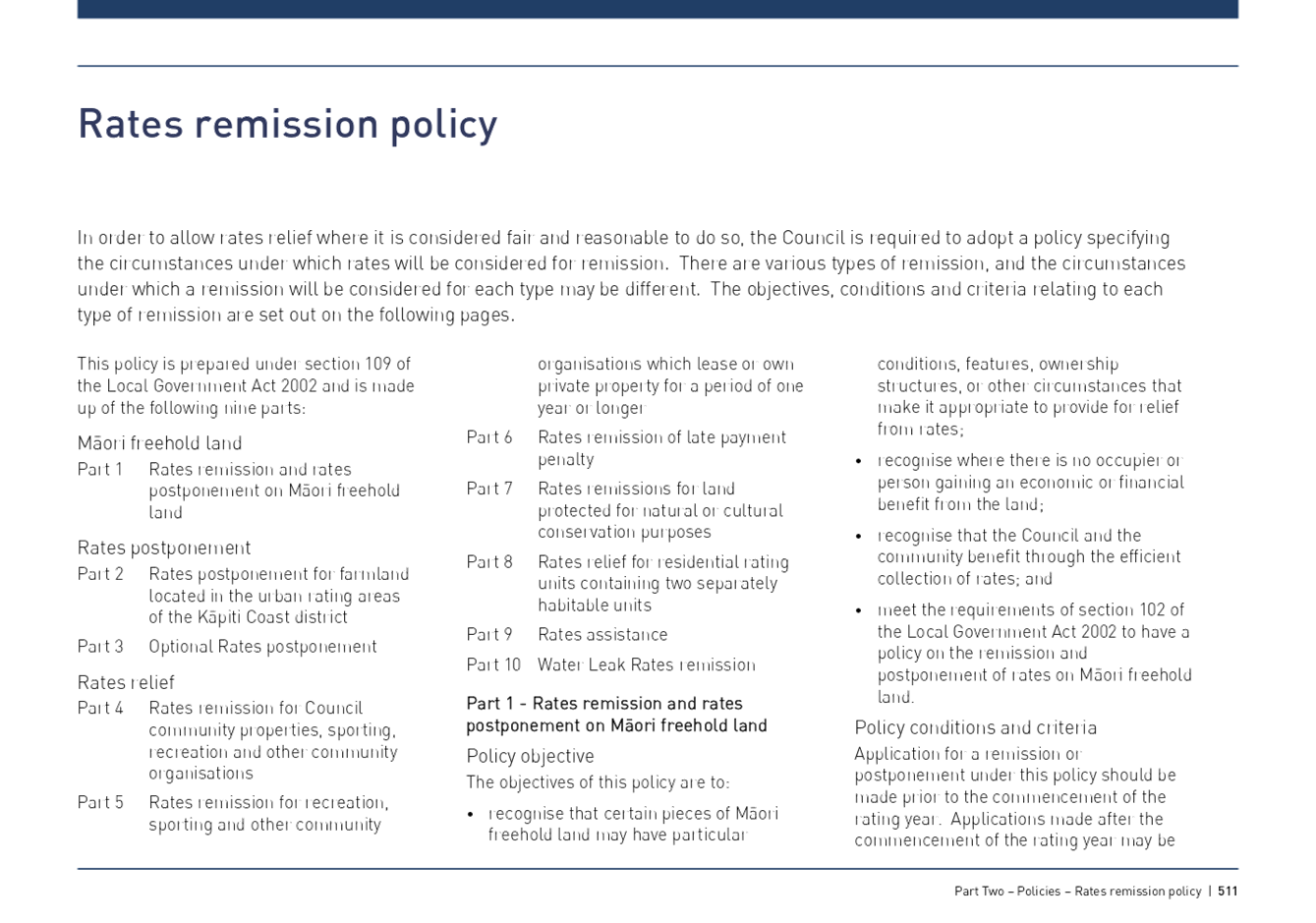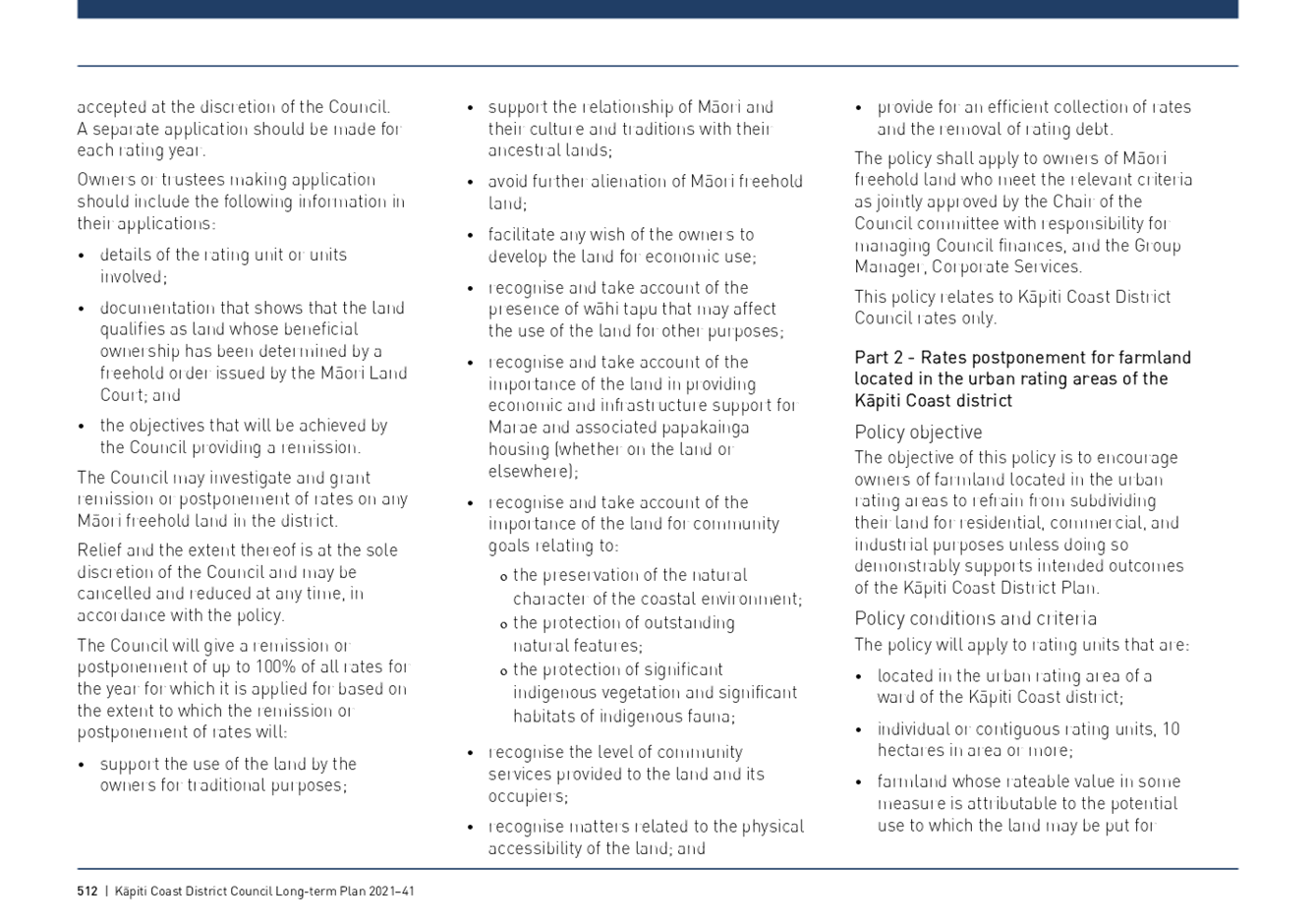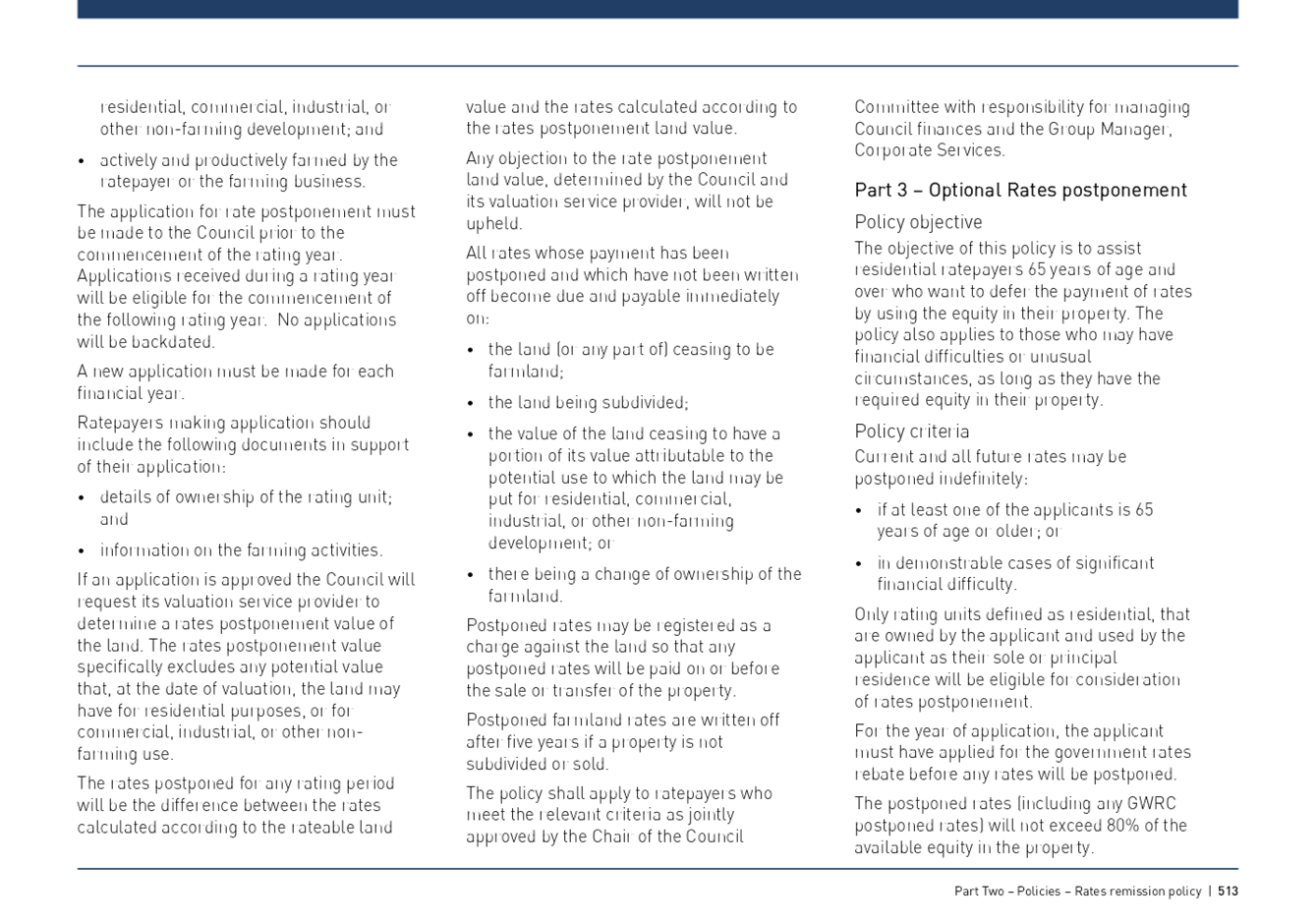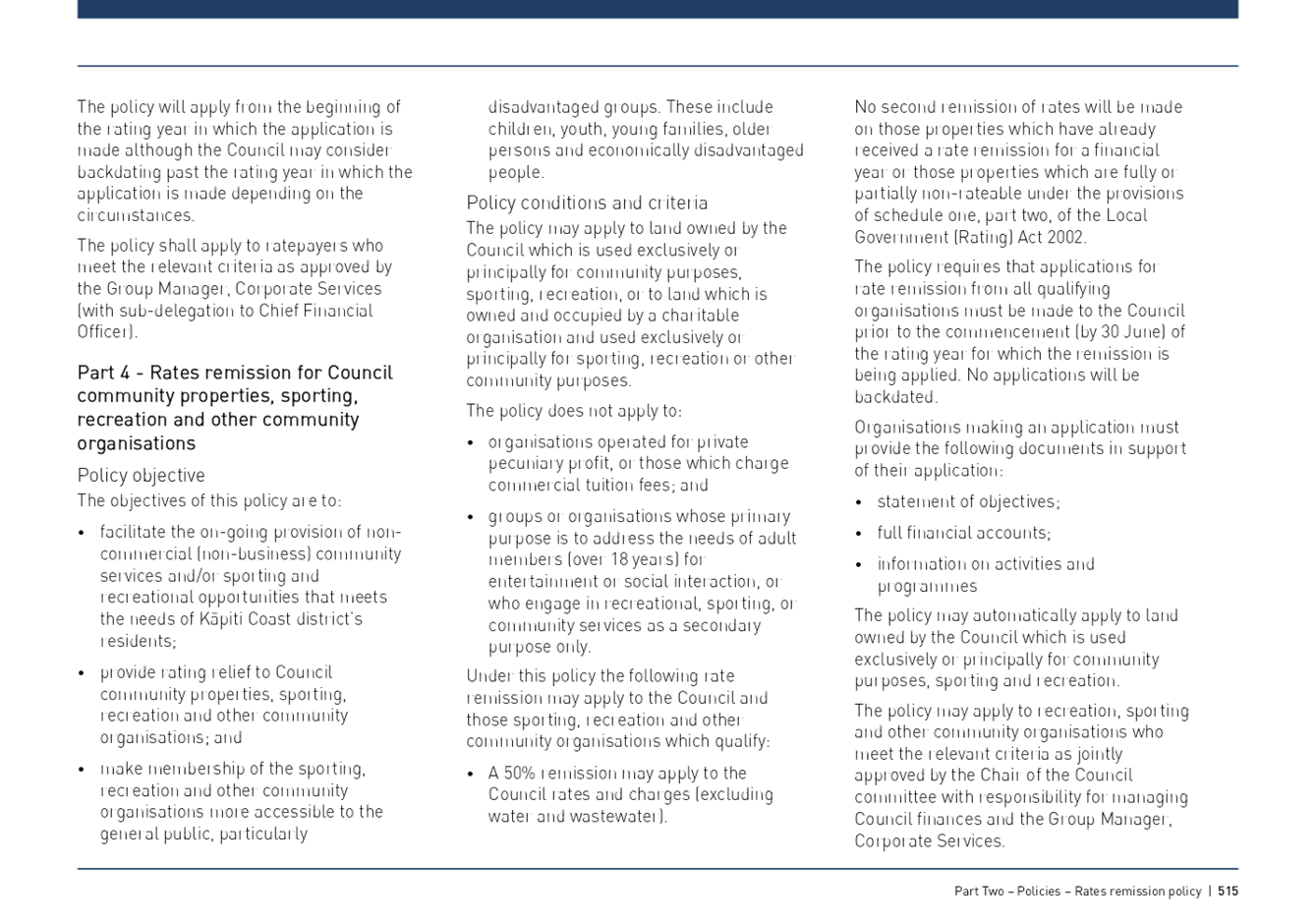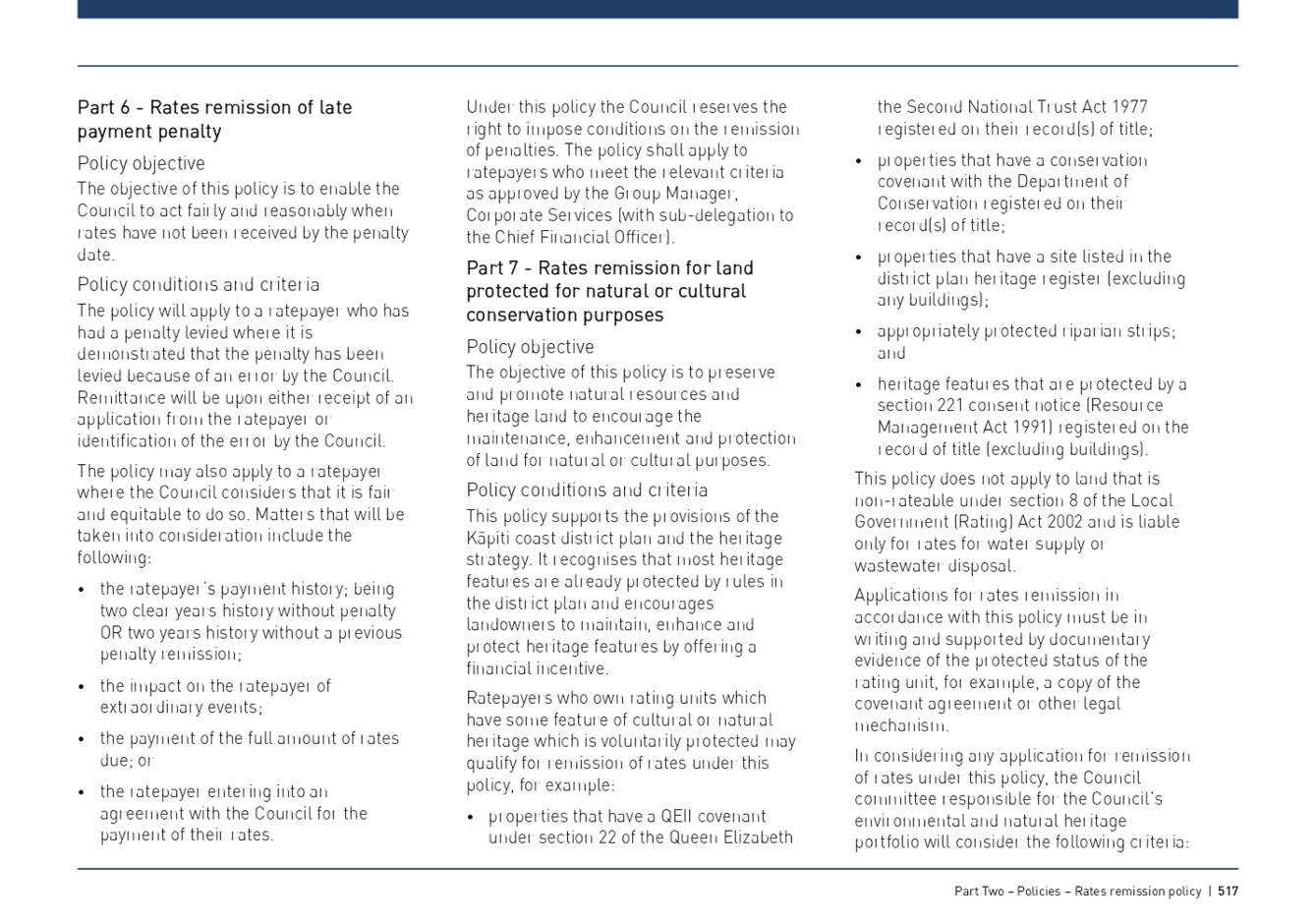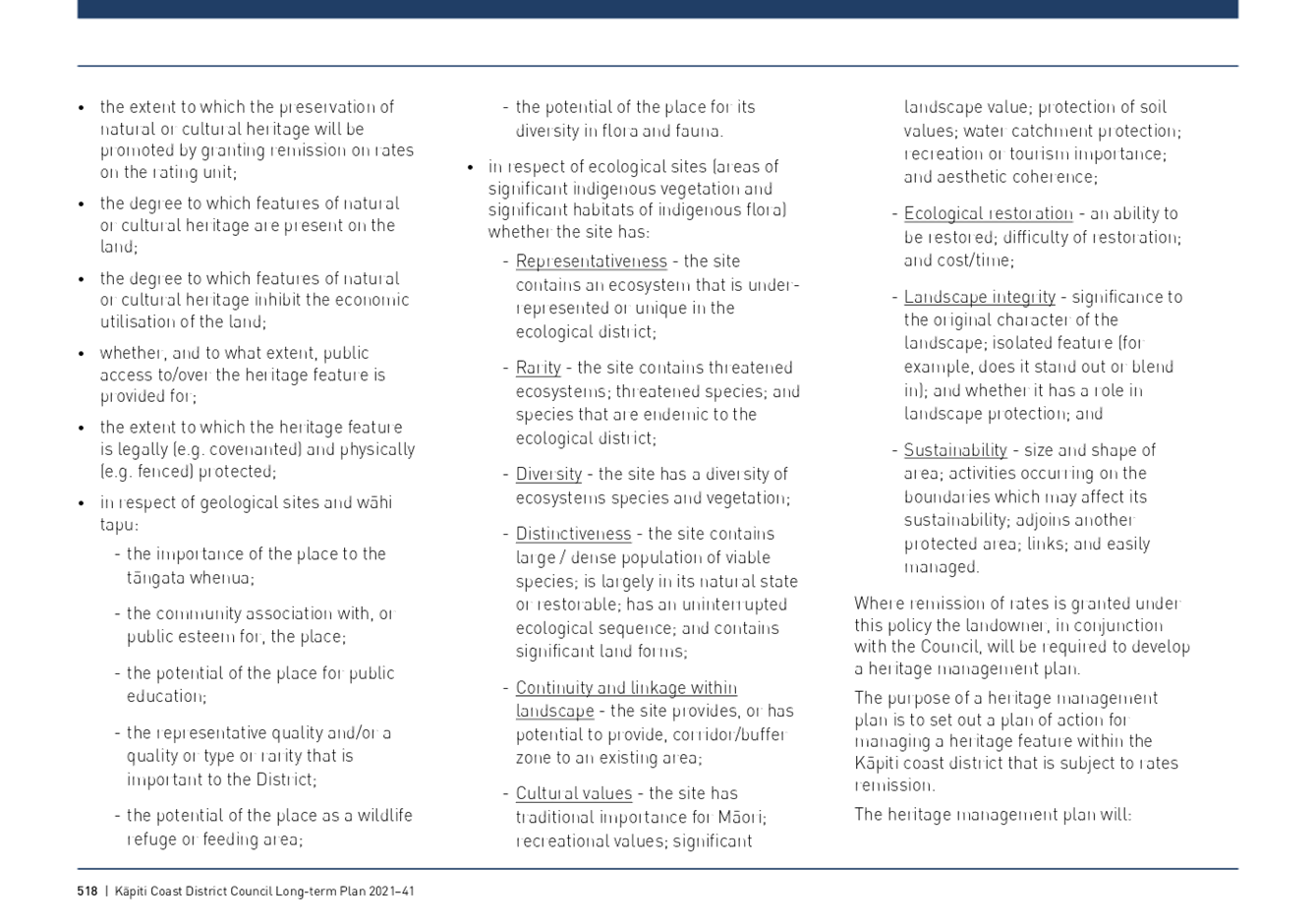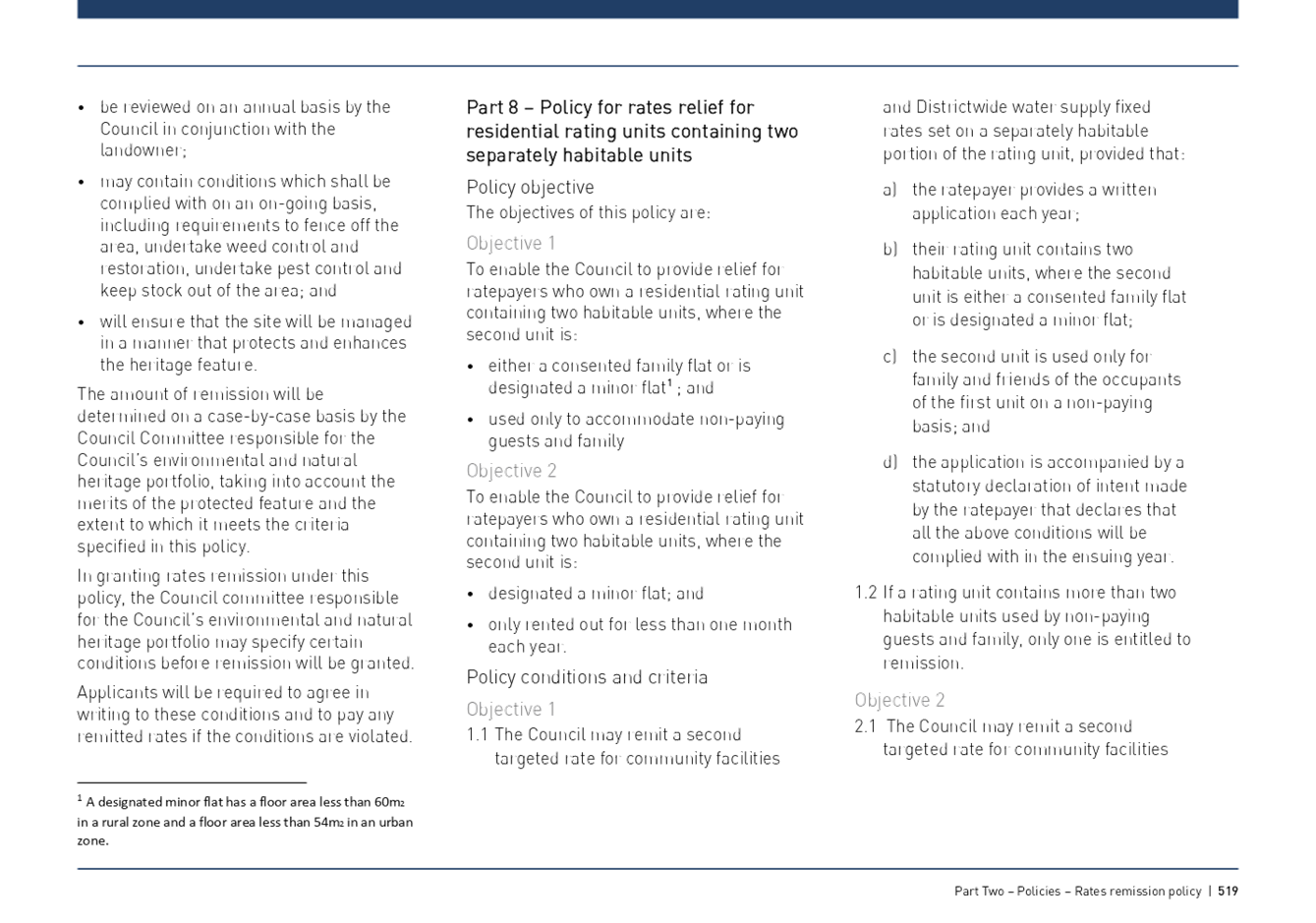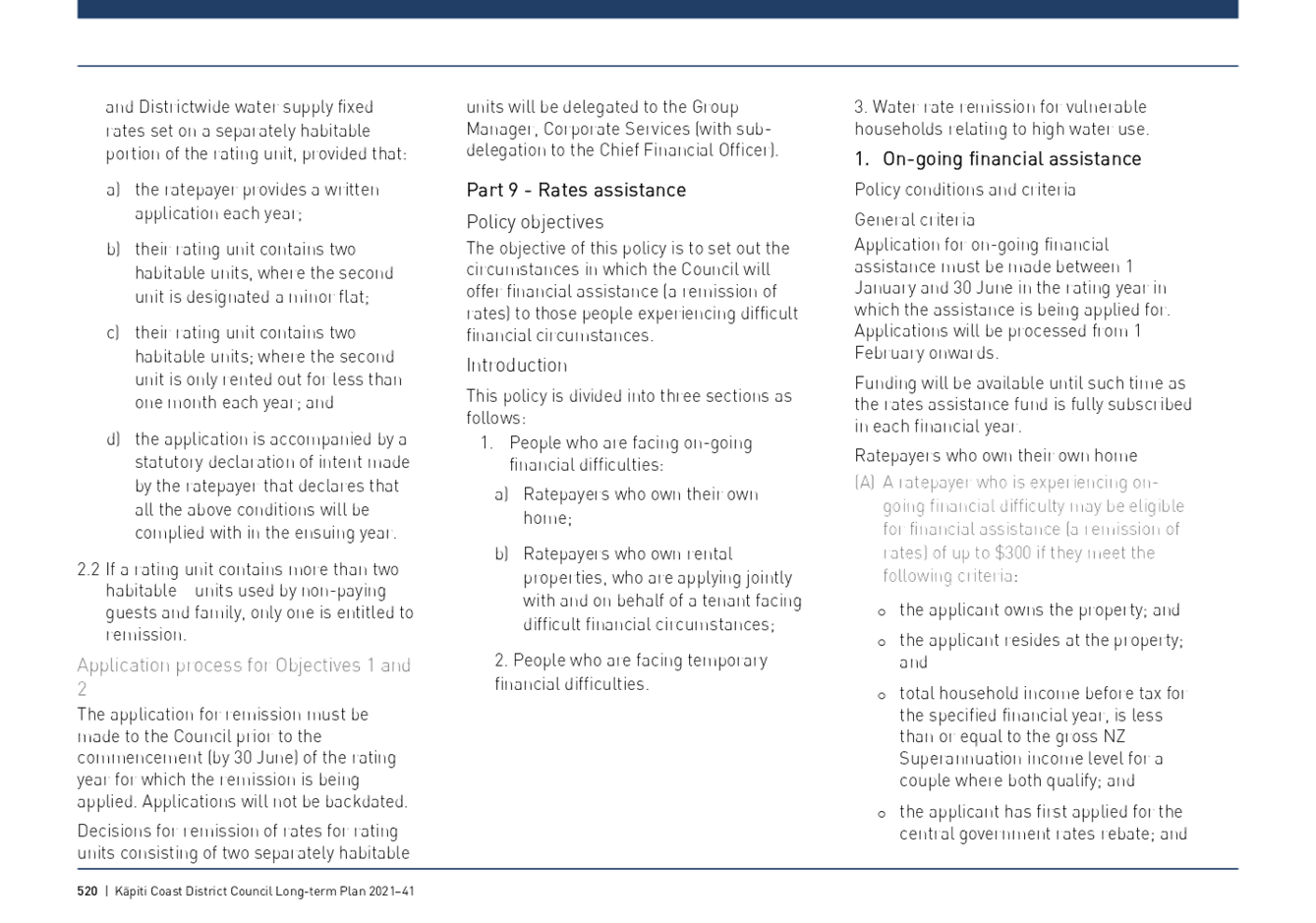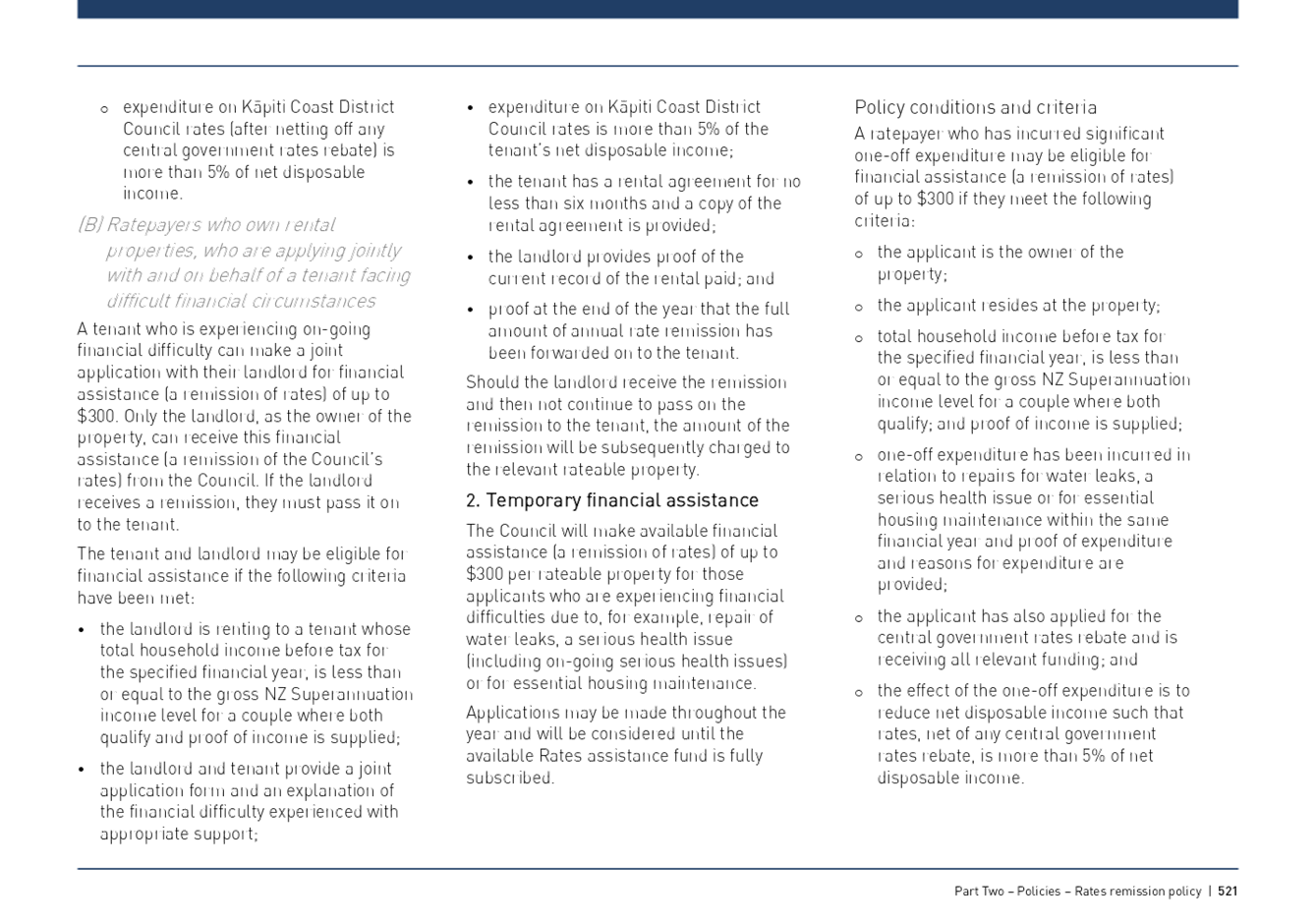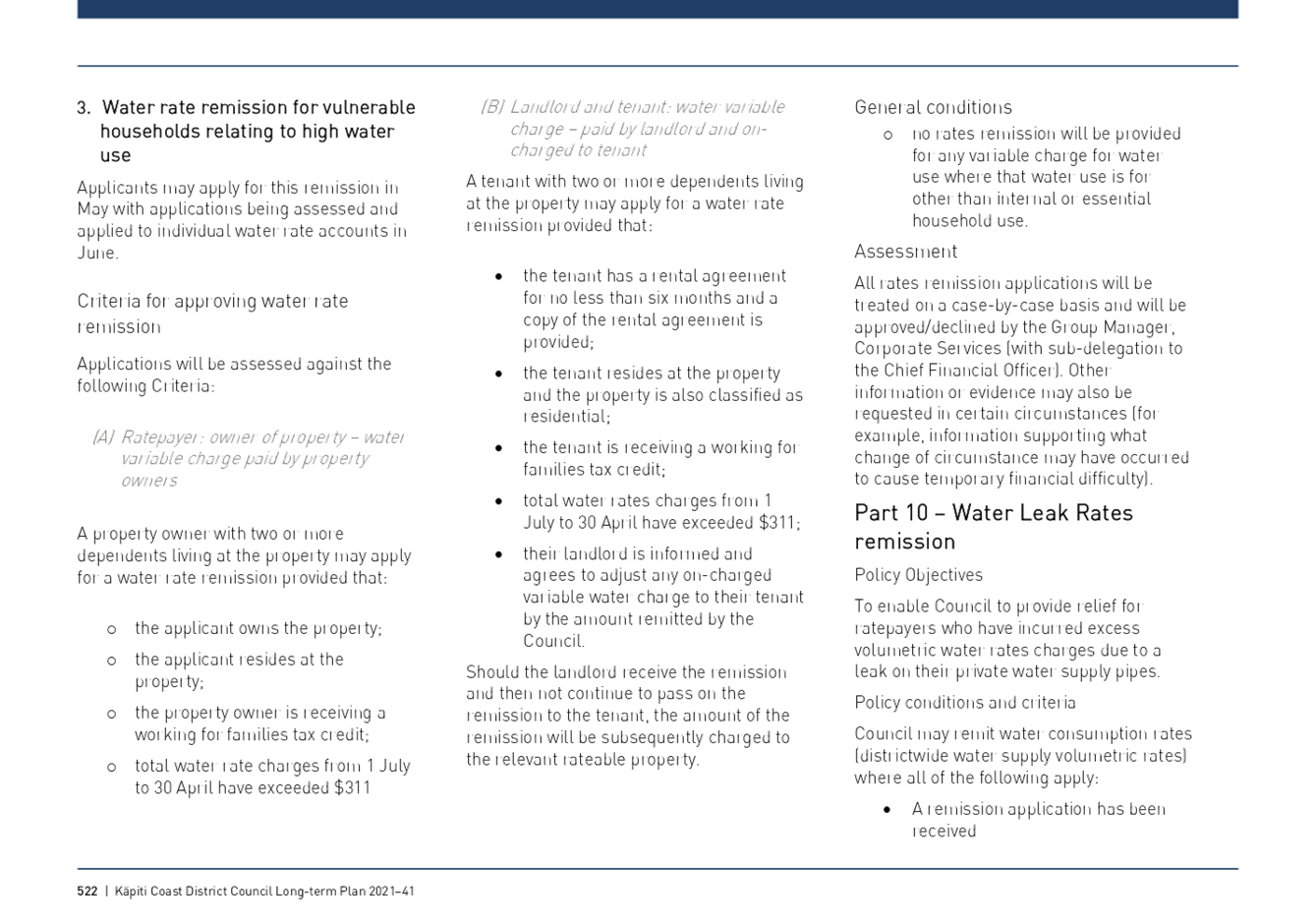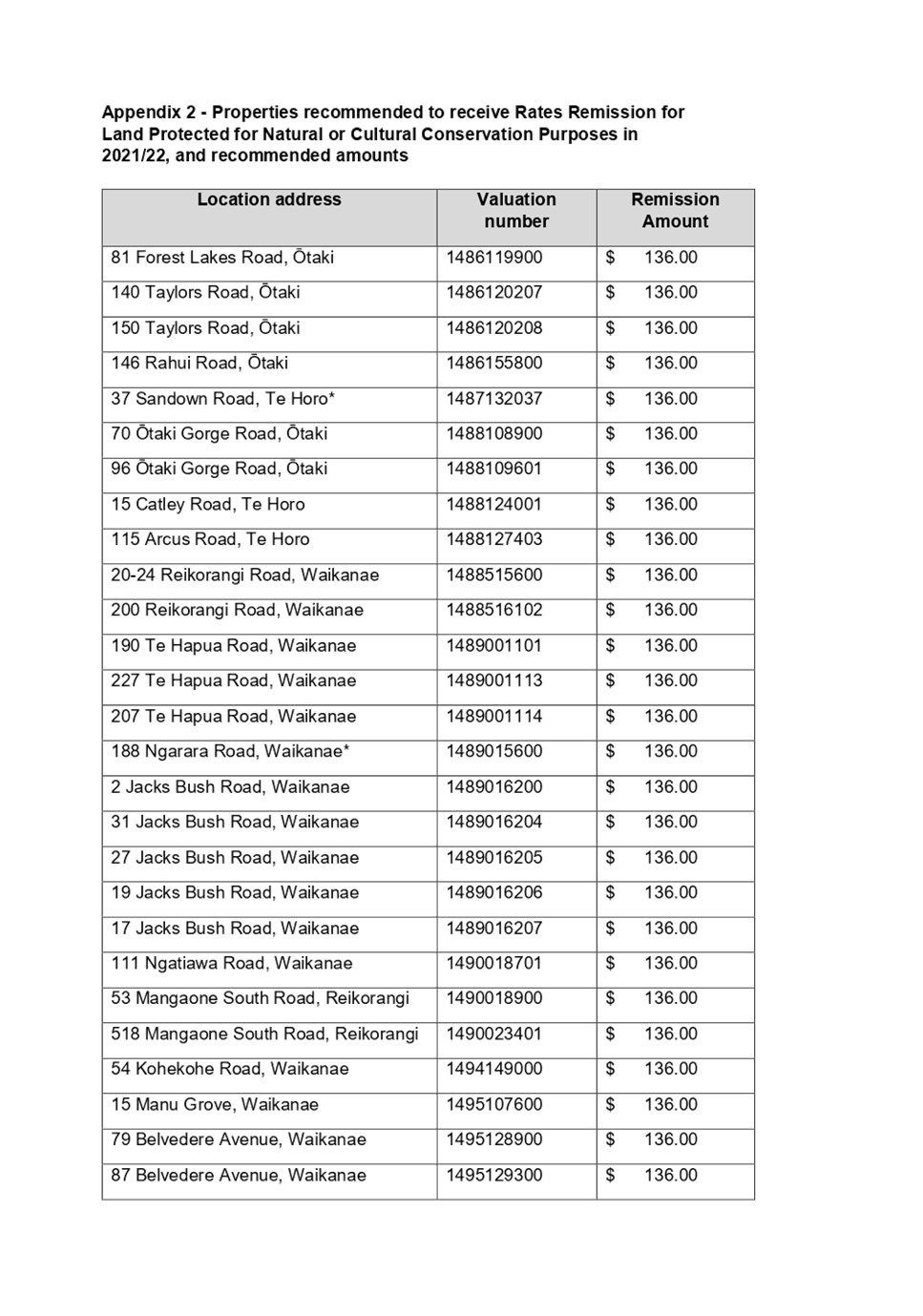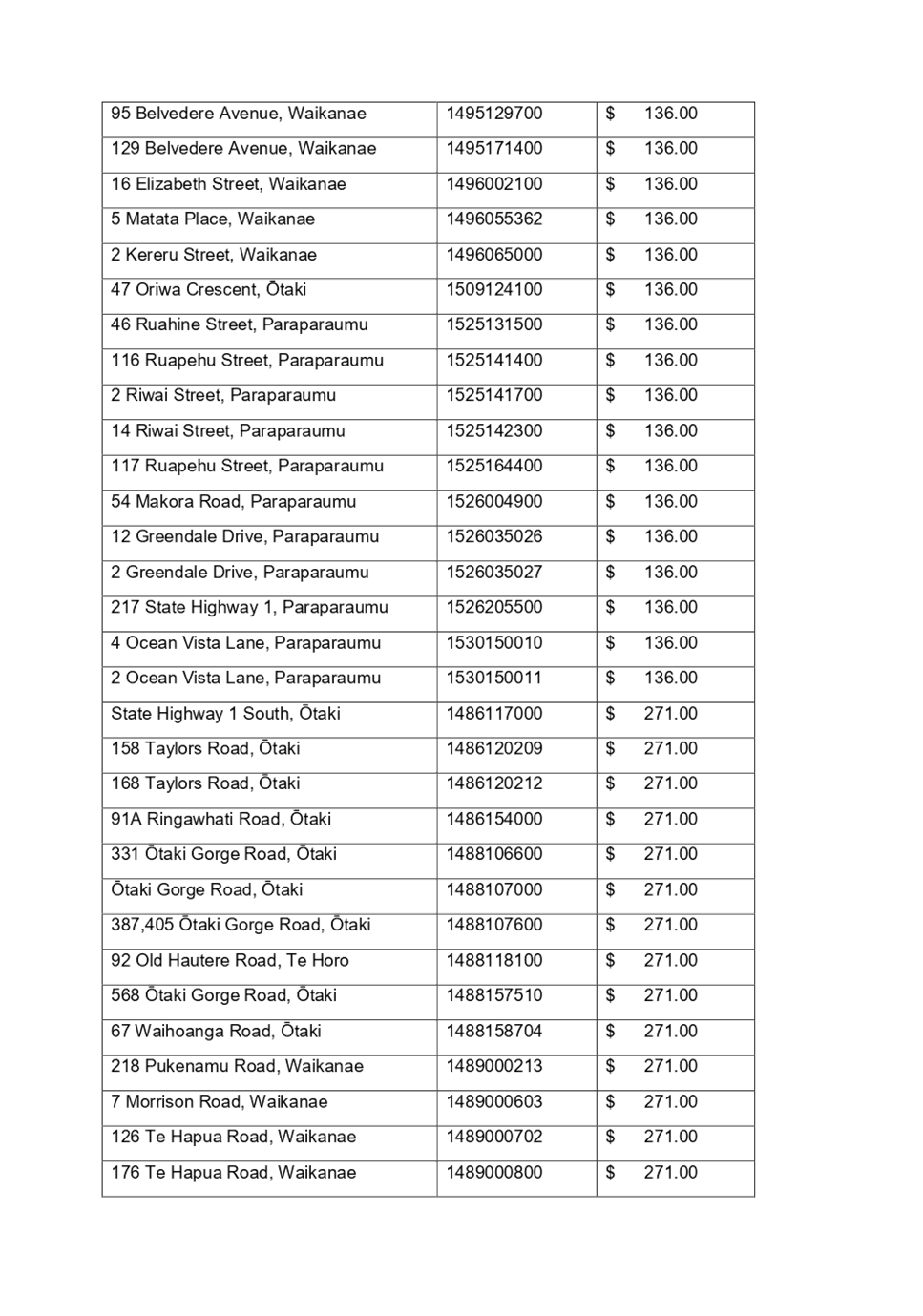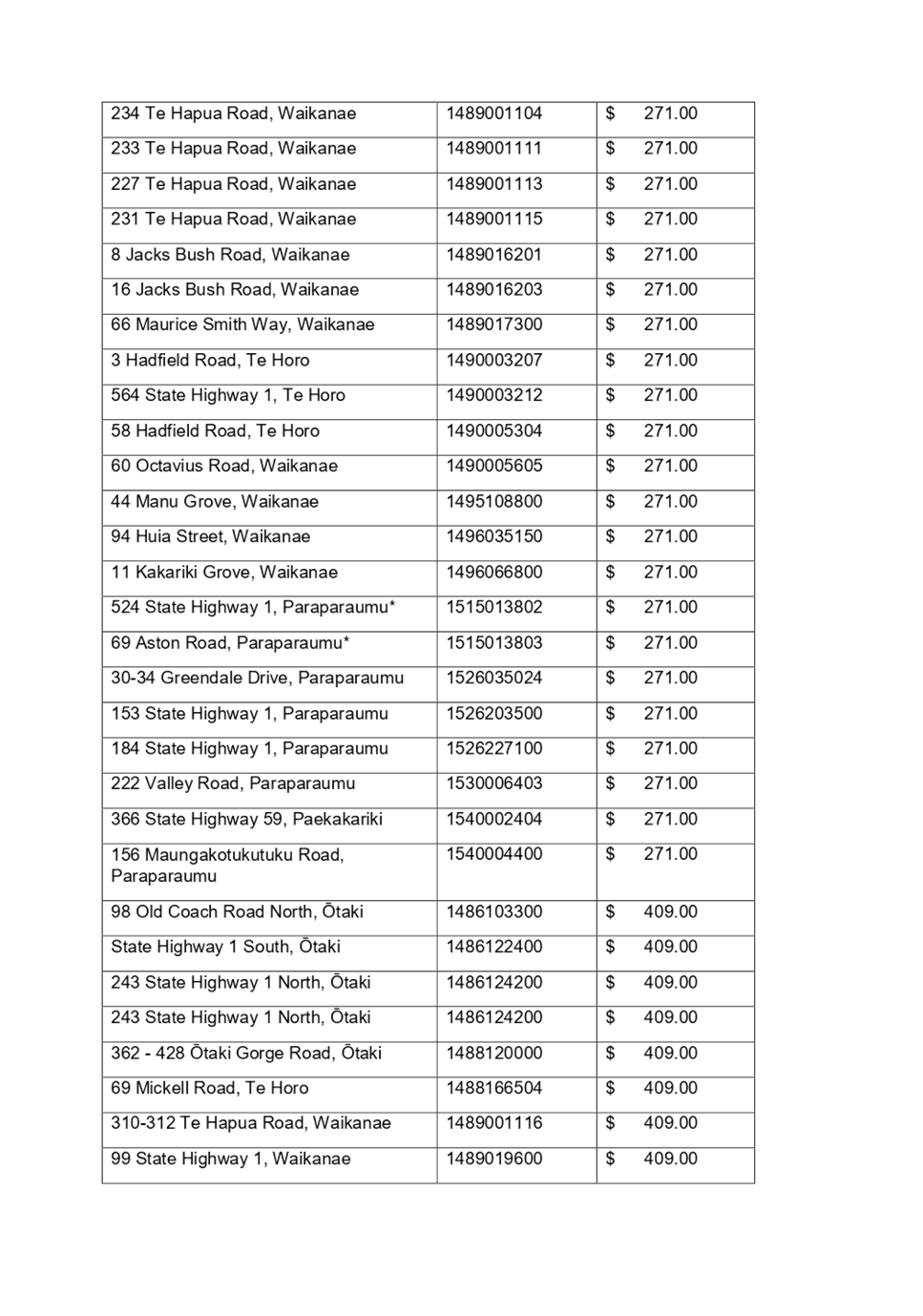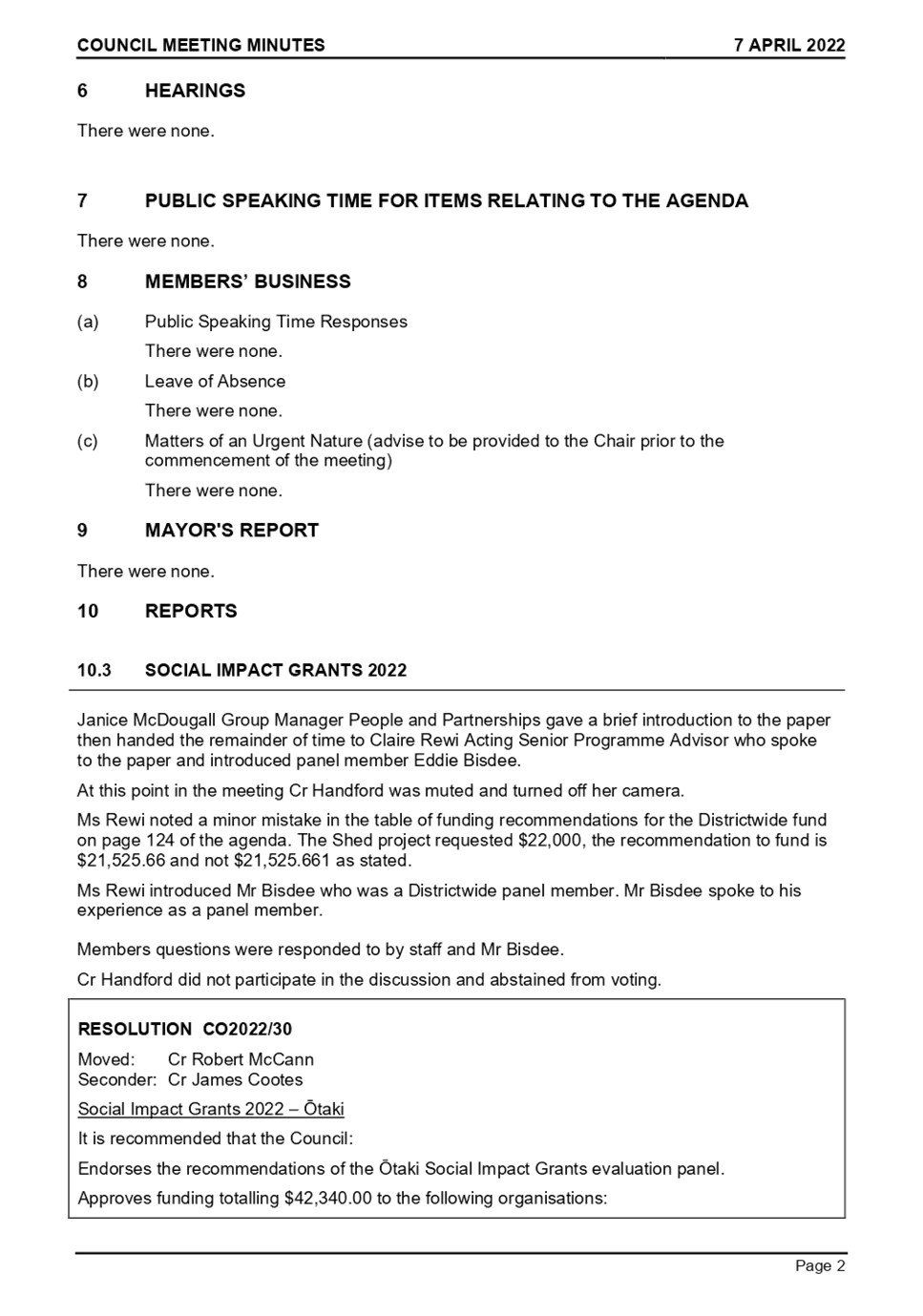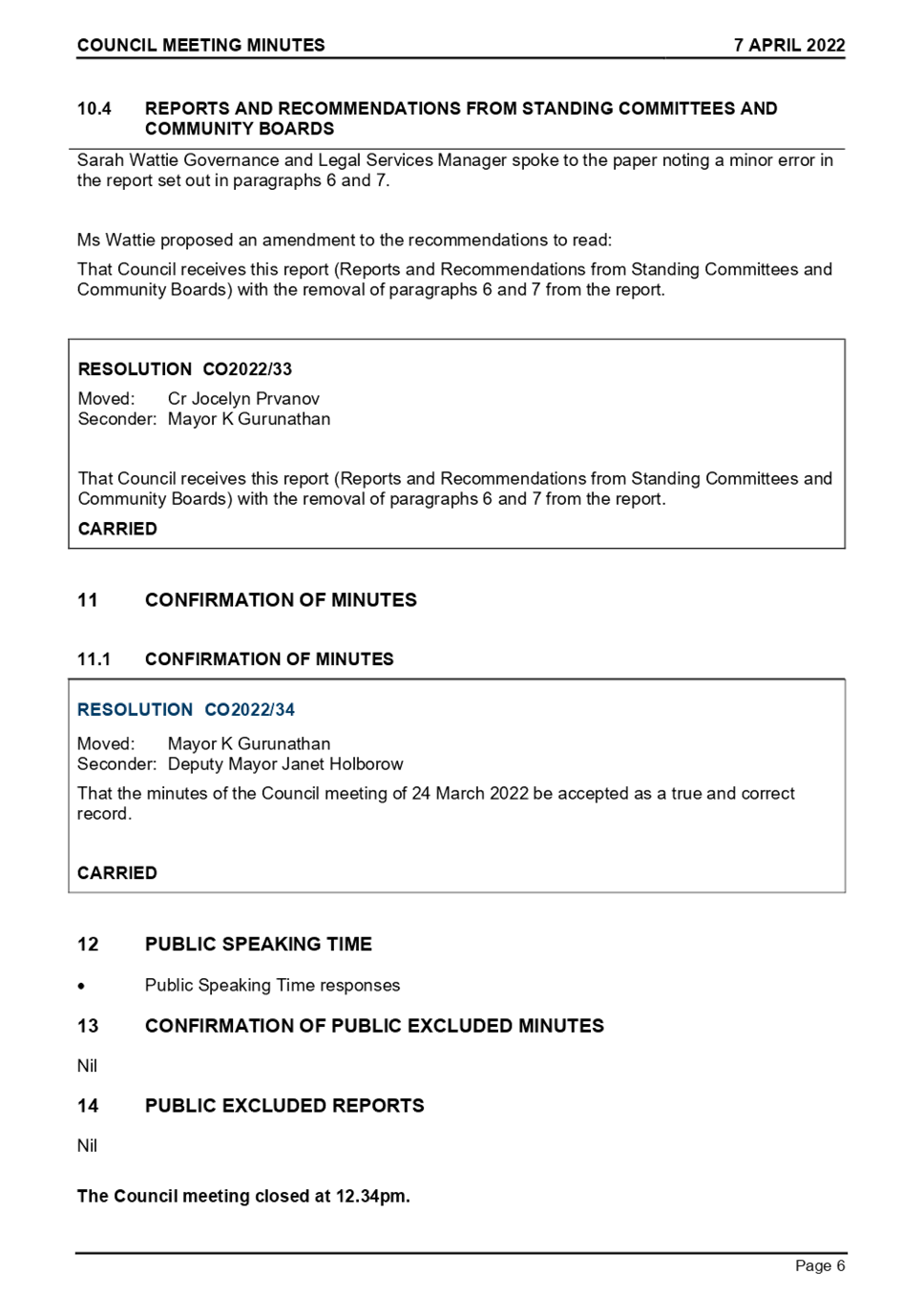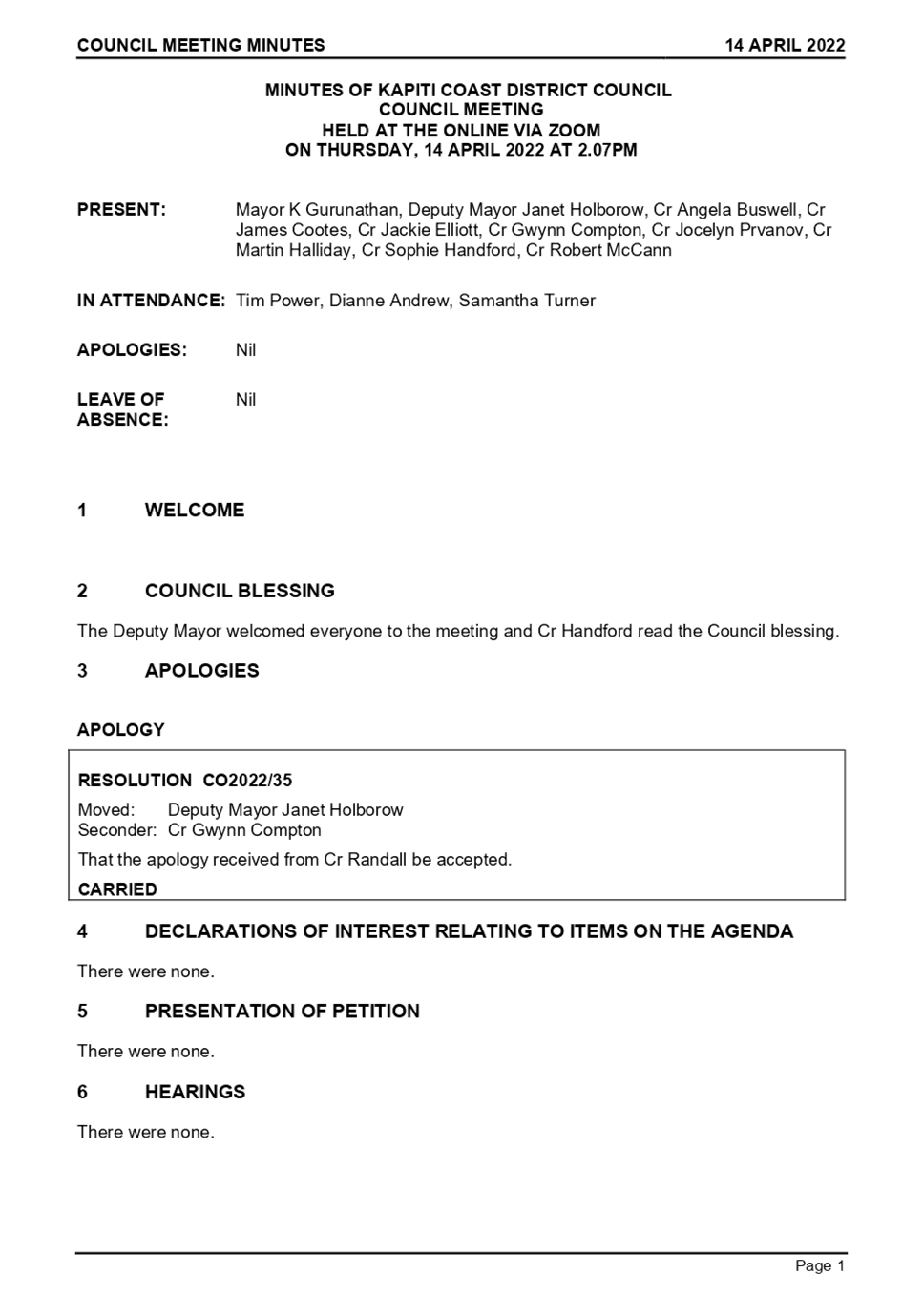|

|
|
AGENDA
Council Meeting
|
|
I hereby give notice that a Meeting of the Kapiti
Coast District Council will be held on:
|
|
Date:
|
Thursday, 26 May 2022
|
|
Time:
|
9.30am
|
|
Location:
|
Council
Chamber
Ground
Floor, 175 Rimu Road
Paraparaumu
|
|
Sean Mallon
Acting Chief Executive
|
|
Council
Meeting Agenda
|
26 May 2022
|
Kapiti Coast District Council
Notice is hereby given
that a meeting of the Kapiti Coast District Council will be held in the Council Chamber, Ground Floor, 175 Rimu Road,
Paraparaumu, on Thursday 26 May 2022, 9.30am.
Council Members
|
Mayor
K Gurunathan
|
Chair
|
|
Deputy
Mayor Janet Holborow
|
Deputy
|
|
Cr
Angela Buswell
|
Member
|
|
Cr
James Cootes
|
Member
|
|
Cr
Jackie Elliott
|
Member
|
|
Cr
Gwynn Compton
|
Member
|
|
Cr
Jocelyn Prvanov
|
Member
|
|
Cr
Martin Halliday
|
Member
|
|
Cr
Sophie Handford
|
Member
|
|
Cr
Robert McCann
|
Member
|
|
Cr
Bernie Randall
|
Member
|
2 Council
Blessing
“As we deliberate on the
issues before us, we trust that we will reflect positively on the
communities we serve. Let us all seek to be effective and just, so that with
courage, vision and energy, we provide positive leadership in a spirit of
harmony and compassion.”
I a mātou e whiriwhiri ana
i ngā take kei mua i ō mātou aroaro, e pono ana mātou ka
kaha tonu ki te whakapau mahara huapai mō ngā hapori e mahi nei
mātou. Me kaha hoki mātou katoa kia whaihua, kia tōtika
tā mātou mahi, ā, mā te māia, te tiro whakamua me te
hihiri ka taea te arahi i roto i te kotahitanga me te aroha.
3 Apologies
4 Declarations
of Interest Relating to Items on the Agenda
Notification from Elected
Members of:
4.1 – any interests that
may create a conflict with their role as an elected member relating to the
items of business for this meeting, and
4.2 – any interests in
items in which they have a direct or indirect pecuniary interest as provided
for in the Local Authorities (Members’ Interests) Act 1968
5 Presentation
of Petition
Nil
6 Hearings
Nil
7 Public
Speaking Time for Items Relating to the Agenda
8 Members’
Business
(a)
Public Speaking Time Responses
(b)
Leave of Absence
(c)
Matters of an Urgent Nature (advice to be provided to the Chair prior to
the commencement of the meeting)
9 Mayor's
Report
Nil
10.1 2022/23
Annual Plan Adoption of Fees & Charges
Kaituhi |
Author: Su
Mon, Principal Advisor - Finance
Kaiwhakamana
| Authoriser: Mark de Haast, Group Manager Corporate Services
Te pūtake |
Purpose
1 The
purpose of this report is to recommend that the Council adopt the user fees and
charges for the 2022/23 Annual Plan.
He
whakarāpopoto | Executive summary
2 Kapiti
Coast District Council undertook a public information campaign on the 2022/23
Annual Plan during April 2022, which includes proposed changes to fees and
charges.
3 The
proposed changes to fees and charges include:
3.1 An
increase to majority of fees based on the Local Government Cost Index (LGCI) of
2.4%;
3.2 Some
changes to fees outside of LGCI;
3.3 Removal of
some fees in the Libraries area; and
3.4 Changes to
the way some fees are charged in the Animal Management, Resource Consents, and
Swimming Pools areas.
4 As
part of the Council’s ongoing commitment to improve customer service, the
following year’s fees and charges are usually adopted in late May or
early June to allow for invoicing in June prior to the start of the new
financial year.
Te tuku haepapa
| Delegation
5 Only
the Council has the authority to adopt fees and charges in accordance with the
Long Term Plan (LTP) and/or the Annual Plan in years two and three of the LTP.
Taunakitanga | RECOMMENDATIONS
A. That
the Council receives and notes this report, including Appendix 1 to this
report.
B. That
the Council notes the exceptions to the 2022/23 User Fees and Charges as
outlined in paragraphs 15 to 23 of this report.
C. That
the Council adopts the 2022/23 Schedule of User Fees and Charges, attached as
Appendix 1 to this report.
D. That
the Council Delegates to the Mayor, the Deputy Mayor, the Chair of the Strategy
and Operations Committee and the Chief Executive, the authority to approve
minor editorial changes to the material contained in Appendix 1 to this report.
Tūāpapa | Background
6 The
Revenue and Financing Policy guides our decisions on how to fund Council
services. The policy takes into consideration who benefits from a service (individuals,
parts of the community or the community as a whole) to help determine how the
service should be funded. It then sets targets for each Council activity
specifying which portion should be funded from user charges, general rates,
targeted rates, and other sources of income.
7 The
Council’s Revenue and Financing Policy and funding targets were consulted
on through the special consultative procedure and adopted by the Council as
part of the 2021-41 Long Term Plan (LTP).
8 Approximately
14 percent of the Council’s total operating income comes from user fees
and charges. Many of the services provided by the Council, such as swimming
pool admissions, are subsidised by ratepayers so that users only pay a portion
of the full cost.
9 The
cost of providing our services and facilities increase every year and is
reviewed as part of developing our plans. This includes looking at the real
cost of delivering those services, and any changes to how the services are
provided, such as extended hours, or how they are being used by the community.
We also want to make sure that any subsidies, such as those for Gold Card
holders and Community Services Card holders, remain reasonable.
10 Given
we are continually working to make the delivery of our services more efficient
without reducing levels of services, the only options for funding the
additional cost of providing Council services are to:
10.1 Increase
user fees and charges, or
10.2 Increase
the portion of costs to be funded from rates, or
10.3 A
combination of the above.
11 The
impact of increasing fees and charges reduces the rates increase and vice
versa. The changes to fees and charges outlined in this report, contribute to
the average rates increase of 7.5% proposed in the 2022/23 Annual Plan
information campaign.
12 Workshops
with Councillors were held on 10th and 24th February 2022, discussing the
preparation of the Annual Plan, and the Council undertook a public information
campaign during April 2022 on the proposed 2022/23 Annual Plan, which included
fees and charges.
13 The changes proposed
to fees and charges include:
13.1 An
increase to majority of fees based on the Local Government Cost Index (LGCI) of
2.4%;
13.2 Some
changes to fees outside of LGCI;
13.3 Removal of some fees in
the Libraries area; and
13.4 Changes to the way some
fees are charged in the Animal Management, Resource Consents, and Swimming
Pools areas.
14 The
following years’ fees and charges are usually approved by Council in late
May or early June, to allow for invoicing in June prior to the start of the new
financial year. Early communication of fees also provides flexibility for
customers and the ability to make early payment arrangements before the invoice
due date.
He
kōrerorero | Discussion
15 The
table below summarises the fees and charges that are proposed to be changing
outside of inflation (LGCI):
|
Service
Area
|
Description
|
Current Fee
(incl GST)
|
Proposed Fee
(incl GST)
|
% increase
|
|
Arts and
Museums
|
Arts Trail
participation fee and entry in Arts Guide
|
$185
|
$190
|
2.7%
|
|
Entry in
Kāpiti Arts Guide only
|
$125
|
$130
|
4.0%
|
|
Building
Consents
|
Solid fuel
heater (includes one inspection)
|
$270
|
$280
|
3.7%
|
|
Application for
certificate of acceptance
|
$340 plus building consent fees
applicable to project
|
$348 (includes first 2 hours. $167 per
hour thereafter), plus building consent fees applicable to project
|
2.4%
|
|
Environmental
Health – Animal Management
|
Euthanasia fee
|
Actual cost plus 10%, but minimum charge of $49
applies
|
Removed – combined with relinquishment fee
below
|
-
|
|
Relinquishment fee
|
$83
|
$120
|
44.6%
|
|
Laboratory
|
Laboratory fee
increases reflect cost of consumables
|
various
|
various
|
3 - 9%
|
|
Libraries
|
Overdue loan charges
|
various
|
removed
|
-
|
|
Some library fees such as
cost of library bags
|
various
|
No change – remain at 2021/22
level
|
-
|
|
Fees
for joining Kāpiti Coast District Libraries as a subscription member or
by paying prescribed fees
|
$2.50 per item
|
$2.60 per item
|
4.0%
|
|
$70 for six months
|
$75 for six months
|
7.1%
|
|
$140 per annum
|
$145 per annum
|
3.6%
|
|
Resource
Consents
|
Non-notified
land use activities – general
|
$1,467 Deposit (covers first 8 hours of processing
time and 1 hour of compliance monitoring) $163 per hour thereafter
|
$1,837 Deposit (covers first 10 hours of
processing time and 1 hour of compliance monitoring) $167 per hour thereafter
|
25.2%
|
|
Subdivisions
– 2-lot
|
$2,608 Deposit (covers first 16 hours of
processing time) $163 per hour thereafter
|
$3,006 Deposit (covers first 18 hours of
processing time) $167 per hour thereafter
|
15.3%
|
|
Subdivisions
(between 3 to 19 lots)
|
$2,934 Deposit (covers first 18 hours of
processing time) $163 per hour thereafter
|
$3,340 Deposit (covers first 20 hours of
processing time) $167 per hour thereafter
|
13.8%
|
|
Swimming
Pools
|
Selected fees
such as learn to swim, child swim, community services holder, senior citizen,
aquafit, and hydroslide
|
various
|
No change – remain at 2021/22
level
|
-
|
|
Aquatic (Small Group)
programmes
|
$65 for a 10-week term
|
10-week fee removed and replaced with
enrolment for term, which is variable
|
-
|
|
Some pool fees slightly
over LGCI due to rounding of fees to nearest dollar
|
various
|
various
|
various
|
16 Arts
& Museums
16.1 The
Kapiti Arts Trail fees are increasing slightly over LGCI due to rounding of
fees to the nearest five dollars.
17 Building
Consents
17.1 The
solid fuel heater minor work inspection fee is increasing by 3.7%, as these
applications are taking much longer to process. The small increase will help recover
some of the cost of processing, while balanced by the need to support and
promote warm dry homes.
17.2 The
application fee for Building Consents certificate of acceptance is changing to
cover the first 2 hours only. This reflects the time it takes Council to
process these applications. If required, additional hours will be charged at
the Building Consents Officer’s hourly rate.
18 Environmental
Health – Animal Management
18.1 The
euthanasia fee is proposed to be removed and combined with the fee for relinquishment
of a dog. The relinquishment fee covers sustenance, administration, rehoming or
if necessary, euthanisation.
18.2 The
relinquishment fee is proposed to be increased from $83 to $120, to recover
administrative costs associated with rehoming and to factor in euthanasia costs
if required.
19 Laboratory
19.1 Majority
of laboratory fees will be increasing between 3 - 9% to reflect the increase in
cost of consumables.
20 Libraries
20.1 Library
overdue loan charges are proposed to be removed. This will remove the barrier
that fines can present for some residents and make library services more
accessible to the whole district.
20.2 No
changes are proposed for some fees such as library bags. These will remain at
2021/22 levels.
20.3 The six
month and annual membership subscriptions fees for some library users situated
outside the Kapiti Coast district, are increasing between 3.6% – 7.1% due
to rounding of fees to the nearest five dollars.
21 Resource
Consents
21.1 The
resource consent deposit fees for non-notified land use consents and some
subdivision applications are proposed to be increased to cover 2 additional
hours of processing time, then it currently does.
21.2 After
an analysis of the additional time that is being charged on resource consent
applications, it has become apparent that the current deposit fees are not
sufficient to cover the average processing time for non-notified land use
consents and some subdivision applications. Although Council can charge
additional time if the overall processing time exceeds the deposit, to provide
more certainty to applicants around processing costs, it is considered fairer
and more transparent to increase the deposit fees rather than relying on
charging additional time at the end of the process.
22 Swimming
Pools
22.1 No
changes are being proposed for some pool fees such as learn to swim, child
swim, community services holder, senior citizen, aquafit, and hydroslide. These
fees will remain at the 2021/22 levels.
22.2 The
current fee for the 10-week aquatic (small group) programme is proposed to be
removed and replaced with an enrolment per term fee which recognises that the
length of term is variable.
22.3 Some
fees will be increasing slightly over LGCI due to rounding of fees to the
nearest dollar.
23 Having
considered the above reasons, Council officers recommend that the proposed
increase to fees and charges proceed. A user-pays approach is fair in that only
the customer requiring the service pays for what they require. If this
approach is not adopted, then the costs associated with providing these levels
of service will be funded by rates.
He
take | Issues
24 By
approving the 2022/23 fees and charges early, the Council is able to notify dog
owners of next year’s dog registration fees in advance of invoices being
issued and falling due for payment either on or before 31 July 2022. This
provides more certainty for customers and contributes to Council’s
ongoing commitment to improve customer service.
25 This
matter has a low level of significance under the Council’s Significance
and Engagement Policy.
Ngā
kōwhiringa | Options
26 There
are no options in addition to those already noted in this report.
Tangata whenua
27 There
are no Tāngata whenua considerations arising directly from this report.
Panonitanga āhuarangi | Climate change
28 There
are no climate change considerations arising directly from this report.
Ahumoni me ngā rawa | Financial
and resourcing
29 This
report discusses one of the key funding considerations for the 2022/23 Annual
Plan. These underpin the financial forecasts in the AP and therefore decisions
made on these documents will impact on our operational and capital expenditure
forecasts.
Ture me ngā Tūraru | Legal
and risk
30 The
Local Government Act 2002 (LGA) Section 150 allows fees and charges to be
imposed by a local authority. The fees and charges meet the requirements under
the LGA and all other relevant legislation.
Ngā pānga ki ngā kaupapa here | Policy impact
31 This
report is consistent with Council’s Revenue and Financing Policy, which
was adopted as part of the 2021-41 Long Term Plan.
Te whakawhiti kōrero me te
tūhono | Communications &
engagement
32 The
Council undertook a public information campaign on the 2022/23 Annual Plan
during April 2022, which included information on proposed changes to fees and
charges.
Te mahere tūhono | Engagement
planning
33 An
engagement plan is not required to implement this decision.
Whakatairanga |
Publicity
34 A
media release will be prepared regarding the Council’s approval of the
2022/23 fees and charges. Council customers will receive, as appropriate, an
explanation of the new fees and charges as they relate to them.
35 A
public notice, as required by Section 37(6) of the Dog Control Act 1996, will
be published in a local newspaper at least once during the month preceding the
start of the 2022/23 registration year.
Ngā āpitihanga | Attachments
1. 2022/23
Schedule of User Fees and Charges ⇩ 
10.2 Consultation
on Affordable Housing Entity
Kaituhi |
Author: Laura
Bertelsen, Advisor Strategic Projects
Kaiwhakamana
| Authoriser: Angela Bell, Strategy Manager
Te pūtake |
Purpose
1 This
report seeks Council’s approval to undertake consultation on the
preferred option for the establishment of an Affordable Housing Entity for the
Kāpiti Coast District with the attached draft Statement
of Proposal.
He
whakarāpopoto | Executive summary
2 Housing
Affordability has been identified as one of the seven focus areas in
Council’s recently approved Kāpiti Coast District Housing Strategy
2022. This includes the following action: ‘Explore how alternative
tenure and ownership models could be incentivised or delivered in partnership
with others.
3 The
Kāpiti Coast Housing Needs Assessment 2022 shows a high demand for
improved access to social and affordable housing in the district, with housing
stress impacting a range of wellbeing outcomes. This is often a key issue which
impacts other outcomes such as cultural and community connection and job
security.
4 There
is a range of options available to assist with the delivery of affordable
housing, it is important that Council is clear about its key objectives and how
this will impact the approach taken.
5 To
ensure a range of affordable and social housing scenarios can be supported, it
is proposed that an Independent Community Land Trust is created. This will be
structured so that it is able to:
· deliver
outcomes directly
· partner
with Iwi and other organisations to deliver housing solutions
· support
existing providers to improve housing outcomes.
Te tuku haepapa
| Delegation
6 Council
has authority to make this decision.
Taunakitanga | RECOMMENDATIONS
That Council:
a) Confirm
that the preferred option for an affordable housing entity in Kāpiti is the establishment of an Independent Community
Land Trust.
b) Confirm
that the preferred affordable housing entity option is to be structured so that
it can partner with Iwi and other organisations to deliver social and
affordable housing solutions and support existing providers to improve housing
outcomes in Kāpiti.
c) Approve
the draft Statement of Proposal as attached in appendix 1, with minor editing
to be delegated to the Chief Executive.
d) Approve
consultation on the preferred option, occurring for a four-week period
commencing in early June 2022.
Tūāpapa | Background
7 The
proposal to consult on the establishment of the Affordable Housing Entity for
the Kapiti Coast follows on from the following:
7.1 Kāpiti
Housing Programme Assessment report completed by The Property Group (TPG),
which was endorsed by Council in April 2020. This endorsement included agreeing
some initial actions while further work was done establishing a Housing
Programme. Council also considered Kāpiti Coast Communities Housing
Taskforce report at the same Council meeting in April 2020.
7.2 Community
consultation undertaken as part of the Long-Term Plan 2021-41 development,
where Council asked the community whether the identified community outcomes are
the right priorities for Council at this time. The priority with the most
support was ‘our people have access to suitable quality housing in
Kāpiti so that they can live and thrive’.
7.3 Completion
of a comprehensive Kāpiti Coast Housing Needs Assessment 2022, which was
received by the Strategy and Operations Committee on 12 May 2022.
7.4 Approval
by the Strategy and Operations Committee of the Kapiti Coast District Housing
Strategy 2022 on 12 May 2022.
Kāpiti Coast Housing Needs
Assessment 2022
8 The
Kāpiti Coast Housing Needs Assessment 2022 (the
Needs Assessment) comprises two reports, a quantitative analysis, and a
qualitative analysis:
· ‘Research
Report: Housing Demand and Need in Kapiti District’ by Ian Mitchell
(Livingston and Associates Ltd) and Chris Glaudel (Community Housing Solutions
Ltd)
· ‘Not just a
house, a life’ by The Urban Advisory
9 The
Needs Assessment estimates that there will be 32,000 more people living in
Kāpiti by 2051 and more than 15,000 new dwellings required to house them. All
brackets across the housing continuum are being affected by a housing system
that is not meeting the current need and the underlying issues are compounding.
10 The
Housing Needs Assessment outlines that there is a strong desire within the
community to have home ownership, but 88% of renters are unable to affordably
purchase a dwelling at the lower quartile house price of $696,000. Only 5% of
renters can affordably service a mortgage associated with buying a dwelling at
the median market sale price in 2021.
11 The
Needs Assessment shows a high demand for improved access to social and
affordable housing in the district, with housing stress impacting a range of
wellbeing outcomes. This is often the key issue which impacts other outcomes
such as cultural and community connection and job security.
12 The
Housing Needs Assessment outlines that Council could have a range of roles in
helping to address housing needs in the district when developing
Council’s next steps:
· Facilitator /
Enabler
· Partner role
· Advocate role
Kāpiti Coast District
Council Housing Strategy 2022
13 The
Kāpiti Coast District Council Housing Strategy 2022 (the Housing Strategy)
outlines the Council’s direction for responding to the housing challenges
in the Kapiti Coast District. The strategy sets out the guiding principles and
high-level objectives, as well as providing a better understanding of the
various roles that Council can undertake, in partnership with others, to help
respond to the challenge.
14 A
number of focus areas have been identified in the strategy which include
corresponding actions to be incorporated into a detailed work programme over
the short, medium, and long term. This will enable Council to prioritise
investment and capitalise on partnership opportunities, manage risk, and
coordinate our housing response across the different areas of our work.
15 A
number of these actions are already underway or about to commence, with
significant collaboration already occurring within Council and with external
partners and stakeholders.
16 Council
briefings on this matter were held on 1 March, 22 March and 10 May 2022.
He kōrerorero | Discussion
17 Housing
Affordability has been identified as one of the seven focus areas in
Council’s Housing Strategy, which includes the following action: ‘Explore
how alternative tenure and ownership models could be incentivised or delivered
in partnership with others (e.g., build to rent, community land trust or
leaseholder arrangements)’ (Housing Strategy, page 28).
18 Housing
affordability is an issue that is affecting communities across New Zealand,
with Iwi and Council and Community Organisations either exploring or
implementing different housing models to help improve affordability and to
provide opportunities for members of their community to move up the housing
continuum.
19 Figure
1 below illustrates the housing continuum, which spans from homelessness
through to market home ownership. It shows the different stages of housing need
and where support is required.
20 Traditionally,
the part of the continuum from homeless to social housing has been the role of
central government, however we are seeing increased community intervention
through Community Housing Providers and other models. Council has also been a
provider of social housing via our older persons housing. Council currently has
118 units in it housing portfolio.
 Figure
1: The Housing Continuum (Kāpiti Coast District Council Housing Programme
Assessment Final Report, October 2019)
Figure
1: The Housing Continuum (Kāpiti Coast District Council Housing Programme
Assessment Final Report, October 2019)
21 To
better understand alternative tenure options and how these could be
implemented. Council officers commenced a process of desktop research and
interviews with organisations from across New Zealand. The purpose of these
conversations was to understand what was happening in other communities, what
had been successful and any issues that they might have had. The following are
a sample of the organisations were interviewed:
· Wellington City
Council – Council delivered social housing
· Hutt City Council
(Urban Plus) – Council Controlled Organisation
· Dwell Housing
Trust – Community Housing Provider
· Queenstown Lakes
Community Housing Trust – Community Housing Provider
· Ōtautahi
Community Housing Trust – Community Housing Provider
· Hamilton City
Council – setting up the Waikato Community Land Trust
· Te Āhuru Mōwai Limited
Partnership – Community Housing Provider
· Community Housing Regulatory Authority
– Ministry of Housing and Urban Development
22 These
organisations were very willing to share their experiences and provide insights
as to what Council should be considering as part of its process. It was clear
from the research and these discussions that there are a number of approaches
that Council could take, with each having it advantages and disadvantages.
23 A key initial decision was determining the type of entity that would
best support the delivery of affordable housing options and tenures. The
following table provides examples of some of the possible affordable housing
delivery entities:
Table 1: Affordable Housing delivery entities
|
Entity
|
Definition
|
|
Council Delivery
|
Housing is delivered as part of
a Council service delivery. Current example is the provision of Older Persons
housing.
|
|
Council Controlled Organisation
(CCO)
|
An entity in which one or more
local authorities directly or indirectly control more than 50% of the voting
rights or have the right to appoint 50% or more of the members of the
governing body.
|
|
Community Housing Provider (CHP)
|
A CHP is an independent
organisation that delivers affordable housing options and wraparound support
services. They are typically not-for profit that reinvests surpluses into
more community housing. Formal registration with the Community Housing
Regulatory Authority is required. A Council cannot be registered as a CHP.
|
|
Community Land Trust (CLT)
|
A not-for-profit, community based,
organisation to ensure perpetual, genuine affordable housing and community
stewardship of the land. A CLT aims to establish multi-stakeholder governance
mechanisms to steward their activities.
|
24 Council staff have proactively engaged with Ngā Hapū
o Ōtaki, Ngāti Toa Rangatira, and Te Ātiawa ki Whakarongotai to
understand their aspirations and current activity to support provision of
housing in their communities. These discussions confirmed that there was a
strong willingness to partner and that Iwi were already well advanced in their
thinking about the delivery of social and affordable housing.
25 Because
of the range of possible entities to assist with the delivery of affordable
housing, it was important that Council was clear about its key objectives and
how this would impact the approach taken. The following objectives were
developed for the entity and confirmed by Council as part of the briefing
process:
· The entity can be established and/or operated in
partnership with iwi and other partners.
· The entity is able to qualify for government funding and
support.
· The entity is able to operate with a degree of independence
and has access to necessary specialist skills and experience.
· The entity can provide affordable rentals and affordable
housing ownership options (e.g., a range of alternative tenure options) to the
local community.
· The entity is able to operate with financial sustainability
over the long term.
· Any returns are to be reinvested into affordable housing.
Preferred option
26 Based on the confirmed objectives, the following entity
options were reviewed by Council to support the delivery of affordable housing:
· Option 1: Council Controlled Organisation, via a Holding
Company
· Option 2: Community Housing / Land Trust
· Option 3: Support existing providers
· Option 4: A hybrid approach, comprising a combination of options
2 and 3.
27 This
included an assessment of each option against the objectives and then the
advantages and disadvantages of each approach. Option 4 was identified as the
preferred option
28 Option
4 proposes the establishment of an Independent Community Land Trust that is
focused on delivery in the Kapiti District. In order to ensure a range of
affordable and social housing scenarios can supported, it is proposed that the
Trust will be structured so that it delivery outcomes directly but also partner
with Iwi and other organisations to deliver housing solutions and support
existing providers to improve housing outcomes.
29 A
key advantage of the independent CLT, over options such as the CCO or Council
led delivery, is the ability to obtain government funding support such as
Income Rent Related Subsidy (IRRS). Councils and CCOs are not able to access
this funding which is important to help offset the difference between market
and affordable rentals.
30 A
registered CHP is required to unlock access to the IRRS, which has been
critical for other trusts across the country to achieve financial
sustainability. At this stage it is not proposed that the CLT attempts to
qualify as a CHP given the significant requirements to meet the threshold, it
is instead considered a better option for the proposed CLT to partner with
existing CHPs.
31 A
CLT can partner with Iwi partners and/or existing CHPs where appropriate.
Partnering with Iwi partners and existing CHPs reduces duplication of
activities and demand on resources to support these services.
32 The
CLT can become a registered CHP in the future to further support the delivery
of affordable housing in the Kāpiti Coast District.
33 A
potential disadvantage of the CLT over the CCO option is the inability for
Council to have direct control over the entity. Other Councils have overcome
this by ensuring that the Trust Deed is very clear about the purpose of the CLT
and by putting in place a Memorandum of Understanding (MoU) between Council and
the CLT.
34 An
MoU can put in place controls over any Council assets or funding transferred to
the CLT and also establishes clear channels for engagement between Council and
the CLT. This does not however restrict the CLT from forming other partnerships
in order to achieve its objectives.
He
take | Issues
Council
Controlled-Organisation Option
35 As part of the 2021-41 Long Term Plan, Council consulted on four key
decisions, which included the establishment of a CCO. Based on the feedback
received the establishment of a CCO was supported, with further consultation to
occur as any CCOs were proposed.
36 While the establishment of a CCO is not fit-for-purpose to meet the
objectives set for delivering affordable housing, Council will continue to
consider the establishment of CCO’s for other activities. As noted
above, a major limitation of the CCO option was the inability
to access central government funding such as the Income Related Rent Subsidy
(IRRS).
Council older person housing
land
37 Social
housing availability and homelessness is a key focus area identified in the
Housing Strategy with the following action included in the strategy: “Review
existing Council older person housing land and other Council land to see if
additional social housing can be built”.
38 A
separate review of Council’s older person housing land will therefore be
undertaken with separate stakeholder engagement and public consultation to
occur. Council’s existing Older Person Housing is therefore out of scope
for the proposed consultation on the preferred affordable housing entity.
Public consultation and next
steps
39 Public consultation on the preferred option will occur over
a four-week period from early June to early July 2022. Community, key partners
and stakeholders will be invited to submit their views on the preferred option.
40 Intended consultation will include:
· Online consultation document
· Hard-copies available at service centres and libraries
· Discussions with iwi partners
· Promotion of the consultation through Council’s media
and social media channels
· Print media promotion through local newspapers.
41 Due to the upcoming local body elections, it will be
necessary to undertake the consultation process in two stages, with the public
submission process occurring in the current triennium. The hearings and
provision of analysis from the public consultation will be presented to Council
in the new triennium.
Ngā
kōwhiringa | Options
42 Options for the establishment of an
affordable housing entity have been considered in the discussion section of
this report.
43 Council is requested to approve the
draft Statement of Proposal attached in appendix 1 to enable consultation on
the preferred option to occur.
44 The draft Statement of Proposal outlines
the strategic alignment of the proposed affordable housing entity to the
Housing Strategy and information available through the Needs Assessment.
45 A clear overview of the objectives are
provided within the draft Statement of Proposal to outline their role in
guiding the decision-making for the preferred option being presented for
consultation.
46 The draft Statement of Proposal outlines
that an Independent Community Land Trust that can partner with Iwi, and other
organisations for the delivery of affordable housing solutions in Kāpiti.
47 The draft Statement of Proposal outlines
how the preferred option would still hold a relationship with Council to ensure
that housing outcomes are delivered and met. These measures have been proposed
following the desktop research and interviews carried out with other
organisations across the country to ensure housing outcomes are delivered.
These will be achieved through:
· a Trust Deed
· a Memorandum of Understanding to guide how Council and
the Trust can work together.
48 Following completion of the
consultation, Council officers will review the feedback received, with hearings
to then be heard by Council. Hearings will occur in the new council triennium
because of the proximity to the local body elections in October 2022.
49 Decision making following consultation
will occur in the new council triennium.
Tangata whenua
50 A key guiding principle and objective of the Housing
Strategy is “We will prioritise improving outcomes for Tangata Whenua”.
This acknowledges the Needs Assessment evidence that shows that Māori in
the Kāpiti Coast are more severely impacted by housing issues than the
wider Kāpiti population. Examples include:
· 43% of applicants on the housing register are Māori.
· 45% of emergency housing – special needs grants were
made to Māori.
· Home ownership is at 58% for Māori, compared to 78%
for those of European descent.
51 The inclusion of specific principles, an objective and
actions related to Māori housing within the Housing Strategy illustrate
that Council recognises it needs to take a supportive role in helping to
deliver Māori housing solutions.
52 One of the key objectives for the affordable housing entity
is to be able to partner with Iwi for delivery. This is aligned with the above
key guiding principle from the Housing Strategy and enables on-going
partnership.
53 Initial feedback on the preferred option was sought from
our Iwi partners, and the option hash has been supported at a high level by
Ngā Hapū o Ōtaki, Te Ātiawa ki Whakarongotai, and
Ngāti Toa Rangitira.
54 Further engagement with Iwi will occur throughout the
consultation period. Including discussions to better understand options such as
a Whenua Tōpū Trust, which is established over land that is to be
held for community purposes, hapū or iwi.
Panonitanga āhuarangi | Climate change
55 Minimising
climate impact can be achieved through having compact, well-designed, and
planned urban areas.
56 Climate
impact will be considered through greater housing options, a variety of
transport connections, and ensuring that development considers natural hazard
constraints.
57 The
resilience and sustainability objective within the Housing Strategy considers
that new homes meet or exceed Climate/Carbon measurements and Healthy Homes
benchmarks. This will be built into the affordable housing entity approach when
delivery of housing is considered.
Ahumoni me ngā rawa | Financial
and resourcing
58 In the Long-Term Plan 2021-41 there is budget allocated
across the first three years to enable Council to have a bigger role in
housing. Part of the budget allocated in 2022-23 and 2023-24 can be used to
support the investigation and set-up of an affordable housing entity, subject
to receiving Council approval to proceed with the preferred option, following
consultation with the community.
59 As further work progresses on the establishment of an
affordable housing entity, consideration for additional funding for initial
operational costs will need to be considered through the 2023/24 Annual Plan
and the next Long-Term Plan.
Ture me ngā Tūraru | Legal
and risk
60 There are no legal considerations at this stage.
Consultation on the establishment of an independent CLT is not required to
follow the special consultative procedures set out in the Local Government Act.
It is however proposed that consultation is undertaken, with the potential for Council
assets to be transferred to the CLT as part of its future operating model.
61 Separate
legal advice has been received from Buddle Findlay as part of this process.
Buddle Findlay have also participated in the Council briefing process and
reviewed the proposed consultation document.
62 High
level tax and accounting advice was provided by PWC for consideration of the
preferred option and the delivery of affordable housing through a CCO. PWC have
also participated in the Council briefing process.
Ngā pānga ki ngā kaupapa here | Policy impact
63 The
community outcome ‘our people have access to suitable quality housing
in Kāpiti so that they can live and thrive’ was included in the
Long-Term Plan 2021-41 due to the strong concern about the growing local housing
issues and to guide Council’s response to the district’s challenges
and opportunities.
64 The
Housing Strategy was approved by the Strategy and Operations Committee on 12
May 2022.
65 Housing
Affordability is identified as a key focus area in the Housing Strategy with a
response to ‘explore how alternative tenure and ownership models could
be incentivised or delivered in partnership with others (e.g., build to rent,
community land trust or leaseholder arrangements)’ (the Housing
Strategy, page 28).
Te whakawhiti kōrero me te
tūhono | Communications &
engagement
Te mahere tūhono | Engagement
planning
66 An engagement plan has been developed to support
consultation on the preferred approach for delivery of an affordable housing
entity.
67 The engagement plan is aligned with the Needs Assessment
and Housing Strategy engagement plan due to the strong alignment of delivering
housing outcomes within Kāpiti.
68 Delivery of the consultation will occur through the
“have your say” platform. There will also be hard copies provided
at Council service sites and libraries to provide the opportunity to engage
with hard copies.
69 The design of the Statement of Proposal and “have
your say” content will have a similar look and feel to the housing survey
and growth strategy to show alignment with these pieces of work.
70 Those that engaged in the housing survey and have opted for
further engagement on housing related work will be contacted directly and
invited to provide feedback on the preferred option for an affordable housing
entity.
71 Meetings with Community Board Chairs will be scheduled to
discuss the preferred option for an affordable housing entity.
72 Along
with the Statement of Proposal, the following supplementary information will be
provided during the consultation process for the community to access:
· Case study
examples of operational affordable housing entities
· Frequently Asked
Questions
Whakatairanga |
Publicity
73 We are using a range of channels to inform the public about
the upcoming consultation on the preferred option for the establishment of an
affordable housing entity. These include:
· Media advisories
· News spreads across local newspapers
· Everything Kāpiti (weekly email) – linked to web
page and “Have Your Say” when consultation starts
· Regular Facebook posts before and throughout consultation
· Hard copies of summary and full consultation documents in
libraries and service centres (suggest full document for reference only,
summary documents can be taken away).
Ngā āpitihanga | Attachments
1. Draft
Statement of Proposal - Affordable Housing Entity ⇩ 
10.3 Order
of Candidate names on voting documents 2022 Local Body Elections.
Kaituhi |
Author: Tanicka
Mason, Senior Advisor Democracy Services
Kaiwhakamana
| Authoriser: Janice McDougall, Group Manager People and
Partnerships
Te pūtake |
Purpose
1 This
report seeks a decision from Council on the order in which candidate names are
to be shown on the voting documents for the local body elections to be held in
October 2022.
He
whakarāpopoto | Executive summary
2 Not
required.
Te tuku haepapa
| Delegation
3 Council
has the authority to consider this matter.
Taunakitanga | RECOMMENDATIONS
A. That
Council agrees the names of the candidates for the Kapiti Coast District
Council elections on 8 October 2022 are to be arranged on the voting documents
in:
i. Alphabetical
order of surname; or
ii. Pseudo-random
order; or
iii. True
random order.
Tūāpapa | Background
4 The
Local Electoral Act 2001 (the Act) and the Local Electoral Regulations 2001
(the Regulations) allow Council to make certain decisions regarding the
election processes.
5 The
names of candidates seeking election may be arranged on the voting document in
alphabetical order of surname, pseudo-random order, or random order (clause 31,
the Regulations).
6 Council
may determine by resolution which order the names are to be arranged on the
voting document.
7 If
a resolution is not made by Council, the candidates’ names must be
arranged in alphabetical order of surname.
8 If
members resolve that pseudo-random order is to be used, the Electoral Officer
must state in a public notice the date, time, and place at which the order of
the candidates’ names will be arranged, and any person is entitled to
attend (section 65 of the Act).
9 Council
resolved to adopt the random order for the 2019 triennial elections.
10 Following
a recent analysis undertaken by Auckland Council, research showed no observable
effect of candidate order on actual election outcomes.
He
kōrerorero | Discussion
He
take | Issues
11 Council
is being asked to decide the order in which candidates’ names appear on
the voting documents for the 2022 Local Body Elections.
12 Clause
31(1) of the Regulations gives Council the ability to determine whether
candidates’ names are listed in random order, alphabetical order by
surname, or in pseudo-random order.
13 The
differences between each option are detailed below.
14 Alphabetical
order by surname:
14.1 Alphabetical
order is simply listing candidate surnames alphabetically and is the order traditionally
used in local and Parliamentary elections.
14.2 Apart
from last triennia where Council resolved that the names on the voting document
would be arranged by true random order, this has been chosen by Council for the
past five local elections.
14.3 If
Council does not make a decision under clause 31(3) of the Regulations
candidate names will be, by default, listed in alphabetical order by surname.
14.4 If
this option is chosen, the candidate names for each issue will be listed
alphabetically. Each combination of voting document will look the same for each
voter.
15 Pseudo-random
order:
15.1 For
this option candidates’ names are drawn at random and placed on each
combination of voting document in the order in which they were drawn. The draw
must be witnessed by a Justice of the Peace.
15.2 If
Council chooses this option, the candidate names for each issue (for example,
the Mayoralty, each ward and community board) will be drawn at random and
placed on each combination of voting document in the order in which they are
drawn.
16 True
random order:
16.1 For
this option candidates’ names will be listed in a different order (not
alphabetical) on every voting document. This is achieved by using software
which has been specifically designed for this purpose.
Ngā
kōwhiringa | Options
17 An
analysis of the benefits and risks of each options is presented below:
Table 1: Table Name
|
Kōwhiringa |
Options
|
Hua | Benefits
|
Tūraru | Risks
|
|
Option A
· Alphabetical
order by surname.
|
· Most
voters will be familiar with candidate names being listed alphabetically.
· Voters
may find it easier to locate the names of the candidates for whom they wish
to vote.
· The
order of candidate names on the voting document matches the order listed in
the candidate profile directory (that accompany’ s the voting
document).
· Other
than the 2019 local body elections, this has been Council’s preferred
option.
|
|
|
Option B
· Pseudo-Random
Order
|
· This
option provides for candidates to have equal opportunity to be at the top of
the voting paper.
|
· Due
to the way that the names are drawn some candidates will be listed at the
bottom of every voting document.
· Some
voters may have difficulty finding the candidates they wish to vote for
leading to possible criticism or confusion.
· The
order of candidate names appearing in the candidate profile directory, which
accompanies the voting documents, must be alphabetical and therefore the
lists would not match.
|
|
Option C
· True Random
Order
|
· Candidates
have an equal opportunity to be at the top, middle or bottom of each voting
document.
· Random
order could be seen as being the fairest option for candidates.
|
· Due
to the way that the names are drawn some candidates will be listed at the
bottom of every voting document.
· Some
voters may have difficulty finding the candidates they wish to vote for
leading to possible criticism or confusion.
· The
order of candidate names appearing in the candidate profile directory, which
accompanies the voting documents, must be alphabetical and therefore the
lists would not match.
|
Tangata whenua
18 There
are no tāngata whenua specific considerations relevant to this report.
Panonitanga āhuarangi | Climate change
19 There
are no climate change considerations relevant to this report.
Ahumoni me ngā rawa | Financial
and resourcing
20 The
cost of printing the voting documents is the same for all three options.
21 The
Council would have to meet some minor additional compliance costs if the pseudo
– random option was chosen. For example, the electoral officer would be
required to place a public notice stating the date, time and place at which the
order of candidate’s names will be drawn.
22 Any
person is entitled to attend and witness the draw take place.
Ture me ngā Tūraru | Legal
and risk
23 Key
risks and benefits are set out above. If Council does not make a decision
regarding the order of candidate names, then under clause 31(3) of the
Regulations, names will be listed in alphabetical order by surname.
Ngā pānga ki ngā kaupapa here | Policy impact
24 This
report has no current or future impact on Council policies.
Te whakawhiti kōrero me te
tūhono | Communications &
engagement
Te mahere tūhono | Engagement
planning
25 An
engagement plan is not required for this report.
Whakatairanga |
Publicity
26 If
the pseudo-random order option were chosen a public notice would need to be
placed in the local newspaper and on the Council webpage. Council’s Electoral
Officer will manage publicity related to this and other electoral-related
activities.
Ngā āpitihanga | Attachments
Nil
10.4 Submission
to the Ministry for the Environment on the draft National Adaptation Plan and
Managed Retreat
Kaituhi |
Author: Brandy
Griffin, Principal Policy Advisor - Climate Change
Kaiwhakamana
| Authoriser: Glen O'Connor, Access and Transport Manager
Te pūtake |
Purpose
1 This report requests approval of the draft submission to
the Ministry for the Environment’s consultation on the draft
National Adaptation Plan and Managed Retreat, attached as Appendix 1 to this
report.
He
whakarāpopoto | Executive summary
2 An
executive summary is not required for this report.
Te tuku haepapa
| Delegation
3 In
accordance with the Governance Structure and Delegations, Council has the
delegation to approve this draft submission.
Taunakitanga | RECOMMENDATIONS
A. That Council approve the submission to the Ministry
for the Environment’s consultation on the draft National Adaptation
Plan and Managed Retreat, attached as Appendix 1 to this report.
B. In the instance that any further changes are requested,
that Council nominate Councillor Sophie Handford, Mayor Gurunathan, and Acting
Chief Executive Sean Mallon to approve the document for submission.
Tūāpapa | Background
4 The
Climate Change Response (Zero Carbon) Amendment Act 2019 requires New Zealand
to prepare for, and adapt to, the effects of climate change through:
4.1 six-yearly
national climate change risk assessments, and
4.2 national
adaptation plans, to be produced and implemented by the Government and
monitored by the Climate Change Commission.
5 The
first National Climate Change Risk Assessment (NCCRA) was developed by
Government and released in August 2020. The outcomes of the NCCRA:
5.1 identified
43 priority risks across five value domains (natural environment, human,
economy, built environment and governance)
5.2 highlighted
the 10 risks considered to be the most significant
5.3 laid
the foundations for this first National Adaptation Plan.
6 In
a separate but related piece of work, the Government plans to repeal the
Resource Management Act 1991 (RMA) and replace it with three new pieces of
legislation. One of these new pieces of legislation will be the Climate
Adaptation Act (CAA), which is intended to address complex issues associated
with managed retreat. The Government has included some proposals related
to Managed Retreat to be considered alongside the draft National Adaptation
Plan.
He
kōrerorero | Discussion
7 The
overall intent of the national adaptation plan is to help Aotearoa New Zealand
minimise damage from the impacts of climate change, now and in the future.
8 The
first National Adaptation Plan proposes a series of outcomes and actions for
how New Zealand will address the 10 most significant risks identified in the
NCCRA (as shown in Table 1 below) and starts to build a foundation to help all
sectors and communities prepare for the irreversible impacts of climate change
so they can learn to live and thrive in the changing climate.[1]
Table 1: The 10 most
significant risks New Zealand will face from climate change 2020–26
|
Natural
|
Human
|
Economy
|
Built
|
Governance
|
|
Risks
to coastal
ecosystems,
including the
intertidal zone,
estuaries, dunes,
coastal lakes and
wetlands, due to
ongoing sea-level
rise and extreme
weather events.
|
Risks
to social
cohesion and
community
wellbeing from
displacement of
individuals, families
and communities
due to climate
change impacts.
*
|
Risks
to
governments from
economic costs
associated with lost
productivity,
disaster relief
expenditure and
unfunded
contingent liabilities
due to extreme
events and ongoing,
gradual changes.
|
Risks
to potable
water supplies
(availability and
quality) due to
changes in rainfall,
temperature,
drought, extreme
weather events and
ongoing sea-level
rise.
*
|
Risks
of
maladaptation
across all domains
due to the
application of
practices, processes
and tools that do
not account for
uncertainty and
change over long
timeframes.
|
|
Risks
to indigenous
ecosystems and
species from the
enhanced spread,
survival and
establishment of
invasive species due
to climate change.
|
Risks
of exacerbating
existing inequities
and creating new
and additional
inequities due to
differential
distribution of
climate change
impacts.
*
|
Risks
to the
financial system
from instability due
to extreme weather
events and ongoing,
gradual changes.
|
Risks
to buildings
due to extreme
weather events,
drought, increased
fire weather and
ongoing sea-level
rise.
*
|
Risks
that climate
change impacts
across all domains
will be exacerbated
because current
institutional
arrangements are
not fit for climate
change adaptation.
|
|
*
|
The
risk has disproportionate impacts on Māori.
|
|
Source:
National Climate Change Risk Assessment for Aotearoa New Zealand
|
|
|
|
|
|
|
9 Ultimately,
the National Adaptation Plan will lead to guidance on a range of climate change
adaptation options. Managed retreat is one option that might be required in
certain instances to reduce or eliminate exposure to intolerable risk.
10 MfE
explicitly states that managed retreat should only be considered when there are
no other suitable options remaining and, while it will not be the preferred
option in most instances, there will be times when it is required.
Drawing on lessons learnt from managed retreat processes in places like
Canterbury following the earthquakes or Matatā following the significant
debris flow event, Government has concluded that a Climate Adaptation Act (CAA)
is required to ensure there are tools and processes in place if/when such a
response is required again (p11).
11 While
the Government has not yet decided on a preferred policy option for this
‘managed retreat system’, it is inviting feedback on proposed
objectives and principles to guide the legislation’s development.[2]
He
take | Issues
12 While
the draft National Adaptation Plan encapsulates a wide range of actions that
will undoubtedly accelerate Aotearoa New Zealand’s efforts at climate
change adaptation, the draft submission highlights a few areas of concern:
12.1 Both
consultation documents repeatedly signal that central government alone cannot
bear the costs of climate change adaptation. There is a concern, however, that
Central Government overestimates the ability of stakeholders to pay. Because
the costs associated with adaptation are significantly greater than the
resources available to local authorities and their communities, adaptation is
unlikely to happen at the speed required. While a share in risks and
costs can create positive incentives to adapt, the grim reality is that some
actors simply will not have the funds to do so.
12.2 While
the draft Plan focuses on the 10 most significant risks of the NCCRA, some of
the most significant risks for local government are not included. Two risks
that are particularly important from a local government perspective are:
· G3 – Risks
to governments and business from climate change related litigation, due to
inadequate or mistimed climate change adaptation.
· G5 – Risks
of delayed adaptation and maladaptation due to knowledge gaps resulting from
underinvestment in climate adaptation research and capacity building.
12.3 While
the draft Plan proposes new and updated guidance for a range of stakeholders,
guidance for local government cannot / should not be developed by a team that
does not fully understand the local government experience. Local
government involvement is required for the development of any local government
guidance because practitioners who have been at the coal face of local
adaptation discussions are needed to develop practical advice.
Ngā
kōwhiringa | Options
13 Submissions
on the draft National Adaptation Plan and Managed
Retreat are due on 3 June 2022. While a submission is not required, it
is recommended as climate change adaptation is particularly important for the
Kāpiti Coast District.
14 This report requests Council’s approval to submit the
draft response, attached as Appendix 1 to this report.
15 Due to the tight timeframe, this report also requests
Council to nominate Councillor Sophie Handford, Mayor Gurunathan, and Acting
Chief Executive Sean Mallon to approve the document for submission if any
further changes are requested.
Tangata whenua
16 We
have not engaged directly with iwi on this submission.
Panonitanga āhuarangi | Climate change
17 Council
declared a climate emergency in May 2019, and climate change adaptation was
identified as a key issue in Council’s Long-term Plan 2021–41
(p29).
18 The
vision at the heart of Council’s Climate Emergency Action Framework is a
thriving, vibrant and strong Kāpiti that has reduced its carbon footprint
significantly, transitioned to a low-carbon future, and prepared for the
challenges and opportunities that come from responding to the climate crisis
(emphasis added).
19 A
key outcome for both the draft National Adaptation Plan and Climate Adaptation
Act (CAA) is to provide greater clarity, guidance, and tools for local councils
to climate change adaptation actions.
Ahumoni me ngā rawa | Financial
and resourcing
20 There
are no financial considerations for this submission.
Ture me ngā Tūraru | Legal
and risk
21 There
are no legal considerations for this submission.
Ngā pānga ki ngā kaupapa here | Policy impact
22 There
are no policy considerations for this submission.
Te whakawhiti kōrero me te
tūhono | Communications &
engagement
23 While
the issues related to climate change are significant for the district, this
specific submission is considered to have a low level of significant.
Te mahere tūhono | Engagement
planning
24 An
engagement plan is not required for this submission.
25 No
public consultation has been undertaken for the development of this submission.
Whakatairanga |
Publicity
26 This submission will be uploaded to the ‘Submissions
we have made’ section of the Council website.
Ngā āpitihanga | Attachments
1. Draft
submission on the draft NAP and Managed Retreat ⇩ 
10.5 Reports
and Recommendations from Standing Committees and Community Boards
Kaituhi |
Author: Fiona
Story, Senior Advisor Democracy Services
Kaiwhakamana
| Authoriser: Janice McDougall, Group Manager People and
Partnerships
Te pūtake |
Purpose
1 This
report presents reports and recommendations considered by Standing Committees
and Community Boards from 9 March 2022 to 10 May 2022.
He
whakarāpopoto | Executive summary
2 Not
required.
Te tuku haepapa
| Delegation
3 The
Council has the authority to consider recommendations made from Standing
Committees and Community Boards to the Council.
Taunakitanga | RECOMMENDATIONS
A. That
Council receives this report (Reports and Recommendations from Standing
Committees and Community Boards).
Tūāpapa | Background
4 During
the period of 9 March 2022 to 10 May 2022, Standing Committee and Community
Board meetings took place on the following dates:
|
Waikanae Community Board
|
15 March 2022
|
|
Paekākāriki Community Board
|
29 March 2022
|
|
Grants Allocation Subcommittee (Creative Communities
Scheme)
|
31 March 2022
|
|
Paraparaumu-Raumati Community Board
|
12 April 2022
|
|
Waikanae Community Board
|
3 May 2022
|
|
Ōtaki Community Board
|
10 May 2022
|
5 Items
discussed at each of the meetings listed in paragraph 4 are noted below:
5.1 On
15 March 2022 Waikanae Community Board met to discuss:
· Reikorangi Domain
Working Draft Reserve Management Plan (matter of an urgent nature)
· Election of Deputy
Chair and reallocation of Margaret Stevenson-Wright’s vacant roles
(matter of an urgent nature)
· Update on Waikanae
Beach Hall
· Waimanu Lagoons
Focus Group – Confirmation of Terms of Reference
· Confirmation of
Minutes
· Matters Under
Action
5.2 On
29 March 2022 Paekākāriki Community Board met to
discuss:
· Update on
Transmission Gully
· Consideration of
applications for funding
· Confirmation of
minutes
· Matters under
action.
5.3 On
31 March 2022 the Grants Allocation Subcommittee (Creative Communities Scheme)
met to discuss:
· Creative
Communities Scheme – Considerations of Application for funding.
· Confirmation of
minutes – Waste Levy
· Confirmation of
minutes – Heritage Fund
· Confirmation of
public excluded minutes – Waste Levy
5.4 On
12 April 2022 the Paraparaumu-Raumati Community Board met to discuss:
· Consideration of
applications for funding
· Confirmation of
minutes
· Matters under
action
5.5 On
3 May 2022 Waikanae Community Board met to discuss:
· Considerations of
applications for funding
· Road naming
– Manu Park, Waikanae
· Confirmation of
Minutes
· Matters under
action
5.6 On
10 May 2022 Ōtaki Community Board met to discuss:
· Considerations of
applications for funding
· Confirmation of
minutes
· Matters under
action
6 In
addition, the following meetings took place:
|
Kāpiti Coast Youth Council
|
11 April 2022
|
|
Te Whakaminenga o Kāpiti
|
3 May 2022
|
7 Details
with regards to the discussion items of the meetings listed in paragraph 6 are
noted below:
7.1 On
11 April 2022, the Kāpiti Coast Youth Council met
to discuss:
· Libraries Collab -
QSA
· Te Tupu Pai
feedback
· Youth Careers Expo
– July 27th at Southwards
· Hoodies
· MacLean
Park refresh
· CWB
role
· Waikanae
Service Centre/Library panel
7.2 On
3 May 2022 Te Whakaminenga o Kāpiti Meeting met to discuss:
· Update on the
Policy Work Programme 2021-2024
· Confirmation of
minutes
He
kōrerorero | Discussion
He
take | Issues
8 There
was an administrative error included in the Reports and Recommendations from
Standing Committees and Community Boards report dated 7 April 2022. A
proposed resolution from Waikanae Community Board meeting on 15 March 2022 was
included relating to the Waimanu Lagoon Focus Group. However that draft
resolution was not carried and the resolution passed by the Waikanae Community
Board recorded in the 15 March 2022 minutes regarding the Waimanu Lagoon Focus
Group did not make any recommendation to Council.
9 Within
the reports and recommendations considered by Standing Committees and Community
Boards from 9 March 2022 to 10 May 2022, there were no recommendations made to
Council.
Ngā
kōwhiringa | Options
10 Options
are not required for this report.
Tangata whenua
11 There
are no tāngata whenua considerations relevant to this report
Panonitanga āhuarangi | Climate change
12 There
are no climate change considerations relevant to this report
Ahumoni me ngā rawa | Financial
and resourcing
13 There
are no financial and resourcing considerations relevant to this report.
Ture me ngā Tūraru | Legal
and risk
14 There
are no legal considerations relevant to this report.
Ngā pānga ki ngā kaupapa here | Policy impact
15 This
report has no current or future impact on Council policies.
Te whakawhiti kōrero me te
tūhono | Communications &
engagement
Te mahere tūhono | Engagement
planning
16 An
engagement plan is not required for this report.
Whakatairanga |
Publicity
17 No
publicity is required with regards to this report.
Ngā āpitihanga | Attachments
Nil
10.6 Voting
in Electra Trust Elections
Kaituhi |
Author: Steffi
Haefeli, Manager Democracy Services
Kaiwhakamana
| Authoriser: Janice McDougall, Group Manager People and
Partnerships
Te pūtake |
Purpose
1 This
report seeks Council’s decision on whether to exercise its voting rights
in the Electra Trust election 2022 and if the Council decides to exercise this
right, a decision on how to exercise that right.
He
whakarāpopoto | Executive summary
2 Not
required.
Te tuku haepapa
| Delegation
3 The
Council is a shareholder in the Electra Trust and as such can vote in the
biennial Trustee Elections.
Taunakitanga | RECOMMENDATIONS
That Council
vote for ………. and ………… in the electra
trust election 2022.
Tūāpapa | Background
4 Electra
Trust (the Trust) owns 100% of the shares in Electra Limited on behalf of
45,800 electricity consumers connected to the electricity network in Kāpiti and Horowhenua. Electra is
therefore fully locally owned and controlled. The ‘shares’ are held
on behalf of the consumers by the Trust, elected under a Trust Deed to
represent the owners’ interests and protect their asset.
5 There
are six Trustees elected for four years. In accordance with the Trust Deed,
every second year, on a rotating basis, three (the longest serving) must either
retire or stand for re-election thus providing an opportunity for change in
representation.
6 The
current Trustees are:
Sharon Crosbie CNZM OBE of Manakau, Chair
Lindsay
Burnell QSM of Ohau
Ray Latham of Paraparaumu
John Yeoman BBS ACA FCG of Paraparaumu
Neil Mackay BCA of Paraparaumu
Janet Holborow M Mus of Paekākāriki
7 Standing
for election to the Trust is open to any of its owners, a residential or
business owner who has a dedicated ICP number (shown on the power account). The
council has 301 ICPs due to its electricity spend which makes it a considerable
shareholder.
8 As
a shareholder, the Council needs to decide whether or not to exercise its
voting right and if a decision is made to exercise the right, how to exercise
that right
9 In
2014, 2015, 2016, 2017, 2018 and 2019 the Council resolved not to vote in the
Elections. In 2020, the council resolved to vote in the Elections.
He
kōrerorero | Discussion
10 The
Electra Trust has advised the following timetable for this year’s
elections:
|
Nominations Open
|
Friday 25 February 2022
|
|
Nominations Close
|
12 noon Friday 22 April 2022
|
|
Voting Opens
|
Monday 16 May 2022
|
|
Voting Closes
|
12 noon Friday 10 June 2022
|
|
Official Declaration of
results
|
As soon as possible on
Friday 10 June 2022
|
11 The Trustees elect a Chair after each Annual General Meeting. Sharon
Crosbie CNZM OBE of Manakau is the current Chair.
12 Nominations for the Electra Trust 2022 Trustee Election closed at
noon on Friday 22 April 2022 and seven valid nominations were received for the
three vacancies.
13 An election is therefore required to determine the three trustees
and will be conducted by postal and electronic voting. Voting papers will be
sent to all qualifying customers on Monday 16 May 2022 with voting closing on
Friday 10 June 2022.
He
take | Issues
14 Due
to its electricity consumption the Council is a considerable shareholder which
means that any vote by Council will carry significant weight.
Ngā
kōwhiringa | Options
15 If
the Council decides not to exercise its right to vote no further action will be
required.
16 If
the Council decides to exercise its right to vote the vote will be taken at the
Council meeting.
17 The
following seven valid nominations were received for the three vacancies on the
Trust:
Tori Collier
Brendan Duffy
Sharon Crosbie
Stephen Gregan
Athol Kirk
Russel Longuet
Tim Sutton
18 The
candidate profiles are appended.
Tangata whenua
19 There
are no specific Tangata Whenua considerations.
Panonitanga āhuarangi | Climate change
20 There
are no climate change considerations.
Ahumoni me ngā rawa | Financial
and resourcing
21 There are no financial impacts or
considerations.
Ture me ngā Tūraru | Legal
and risk
22 There
is no legal risk to be considered.
Ngā pānga ki ngā kaupapa here | Policy impact
23 This
decision does not have an impact on any Council policies.
Te whakawhiti kōrero me te
tūhono | Communications &
engagement
24 There
will be public interest in the decision. The decision will be made available on
the Council website via the minutes of this meeting and other applicable
channels.
Te mahere tūhono | Engagement
planning
25 An
engagement plan is not required in relation to this decision.
Whakatairanga |
Publicity
There are no publicity requirements in relation to this
decision.
Ngā āpitihanga | Attachments
1. Electra
2022 Trustee election candidate profiles ⇩ 
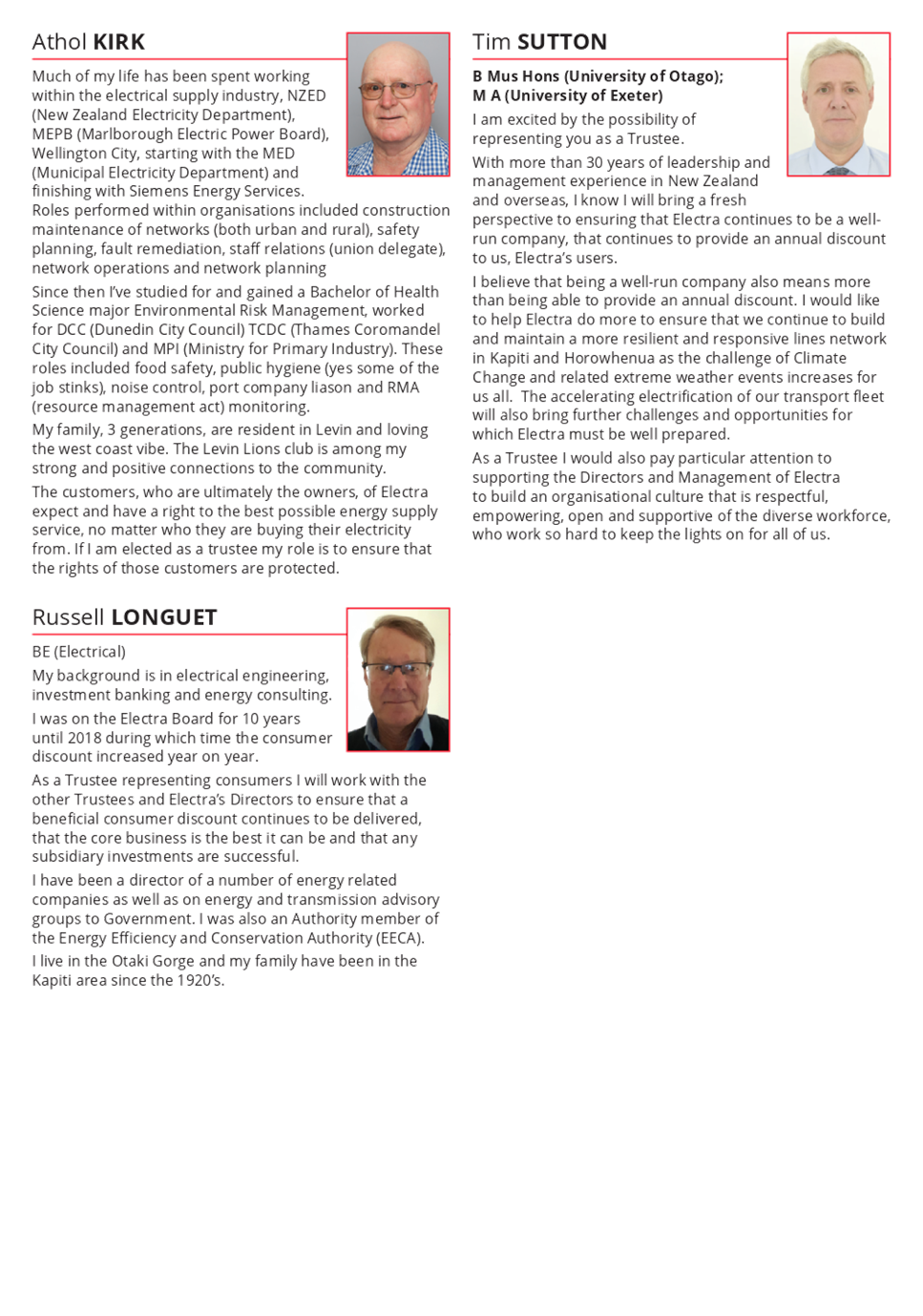
10.7 Appointment
of Electoral Officer
Kaituhi |
Author: Steffi
Haefeli, Manager Democracy Services
Kaiwhakamana
| Authoriser: Janice McDougall, Group Manager People and
Partnerships
Te pūtake |
Purpose
1 To
seek Council’s approval for the appointment of a new Electoral Officer.
He
whakarāpopoto | Executive summary
2 Not
required.
Te tuku haepapa
| Delegation
3 The
Electoral Act 2001 (‘the Act’) requires Council appoint an
Electoral Officer.
4 Section
12 of the Act requires that all Councils have an Electoral Officer appointed at
‘all times’ to exercise the powers and carry out the duties
conferred to the officer by the Act. The Electoral Officer, unless they die,
resign, are dismissed from office, or become incapable of acting in the role,
remain in office until their successor comes into office.
5 Under
Section 13 of the Act, the appointed Electoral Officer must appoint a Deputy Electoral
Officer. The Deputy has all the powers of the Electoral Officer and must carry
out the duties while acting as the Electoral Officer.
6 Once
appointed, under Section 14(1) of the Act the Electoral Officer and other
electoral officials are not subject to the direction of Council in exercising
of powers and carrying out their duties.
Taunakitanga | RECOMMENDATIONS
A. That
Council appoint Dale Ofsoske, Independent Election Services Ltd, as the
Electoral Officer in accordance with section 12 of the Local Electoral Act
2001.
Tūāpapa | Background
7 Ms
Katrina Shieffelbein has been in office as Kāpiti Coast District
Council’s Electoral Officer since September 2018 and has presided over
one triennial election and three bi-elections.
8 Ms
Shieffelbein recently resigned from her position as Electoral Officer. As such,
Council now needs to appoint a replacement Electoral Officer to manage the
local body elections in October 2022.
9 Council
is one of a small number of councils in the region that have continued to
manage their elections in-house, using an STV calculator audited by the
Department of Internal Affairs, as well as a computerised election management
system supported by Election Services.
10 The
Electoral Officer is a statutory officer of council but is not legally required
to be an employee. An election is a complex and high-profile process and
failure to meet the numerous legislative requirements can lead to public
criticism, unforeseen costs or an invalid electoral process.
11 Many
councils are now opting to outsource their electoral officer function to
capitalise on the experience, flexibility and expertise of a dedicated service
provider to undertake all electoral processes correctly with minimal impact on
other Council businesses.
He
kōrerorero | Discussion
12
He
take | Issues
13 Although
the current approach of having an in-house Electoral Officer has served Council
well to date, it is proposed that Dale Ofsoske from Election Services be
appointed as Electoral Officer for Kāpiti Coast District Council with a
member of the Election Services team being appointed as the Deputy Electoral
Officer. Once in office, both must sign a declaration as soon as possible to
cover the next triennium period 2022 – 2025.
14 Katrina
Sheffielbein and other staff would be appointed as Electoral Officials under
the Act to undertake certain functions that must be carried out by staff
including liaising with the Electoral Officer to obtain Council resolutions as
required, assisting with checking key documents (i.e. nominations, public
notices and the candidate handbook), assisting with candidate information
sessions, receiving locally lodged nominations, issuing and receiving special
voting material at selected locations, and to be available on-site on election
day.
15 Dale
Ofsoske has significant experience in the sector having conducted local
authority elections for more than 35 years – for Auckland City Council
since the 1980s and for Election Services since their establishment in 1994. He
is also supported by a team of highly trained election management specialists
that work full-time on elections across New Zealand. Dale was also a founding
member of the SOLGM Electoral Working Party that played a pivotal role in the
development of the Local Electoral Act 2001 and as such his expertise are
recognised nationally.
16 Election
Services currently provide an election service to a number of local authorities
in New Zealand (including in the lower North Island Porirua City Council,
Palmerston North city Council and the Taranaki group of councils). The provider
therefore has a good understanding of the local government environment, both
past and current, and can offer a broad range of skills and experience relevant
to the position.
17 The
main benefits to Council in contracting out its Electoral Officer role to
Election Services are:
17.1 the
ability to free up existing Council staff to concentrate on their core work
requirements, and
17.2 using
the services of an Electoral Officer who is independent, impartial and
possesses a wealth of experience to ensure a smooth and
successful election that meets legislative requirements.
18 In
addition, outsourcing the role to Election Services will assist in managing
business continuity through the current Covid-19 pandemic with the provider
being able to draw on the knowledge and expertise of a team of election staff
in the delivery of core election services.
Ngā
kōwhiringa | Options
19 Dale
Ofsoske, Election Services, is proposed as the preferred provider having worked
with Council on a number of recent projects and thus possessing knowledge and
existing relationships with Kāpiti Coast District Council.
Tangata whenua
20 There
are no tangata whanua considerations.
Panonitanga āhuarangi | Climate change
21 There
are no climate change considerations.
Ahumoni me ngā rawa | Financial
and resourcing
22 There
are no Financial and resourcing considerations
Ture me ngā Tūraru | Legal
and risk
23 The
Council is required by law to have an Electoral Officer in place at all times.
Outsourcing the Electoral Officer function will ensure business continuity in
the provision of electoral management activities to a level expected by the
community, assisting in managing the reputational and legal risks.
Ngā pānga ki ngā kaupapa here | Policy impact
24 There
is no policy impact.
Te whakawhiti kōrero me te
tūhono | Communications &
engagement
Te mahere tūhono | Engagement
planning
25 No
further engagement is required.
Whakatairanga |
Publicity
26 The
appointment of a new Electoral Officer will be notified through the
Council’s usual publicity channels.
Ngā āpitihanga | Attachments
Nil
10.8 Council's
submission on Greater Wellington Regional Council's 2022 Revenue and Financing
Policy
Kaituhi |
Author: Ian
Georgeson, Chief Financial Officer
Kaiwhakamana
| Authoriser: Mark de Haast, Group Manager Corporate Services
Te pūtake |
Purpose
1 This
paper retrospectively reports on Council’s submission to Greater
Wellington Regional Council’s (GWRC) 2022 Revenue and Financing Policy.
We are reporting retrospectively as the timing of the consultation period on
the Policy did not allow us to bring the submission to the Council prior to
submissions closing.
He
whakarāpopoto | Executive summary
2 An
Executive Summary is not required for this paper.
Te tuku haepapa
| Delegation
3 In
accordance with the Governance Structure and Delegations, the Council has the
delegation to retrospectively receive this submission.
Taunakitanga | RECOMMENDATIONS
A. That
the Council note the Submission made to Greater Wellington Regional Council on
its 2022 Revenue and Financing Policy attached as Appendix 1 to this report.
Tūāpapa | Background
4 The
GWRC is reviewing its Revenue and Financing Policy in advance of its 2022-2023
Annual Plan. The changes to the Policy will amend its Long-term Plan 2021-2041[3].
5 GWRC
states in its consultation material that the changes to the policy are being
made to:
… keep it up-to-date and relevant. The changes to the policy keep
it current with
legislation, reduce inefficiencies and make the policy easier to understand and be
utilised in a more
transparent manner.
6 Submissions
to the Policy closed at 5.00pm Wednesday 20 April 2022.
7 Councils
are required by section 101(3)(a) and (b) of the Local Government Act 2002
(LGA) to have a policy in respect of funding their operating and capital
expenditure. Section 101(3) of the LGA states that:
The funding needs
of the local authority must be met from those sources that the local authority
determines to be appropriate, following consideration of,—
a) in relation to each activity to be funded:
i. the
community outcomes to which the activity primarily contributes; and
ii. the
distribution of benefits between the community as a whole, any identifiable
part of the community, and individuals; and
iii. the
period in or over which those benefits are expected to occur; and
iv. the
extent to which the actions or inaction of particular individuals or a group
contribute to the need to undertake the activity; and
v. the
costs and benefits, including consequences for transparency and accountability,
of funding the activity distinctly from other activities; and
b) the
overall impact of any allocation of liability for revenue needs on the current
and future social, economic, environmental, and cultural well-being of the
community.
8 Changes
to the Policy being consulted on fall into three categories and cover the
following activities:
8.1 Changes
to the funding method, including how and where activities will be funded from
across revenue sources:
8.1.1 Regional
Economic Development
8.1.2 Regional
Predator Control Programme
8.1.3 Land
Management
8.1.4 Flood
Protection – Te Kāuru Floodplain Management Plan
8.2 New,
funding lines for activities additional to the GWRC’s Long-term Plan
2021-2041:
8.2.1 Flood
Protection – Waiōhine River Plan
8.2.2 Wellington
Regional Stadium (Sky Stadium)
8.3 Changes
to information in the Policy:
8.3.1 Public
Transport: moving public transport differentials from prescribed policy to the
Funding Impact Statements, to allow greater funding responsiveness to change in
public transport access.
He
kōrerorero | Discussion
9 On
the whole the changes suggested are technical in nature. However, they
cumulatively present an ongoing issue the Council has with GWRC’s
assessment of the appropriateness of its revenue and financing sources and
tools under the overall wellbeing test of section 101(3)(b), previously raised
with GWRC in our submission to its Long-term Plan 2021-2041.
10 Our
primary concerns with the proposed changes to the Policy are the increasing
levels of revenue gathering though the general rate, the subsequent impact this
can have on the overall affordability of the rating burden, and its equitable
distribution given the levels of access to services (benefits received) by
Kāpiti ratepayers in general and in respect to identifiable beneficiaries.
This is particularly the case for Ōtaki residents and ratepayers and more
generally for the high proportion of Kāpiti residents on fixed incomes.
He
take | Issues
11 Matters
raised in our submission covered the following issues:
11.1 The
overarching matter of shifting rating incidence to the general rate. We note
the impact that this has on our ratepayers on fixed and/or low incomes with
respect to their overall wellbeing, and how equitable this move is, given
restrictions in access to some of these services for some of our ratepayer
groups, and in particular, those in the Ōtaki ward. Our submission queries
whether this move has been adequately tested against LGA section 101(3)(b).
11.2 With
respect to three of the activities, Land management, the Stadium rate, and Pest
control, we query that given these activities have direct beneficiaries, why is
the rating incidence moving more to the general rate, or, where there are
differentials (e.g. the Stadium rate), the Ōtaki ward’s differential
should be reduced further, given the reduced access this community has to the
Stadium
11.3 Although
not a change in funding source, we request assurances that the moving of the
differentials for the public transport activity from the Policy to the
‘funding impact statement’ will not impact long-term changes and
improvements to public transport provision to the Kāpiti Coast district,
and the Ōtaki ward, and that the aggregation principle will be applied
equitably across the region.
11.4 We
also note that the timing of the consultation on the Policy has impacted the
Council’s internal processes for providing transparent rating information
to our ratepayers for the 2022/2023 year.
Ngā
kōwhiringa | Options
12 Submissions
on GWRC’s 2022 Revenue and Financing Policy closed 5pm on Wednesday 20
April 2022, with late submissions not being accepted. This timing precluded
bringing a draft submission to the Council prior to the cut-off date. Proposed
changes were analysed, and a submission developed. The analysis raised similar
issues as we had encountered with GWRC’s Long-term Plan 2021-2041. Our
current submission therefore reiterated these points.
13 Mark
de Haast, Group Manager Corporate Services, spoke to the Council’s
submission at the GWRC Hearing on 17 May 2022.
Tangata whenua
14 The
Council did not engage directly with iwi on this submission.
15 The
issues of equity in rates collection are particularly acute for the Ōtaki
ward. Our concerns over the moving of rating incidence to the general rate, particularly
in communities with low and fixed incomes, and where access to some of the
services are problematic, reflects this.
Panonitanga āhuarangi | Climate change
16 The
Council declared a climate emergency in May 2019, and climate change adaptation
was identified as a key issue in the Council’s Long-term Plan
2021–41 (p29).
17 GWRC
Revenue and Financing Policy has no direct implications for
Council’s climate change response. However, indirectly, some of the
activities included for funding changes have climate change management
implications (Land management, Flood protection, Public Transport).
Ahumoni me ngā rawa | Financial
and resourcing
18 As
noted, our submission raised the timing of these changes. Changes to Revenue
and Financing Policy usually occur alongside Long-term Plan processes.
Undertaking the review and changes as part of a subsequent annual plan process
and providing information to the Council at this late stage will impact our
internal processes and ability to transparently reflect all proposed charges in
the rating system with respect to ratings impacts for our ratepayers for the
2022/2023 year.
Ture me ngā Tūraru | Legal
and risk
19 GWRC’s
review of its Revenue and Financing Policy is within its legal mandate. There
are no legal implications raising from the Policy change of the Council’s
submission on it. There is a risk to perceived transparency and accountability
by district ratepayers for Council arising from the imposition and timing of
the changes and the Council’s ability to publicise them.
Ngā pānga ki ngā kaupapa here | Policy impact
20 Policy
considerations for the Council arising from GWRC’s Policy changes are
canvassed in the Discussion above and resolve around rating equity issues and
access to services.
Te whakawhiti kōrero me te
tūhono | Communications &
engagement
Te mahere tūhono | Engagement
planning
21 An
engagement plan is not required for this submission.
22 While
the issues related to funding and rating are significant for the district, the
Council is not the decision-making body, and this specific submission is
considered to have a low level of significance.
Whakatairanga |
Publicity
23 The letter sent in
submission to GWRC will be made available on the Council’s Submissions
we’ve made website once noted by the Council.
Ngā āpitihanga | Attachments
1. Submission
to Greater Wellington Regional Council's 2022 Revenue and Financing Policy ⇩ 
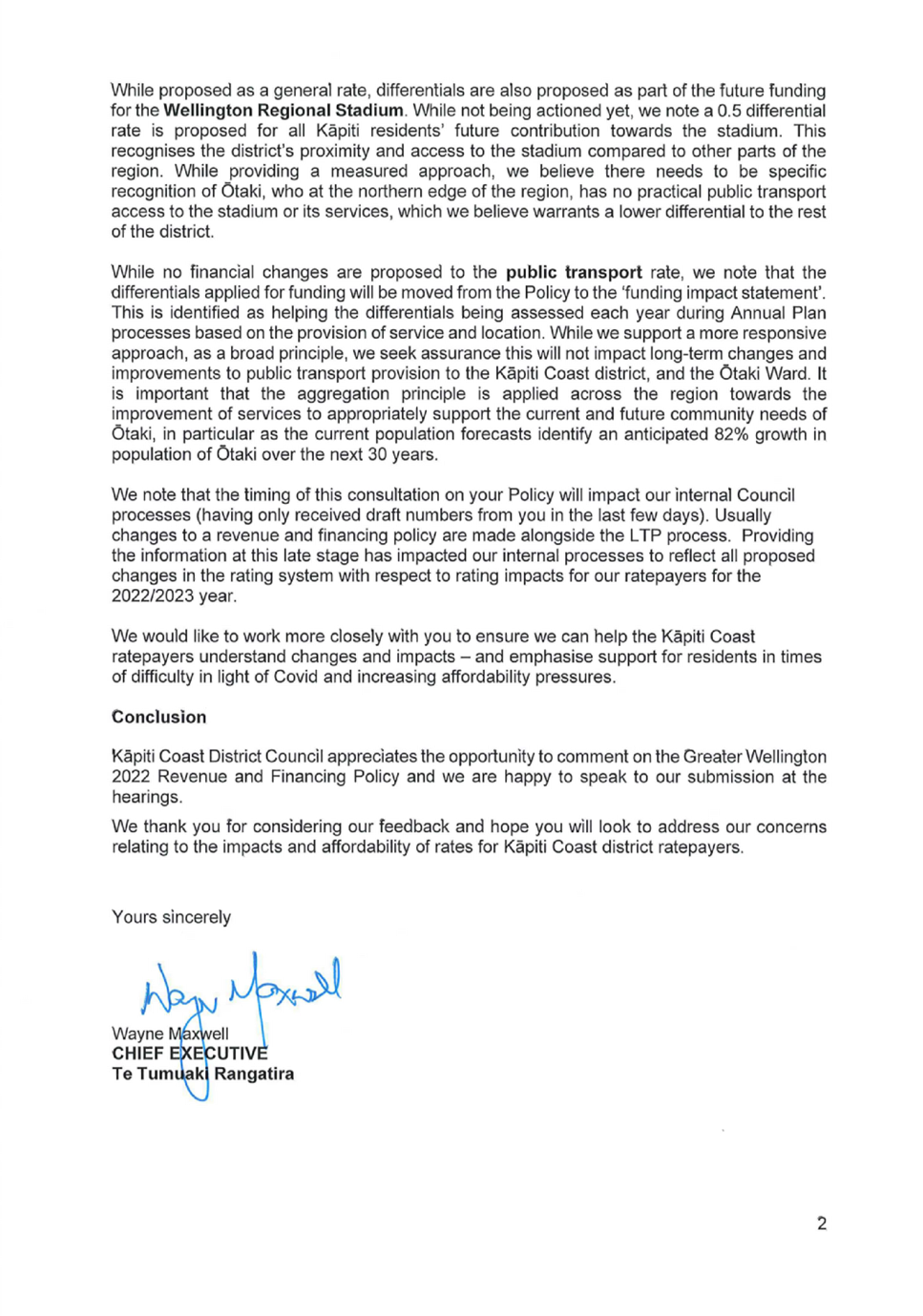
10.9 Rates
Remission for Land Protected for Natural or Cultural Conservation Purposes
Kaituhi |
Author: Andrew
Mckay, Programme Manager - Biodiversity and Landscapes
Kaiwhakamana
| Authoriser: Mike Mendonca, Acting Group Manager Place and
Space
Te pūtake |
Purpose
1 This report tables the rates remission applications for
Land Protected for Natural or Cultural Conservation Purposes for the 2021/22
year and seeks approval for recommended allocations.
He
whakarāpopoto | Executive summary
2 This report tables the rates remission applications for
Land Protected for Natural or Cultural Conservation Purposes for the 2021/22
year and seeks approval for recommended allocations.
Te tuku haepapa
| Delegation
3 The Council has the delegation to make this decision.
Taunakitanga | RECOMMENDATIONS
A. That the Council approves the amounts of rates remission to
the properties set out in Appendix 2 of this report in accordance with
Council’s Policy for Rates Remission for Land Protected for Natural or
Cultural Conservation Purposes.
Tūāpapa | Background
4 The Long Term Plan 2021-41 references a policy for Rates
Remission for Land Protected for Natural or Cultural Conservation Purposes. The
detail of this policy is included in the Long Term Plan as Part 7 of the Rates
Remission Policy, and attached as Appendix 1 to this report.
5 Part 7 of the Rates Remission Policy supports the
provisions of the Kāpiti Coast District Plan regarding incentives for
heritage feature management and protection. It recognises that most
heritage features are already protected by rules in the District Plan and
encourages landowners to maintain, enhance and protect heritage features by
offering a financial incentive.
6 The granting of a rates remission as an incentive for
encouraging the protection and management of heritage features is consistent
with Council’s responsibilities under the Resource Management Act 1991
and the Historic Places Act 1993.
7 The 2021/22 budget for Rates Remission for Land Protected
for Natural or Cultural Conservation Purposes is $38,070.
8 A total of 105 ratepayers benefited from the policy in
2020/21. Having applied successfully for rates remission, ratepayers may
continue receiving it provided they meet the rates remission policy criteria.
The owners of the properties listed in Attachment 2 who received remission in
2020/21 are recommended to receive remission in 2021/22 on that basis.
He
kōrerorero | Discussion
9 The
following paragraphs discuss the principles of rates remission, present the
proposed amounts of remission in a table format (Table 1), and make a
recommendation on which properties receive rates remission in 2021/22.
10 The
rates remission programme’s guiding principle is recognition of the
conservation efforts of ratepayers and the positive contribution their actions
make to protecting the district’s cultural and biodiversity heritage.
11 The
owners of these properties are often motivated solely by the desire to protect
and manage their environment, and their actions are voluntary. Many are keen
conservationists while others may fence off a bush remnant as the pasture gain
is negligible or to better manage stock movement. Whatever their motivation,
addressing significant pressures such as stock grazing or noxious pests has a
positive impact on the Kāpiti Coast environment.
12 Landowners
could use the rates remission for the upkeep of stock-proof fencing or pest
animal and weed control. However, in most instances the amount of remission is
far less than the true cost of these protective measures.
13 Rates
remission is an added incentive for landowners to respect the conservation
values of parts of their properties that have a legal protection mechanism in
place. Further, rates remission is one of the non-regulatory incentives for
protecting and maintaining sites of conservation value discussed as part of the
Proposed District Plan consultation process. The provision of rates remission
also provides a good basis for on-going partnerships between Council and
landowners.
14 Rates
remission amounts are calculated according to the size of the heritage feature
as shown in Table 1. This method is coarsely related to the level of
contribution towards the environment as larger areas of forest or wetland are
generally more significant. This does not take into account, however, the
presence of rare and endangered species or the amount of time and effort put
into management.
15 The
rates remission amounts in Table 1 have been increased from the 2020/21
financial year by using a consumer price index (CPI) figure of 3.6%.
16 Table 1 – Rates Remission Amounts
|
Size
of protected area/feature (ha)
|
Rates
Remission ($)
|
|
Up to 1.0 ha
|
$136
|
|
1.001 – 5.0 ha
|
$271
|
|
5.001 – 10.0 ha
|
$409
|
|
10.001 – 20.0 ha
|
$543
|
|
20.001 – 30.0 ha
|
$679
|
|
30.001 – 40.0 ha
|
$815
|
|
40.001 – 50.0 ha
|
$951
|
|
50.001 – 70.0 ha
|
$1,088
|
|
70.001 – 100.0 ha
|
$1,170
|
|
More than 100 ha
|
$1,363
|
He
take | Issues
17 Four
new applications for Rates Remission for Land Protected for Natural or Cultural
Conservation Purposes were received for the 2021/22 financial year and all are
recommended for approval.
18 In
addition one property is included that successfully applied in the 2019/20
financial year but was not added into the rates remission system and so has
subsequently missed out on remission payments.
19 The
properties that are the subjects of new applications are listed (marked with an
asterisk) with other recommendations in Appendix 2. A total of 109 properties
are recommended for remission.
20 One
property has been removed from the Rates Remission for Land Protected for
Natural or Cultural Conservation Purposes programme as it was subdivided and no
longer meets the Rates Remission Policy criteria.
21 37
Sandown Road, Te Horo
22 This
property straddles part of a wetland area. A restoration planting plan is
currently being developed along with pest animal and weed control. Fish surveys
are taking place in May 2022.
23 Only
around 3% of wetlands remain in the Wellington region and so protecting these
areas is of critical importance.
24 524
State Highway 1, Paraparaumu
25 This
property contains a large portion of ecological site K071 which is also a Queen
Elizabeth II National Trust covenant. K071 is a representative example of
kohekohe forest that is uncommon on lowland within Foxton ecological district,
and much reduced in Wellington region.
26 The
owner carries out pest animal and weed control.
27 69
Aston Road, Paraparaumu
28 This
is a neighbouring property to 524 State Highway 1, Paraparaumu and shares the
forest which is covered by ecological site K071, which is also a Queen
Elizabeth II National Trust covenant. K071 is a representative example of
kohekohe forest that is uncommon on lowland within Foxton ecological district,
and much reduced in Wellington region.
29 The
owner carries out pest animal and weed control.
30 188
Ngarara Road, Waikanae
31 The
property owner has been restoring a wetland on their property for a number of
years, adjacent to the Kaiwaru Creek which drains into the Te Harakeke Wetland
(Ecological Site K066).
32 The
owner carries out pest animal and weed control as well as planting.
33 1313
Otaki Gorge Road, Otaki
34 This
property is part of ecological site K017 – Tararua Ranges and foothills.
K017 is the largest area of native bush/wilderness in Kapiti.
35 This
property was originally approved in the 2019/20 financial year but was not
added into the rates remission system due to administrative error. It is
recommended that this error is corrected by backpaying the relevant financial
years. This means $655 for 2019/20, $655 for 2020/21 and $679 for 2021/22.
Ngā
kōwhiringa | Options
Tangata whenua
36 There are no tangata whenua considerations.
Panonitanga āhuarangi | Climate change
37 By
encouraging landowners to protect and enhance natural ecosystems, Rates
Remission for Land Protected for Natural or Cultural Conservation Purposes
contributes to the vision and principles of the Climate Emergency Action
Framework by directly sequestering and storing carbon.
Ahumoni me ngā rawa | Financial
and resourcing
38 The total amount of rates remission allocated in 2021/22
would be $33,863, within the 2021/22 budget of $38,070.
Ture me ngā Tūraru | Legal
and risk
39 There are no legal considerations.
Ngā pānga ki ngā kaupapa here | Policy impact
40 The granting of Rates Remission for Land Protected
for Natural or Cultural Conservation Purposes is in
accordance with Part 7 of the Rates Remission Policy (Attachment 1) contained
in the Long Term Plan 2021-48.
Te whakawhiti kōrero me te
tūhono | Communications &
engagement
41 This matter has a low level of significance under
Council’s Significance and Engagement Policy.
Te mahere tūhono | Engagement
planning
42 Engagement
planning it not required for the contents of this report.
Whakatairanga |
Publicity
43 Advertising and
publicity channels that will be not be used to communicate the decisions in
this report.
Ngā āpitihanga | Attachments
1. Rates
Remission Policy 2021 ⇩ 
2. Properties
recommended to receive Rates Remission for Land Protected for Natural or
Cultural Conservation Purposes in 2021/22, and recommended amounts ⇩ 
10.10 Notice of Motion
- Peka Peka Interchange
I, Councillor James Cootes, give notice that at the next
Meeting of Council to be held on 26 May 2022, I intend to move the following
motion:
Rationale
1 On
the 24th of January 2019 Waka Kotahi announced that it would not be progressing
an interchange at Peka Peka https://www.nzta.govt.nz/media-releases/peka-peka-interchange-not-proceeding/
2 This
decision was supported by a business case that many in the community viewed as
flawed in that it had several errors in its assumptions. For example it stated
the area was “void of employment, business or significant tourism
activity”* whereas there are several employers in the area, for example
Ruth Pretty Catering and Sudbury.
*reference
https://www.nzta.govt.nz/assets/projects/connecting-peka-peka/peka-peka-connectivity-single-stage-business-case-20181015.pdf
3 Following
Waka Kotahi’s decision the group “Finish our Road” or FoR
formally requested that the Ōtaki and Waikanae Community Boards support
Notice of Motions to be put to council. Those motions were passed at the
Waikanae and Ōtaki Community Board meetings and then placed on the council
agenda 23rd May 2019 under item 12 Reports and Recommendations from Standing
Committees and Community Boards (PP-19-784). The motions were put to the
council but rather than recommending the motion, council simply noted it in
error (Pg10) https://www.kapiticoast.govt.nz/media/fvmalpit/council-23-may-2019.pdf
4 It
is important to note that throughout this time council staff have, where
possible, supported the groups actions through several meetings and the supply
of technical information.
5 However,
due to the error that occurred in the original motion being noted and not
“recommended”, FoR have requested the following amended motion be
put and so I submit the following.
I commend this Notice of Motion to Council.
|
Motion
That the
Kāpiti Coast District Council
6 Notes
the Waka Kotahi Single Stage Business Case for Peka Peka connectivity and its
decision not to approve the proposed investment; and
7 Notes
the community believe they have identified inadequacies with the Business
Case but notwithstanding it shows that by not proceeding:
• With
the opening of the Peka Peka to Otaki Expressway 2300 vehicle movements a day
between Waikanae and Peka Peka Interchanges will be required to use local
roads to access the Expressway, this is a significant increase from the
current vehicle movements on these roads;
• Access
times to and from south of Waikanae are increased for some of the Peka Peka
and Te Horo communities; and
8 Notes
the community considers the costs for acceptable connectivity at Peka Peka
are seriously overstated in the Waka Kotahi Single Stage Business Case
and the costs to the ratepayers of using local roads have not been adequately
considered by Waka Kotahi;
• In
particular the avoidable adverse impact on safety, the environment and public
health arising from increased traffic through Waikanae that could be on the
Expressway is simply not addressed;
9 Supports
in principle investment by Waka Kotahi to provide south facing connectivity
at Peka Peka to make best use of the Expressway investment, improve safety
and avoid the costs to the community of using local roads; and to that end;
10 Agrees
to include this issue and the further impacts of ongoing growth in the North
Waikanae, Peka Peka and Te Horo areas in the KCDC Growth Strategy,
11 Supports
ongoing work by the community to identify the errors and inadequacies in the
Waka Kotahi business case within councils existing resources. Noting existing
information as previously provided.
• In
particular to work with the community to include, as appropriate, the
outcomes from any future adopted business case in implementation work on the
Growth Strategy.
12 Registers
an interest with Waka Kotahi for a future public works requirement for any
surplus land associated with a proposed Peka Peka interchange.
Signed: Mayor K Gurunathan Signed:
Cr James Cootes Signed: Cr
Gwynn Compton
  
Signed: Deputy
Mayor Janet Holborow Signed: Cr
Martin Halliday Signed:
Cr Angela Buswell   
|
|
|
Appendices
Nil
11.1 Confirmation
of minutes
Author: Fiona
Story, Senior Advisor Democracy Services
Authoriser: Morag
Taimalietane, Principal Advisor
|
Taunakitanga |
Recommendations
That the minutes of the Council
meeting of 7 April 2022 be accepted as a true and correct record.
That the minutes of the Council
meeting of 14 April 2022 be accepted as a true and correct record
|
Appendices
1. Confirmation
of Minutes - Council meeting 7 April 2022 ⇩ 
2. Confirmation
of Minutes - Council meeting 14 April 2022 ⇩ 

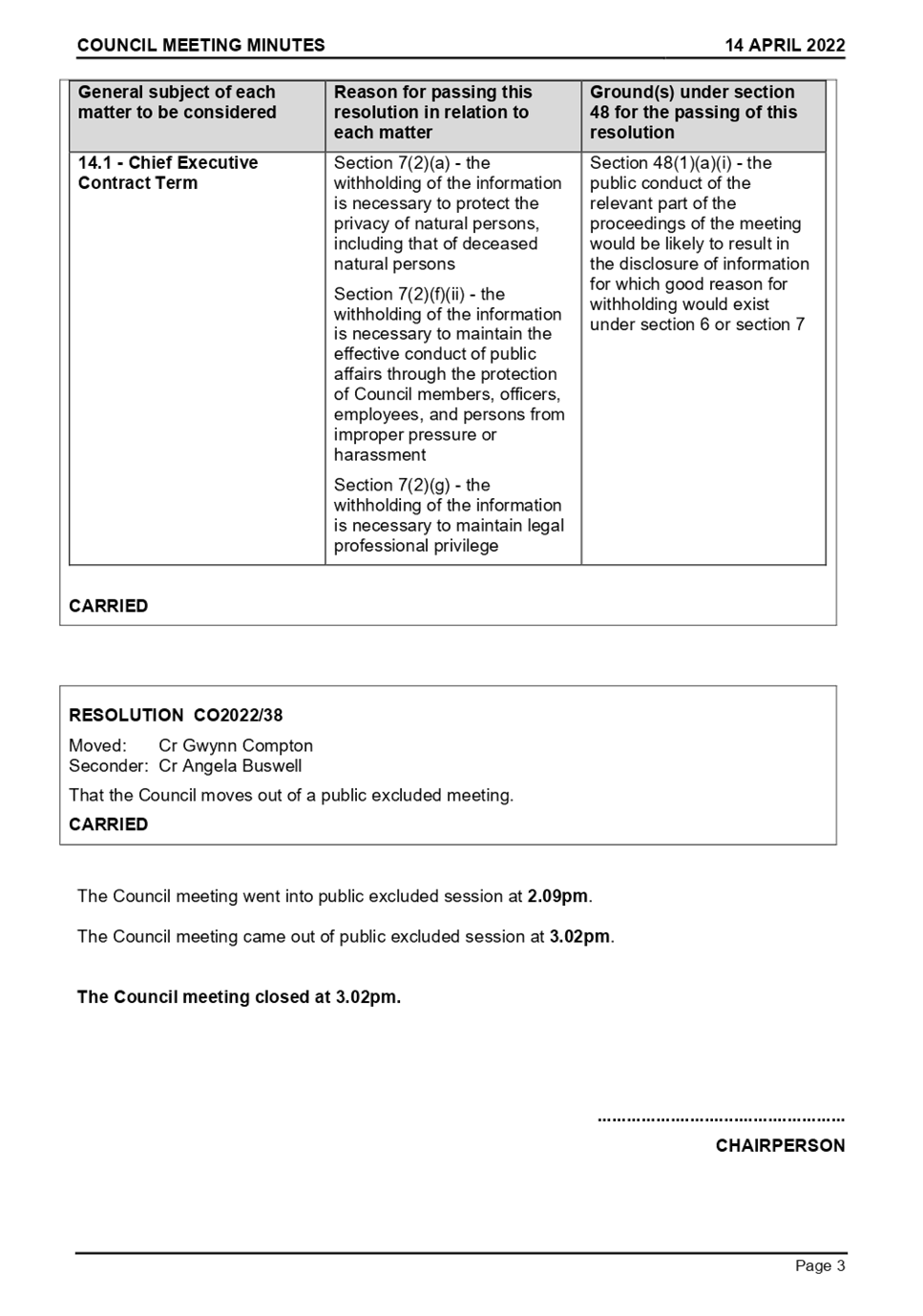
14 Public
Excluded Reports
Resolution
to Exclude the Public
|
PUBLIC EXCLUDED ReSOLUtion
That, pursuant to Section 48 of the Local Government
Official Information and Meetings Act 1987, the public now be excluded from
the meeting for the reasons given below, while the following matters are
considered.
The general subject matter of each matter to be considered
while the public is excluded, the reason for passing this resolution in
relation to each matter, and the specific grounds under section 48(1) of the
Local Government Official Information and Meetings Act 1987 for the passing
of this resolution are as follows:
|
General subject of each
matter to be considered
|
Reason for passing this
resolution in relation to each matter
|
Ground(s) under section 48
for the passing of this resolution
|
|
13.1 - Confirmation of
public excluded minutes
|
Section 7(2)(a) - the withholding of the information is
necessary to protect the privacy of natural persons, including that of
deceased natural persons
Section 7(2)(f)(ii) - the withholding of the information
is necessary to maintain the effective conduct of public affairs through
the protection of Council members, officers, employees, and persons from
improper pressure or harassment
Section 7(2)(g) - the withholding of the information is
necessary to maintain legal professional privilege
|
Section 48(1)(a)(i) - the public conduct of the relevant
part of the proceedings of the meeting would be likely to result in the
disclosure of information for which good reason for withholding would exist
under section 6 or section 7
|
|


































